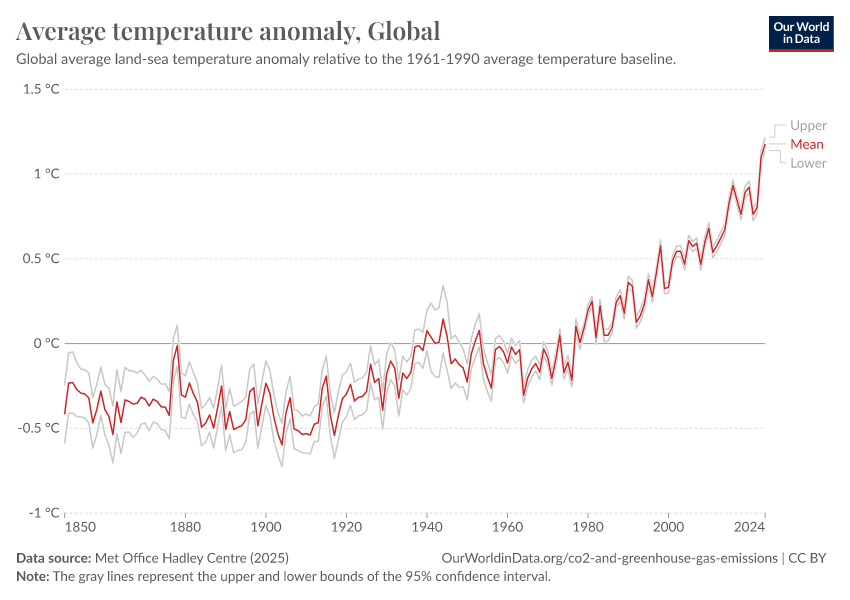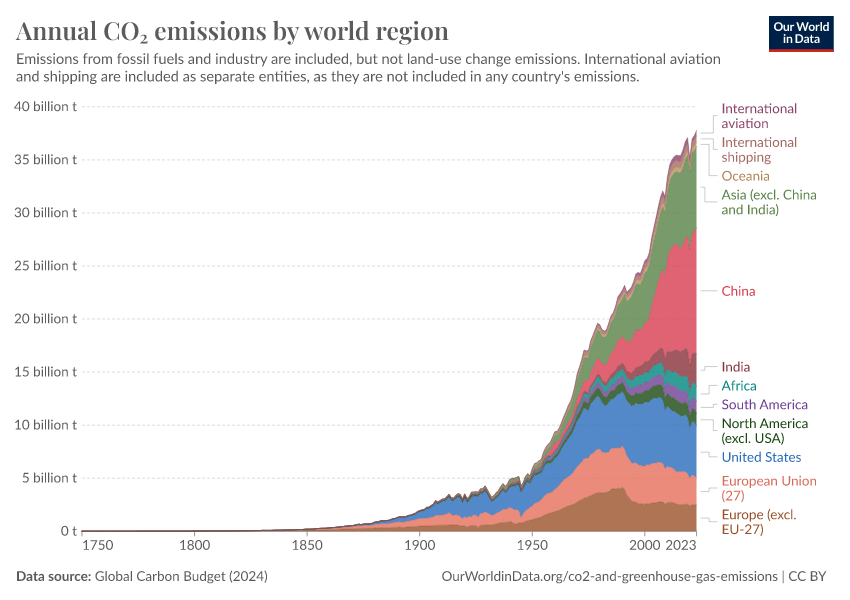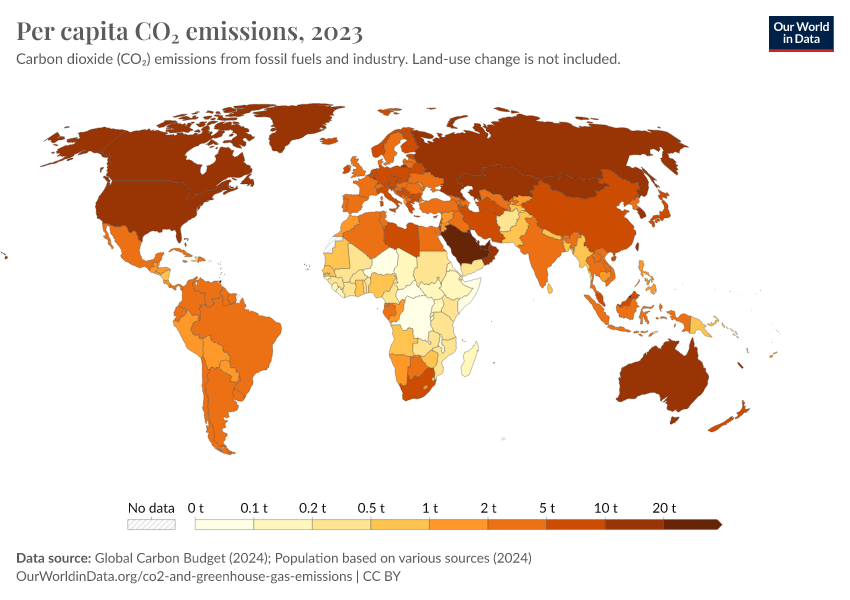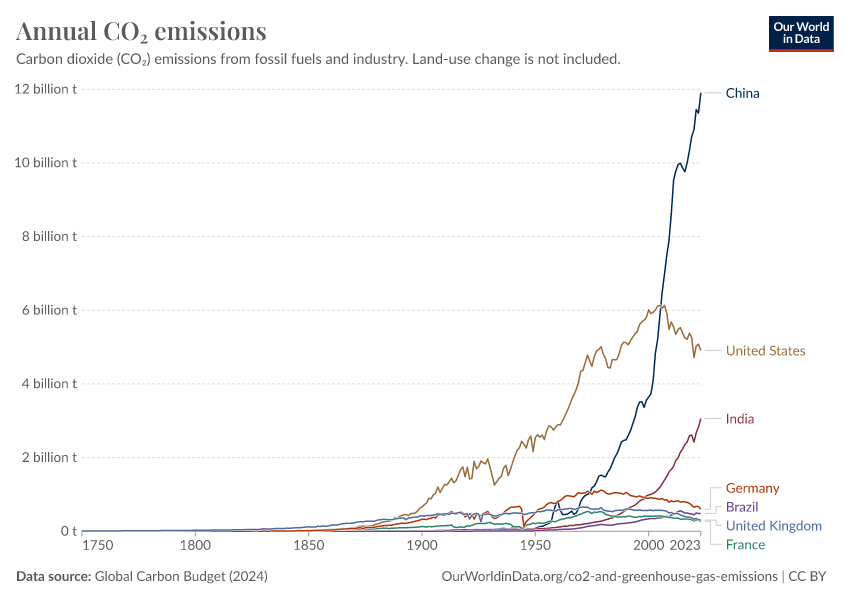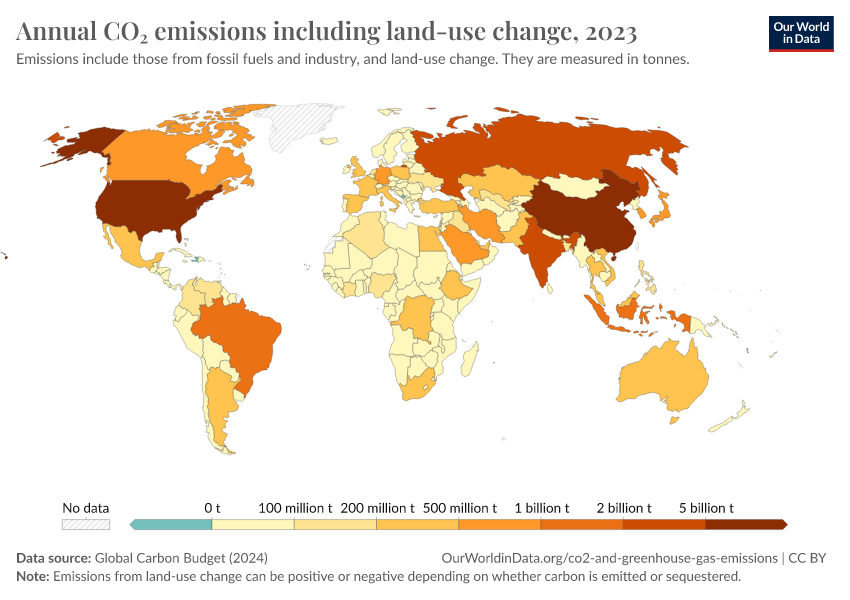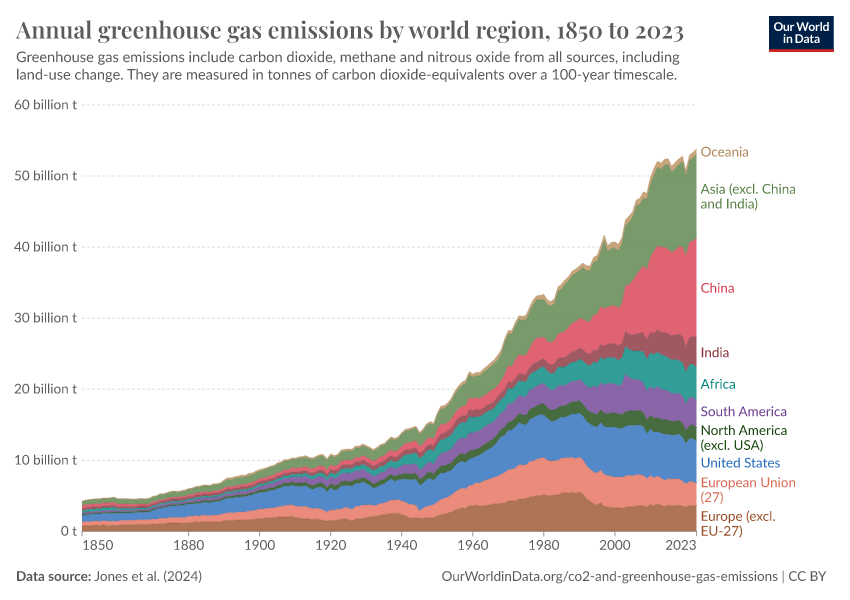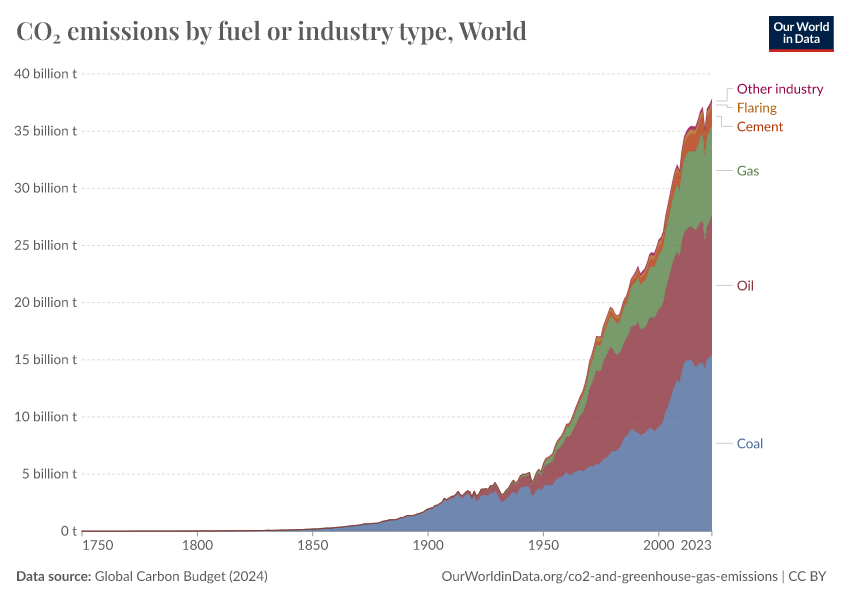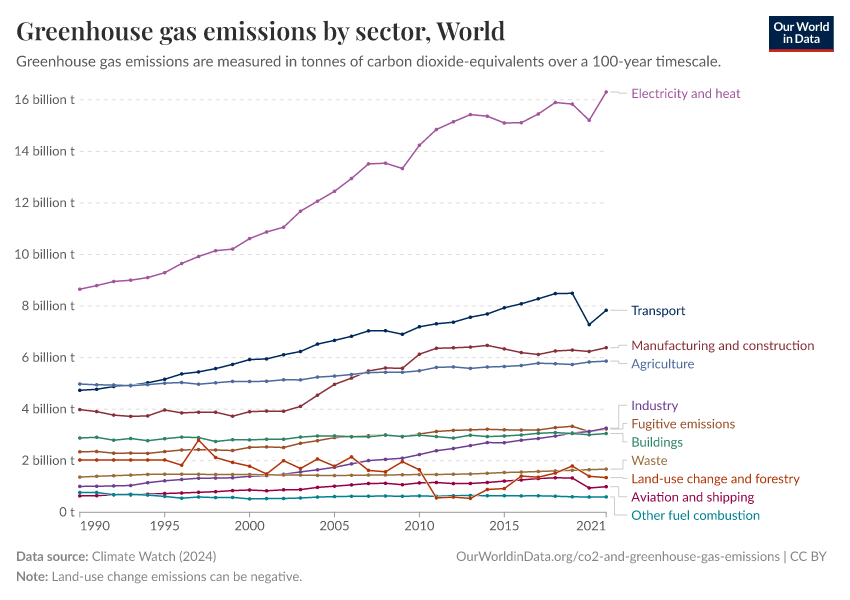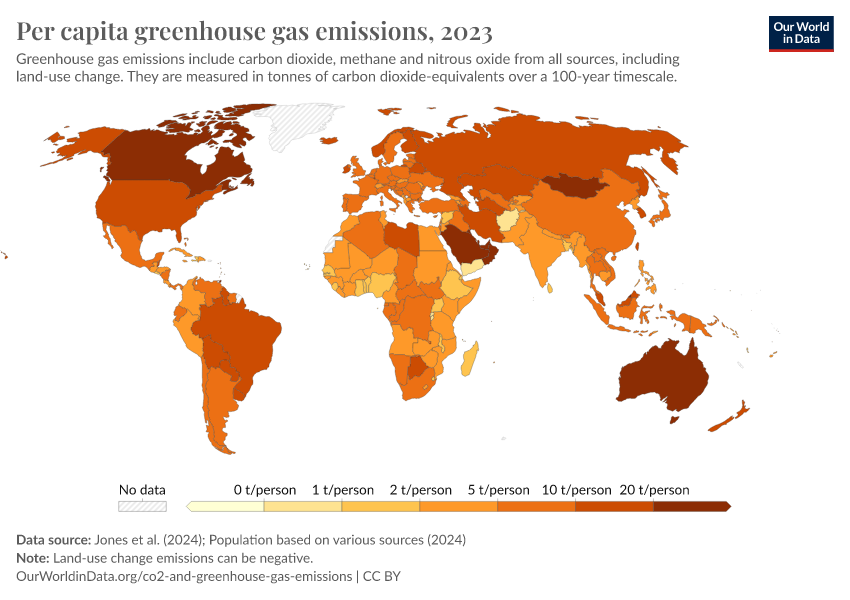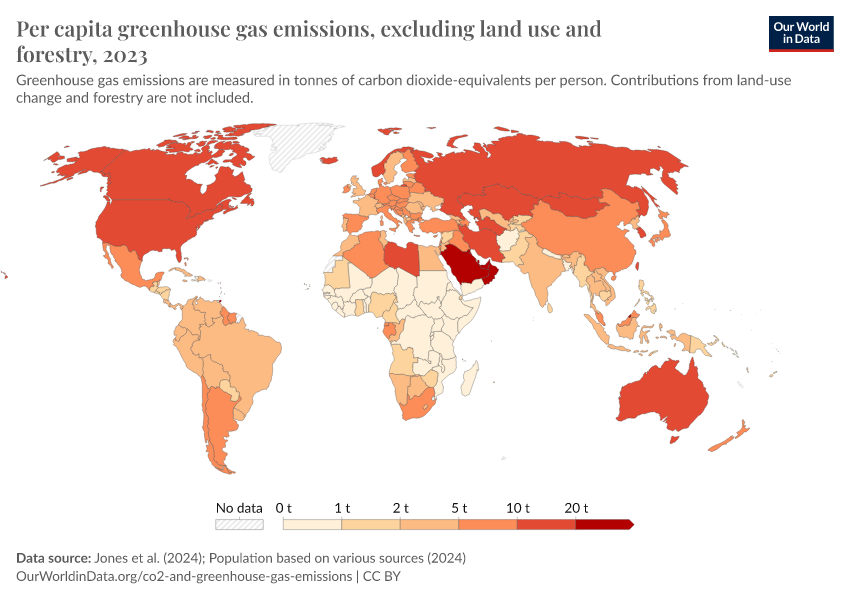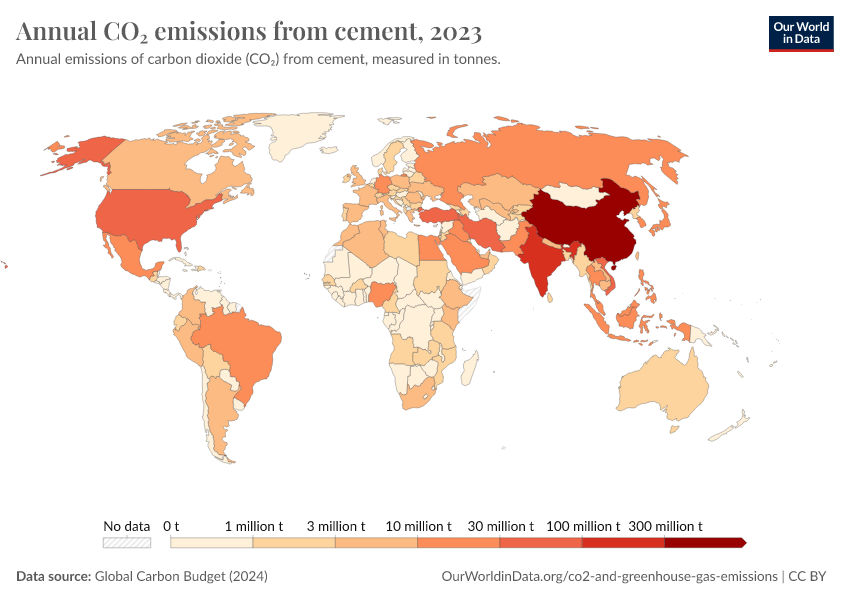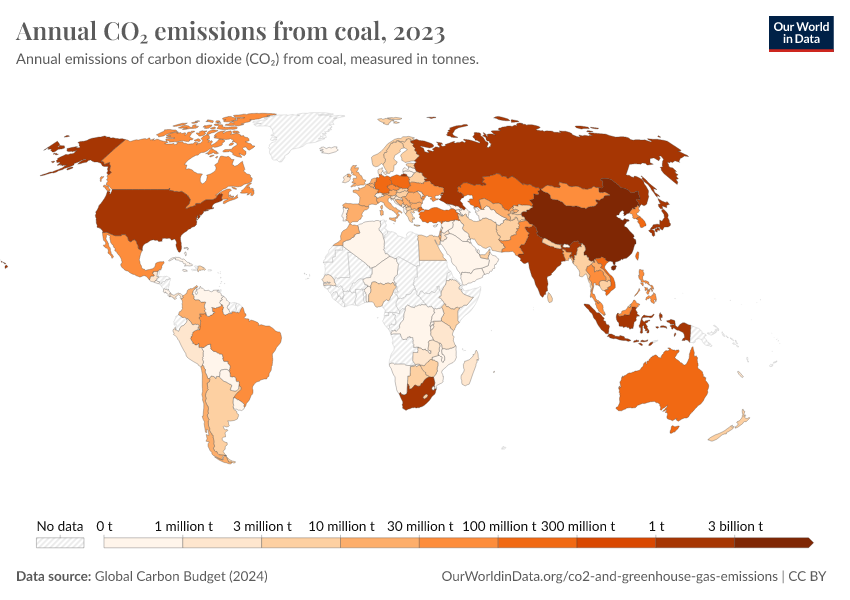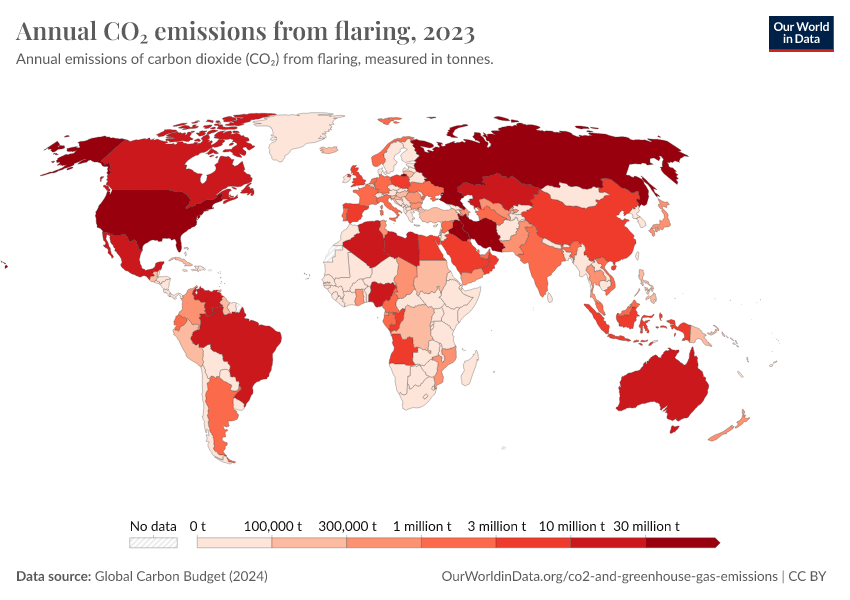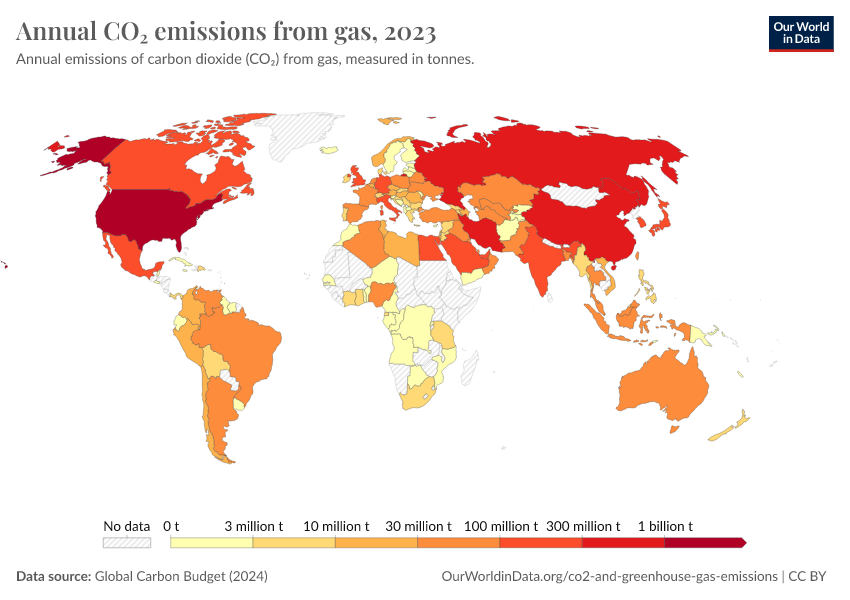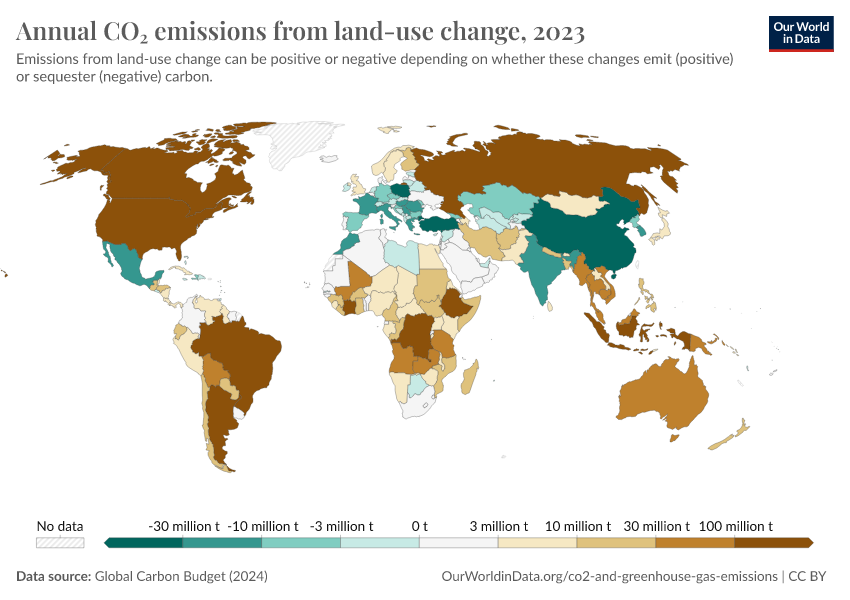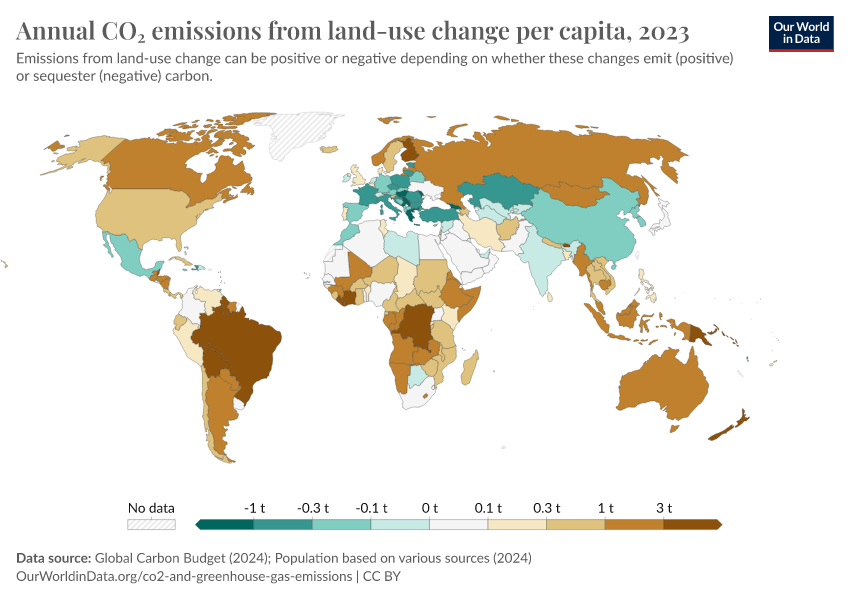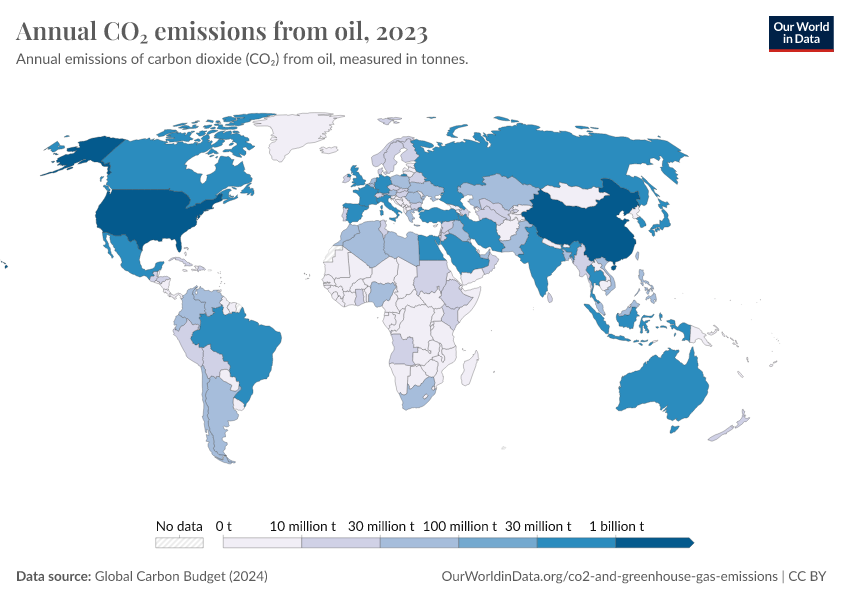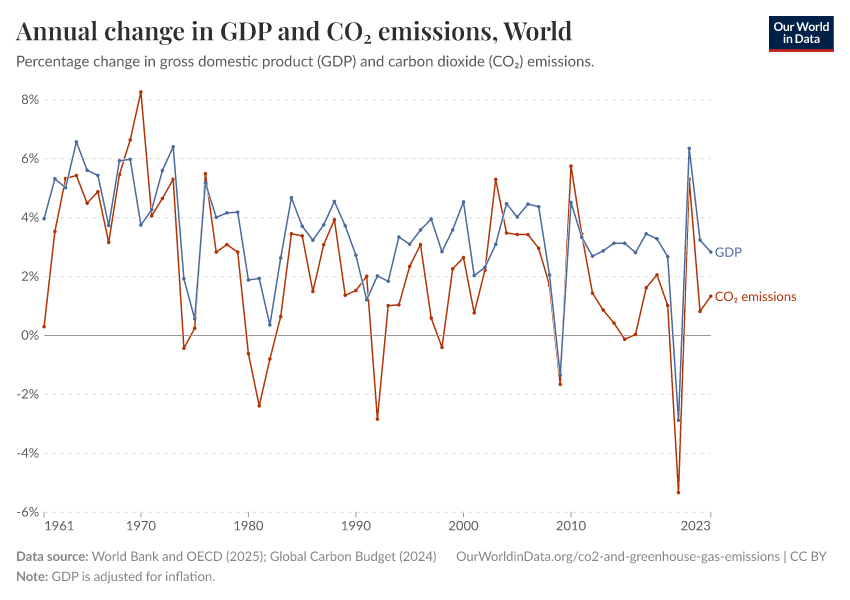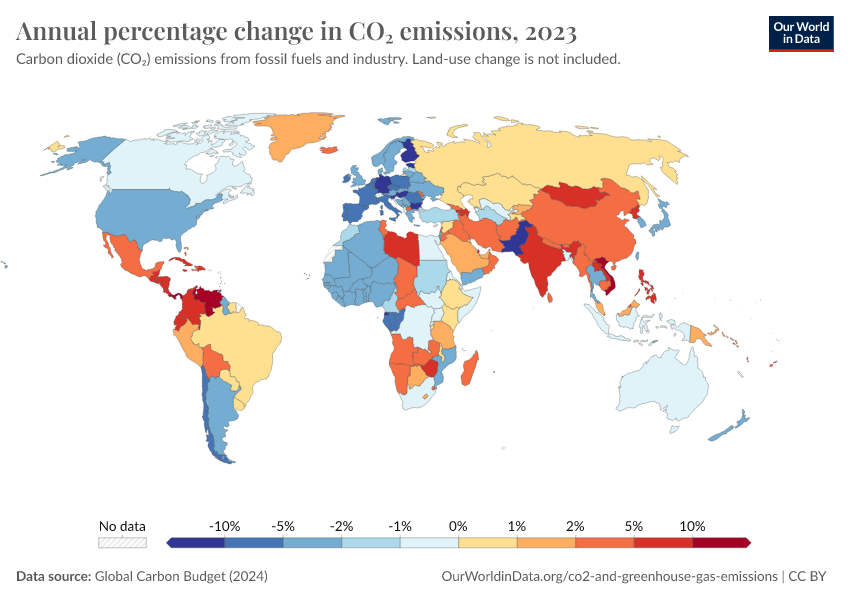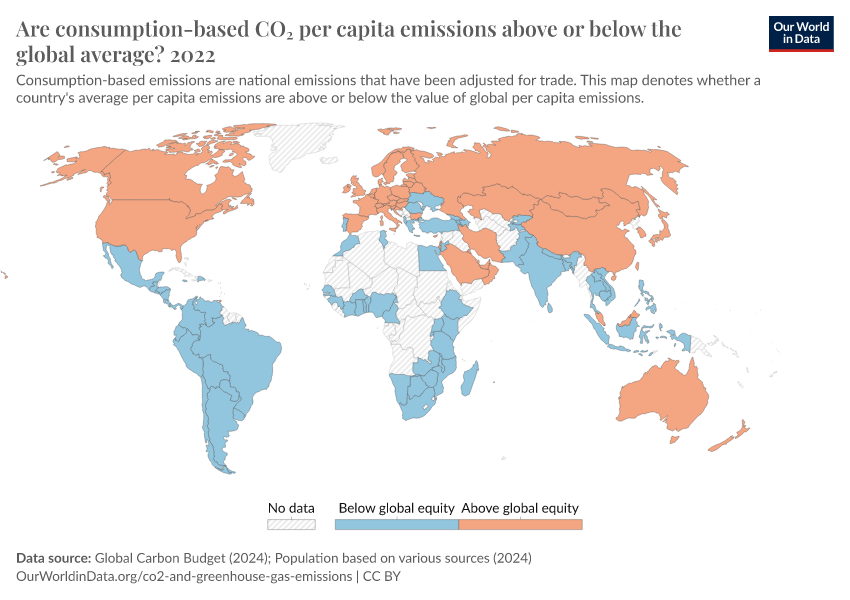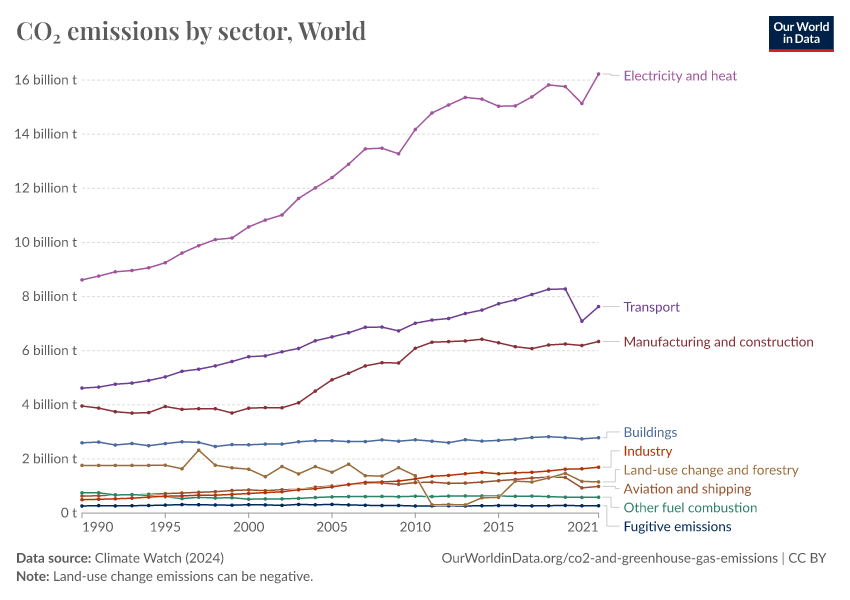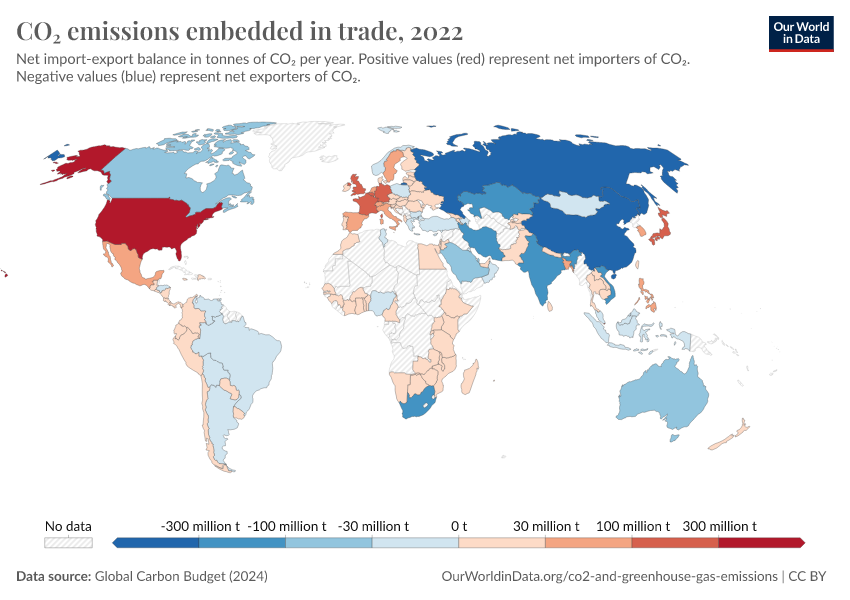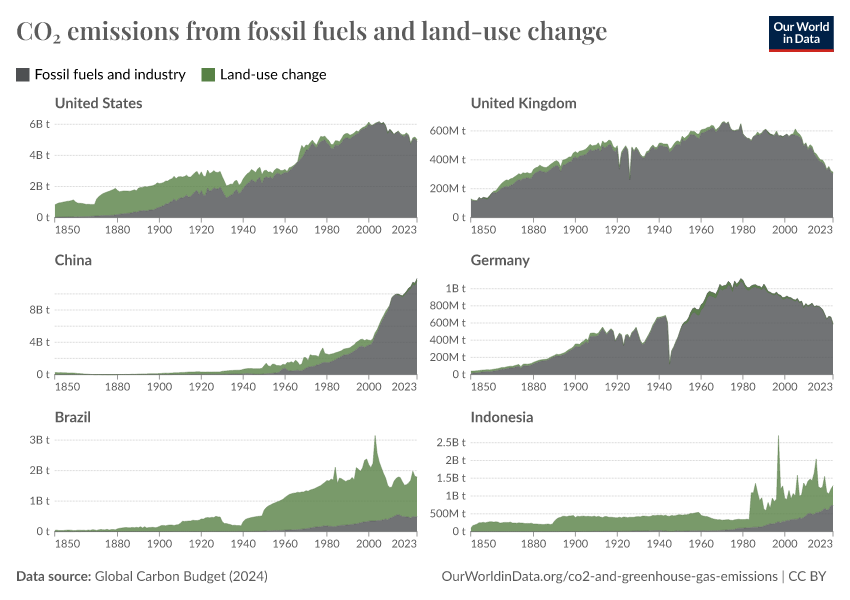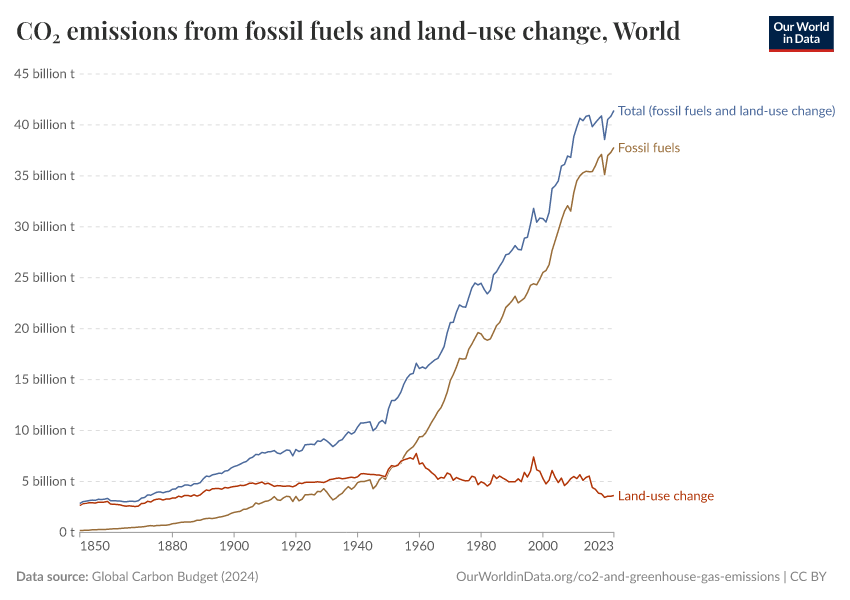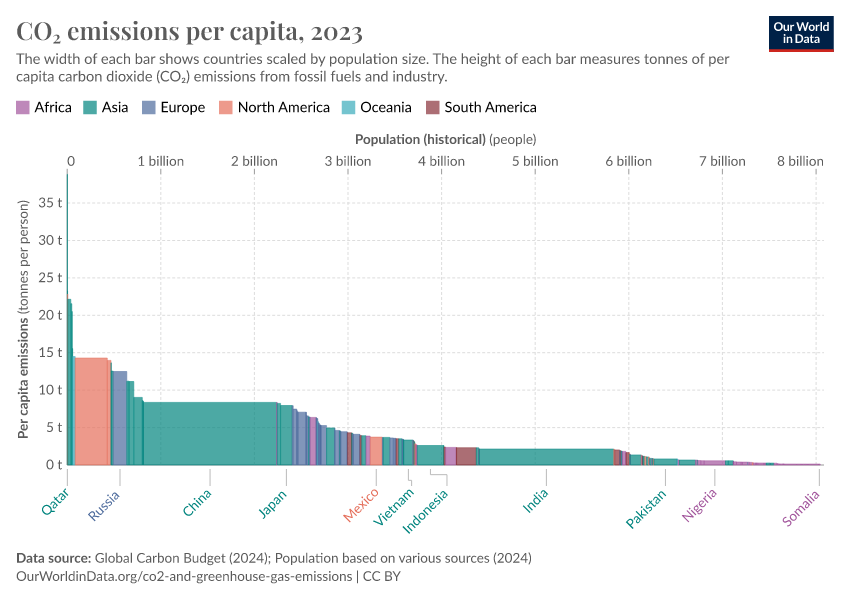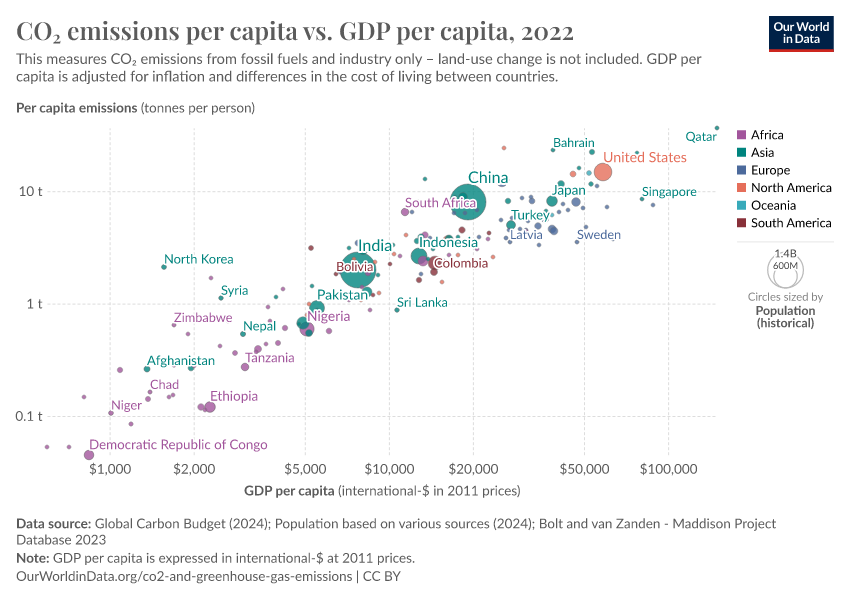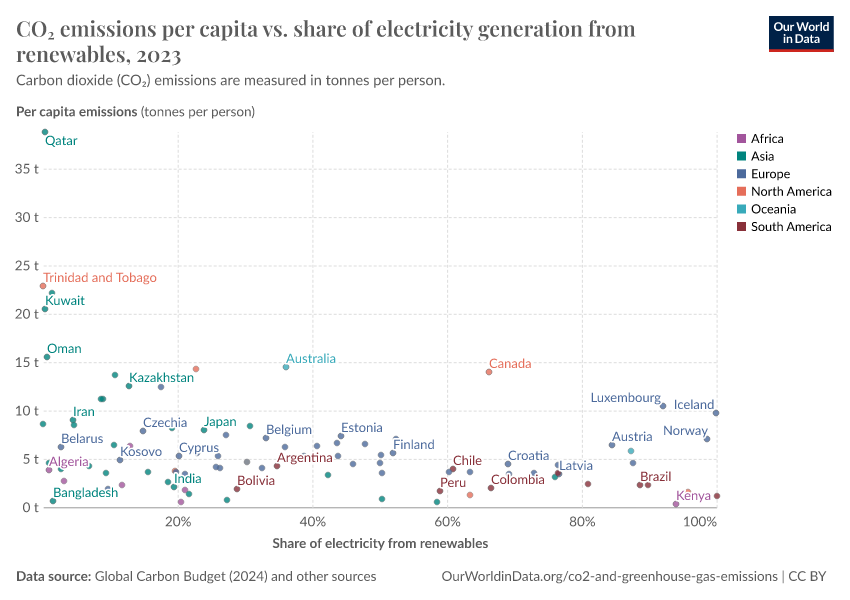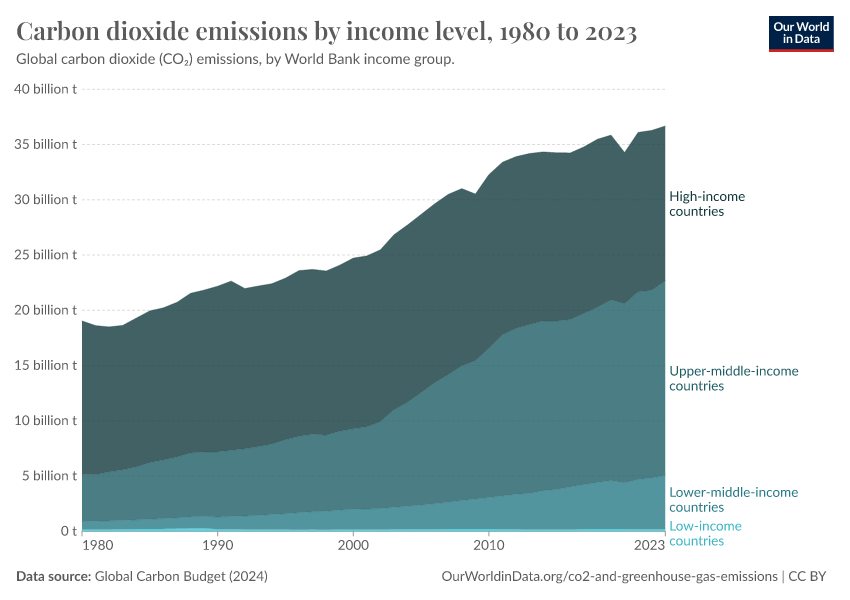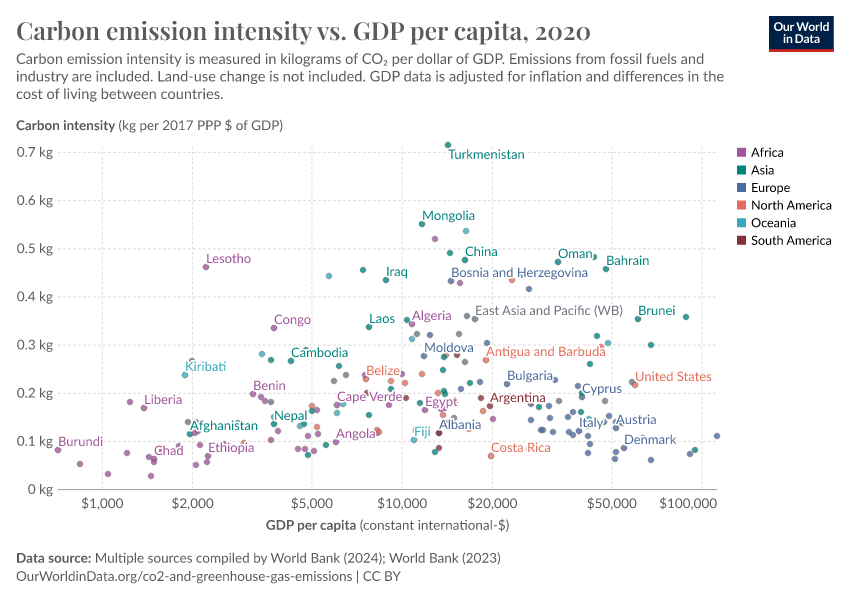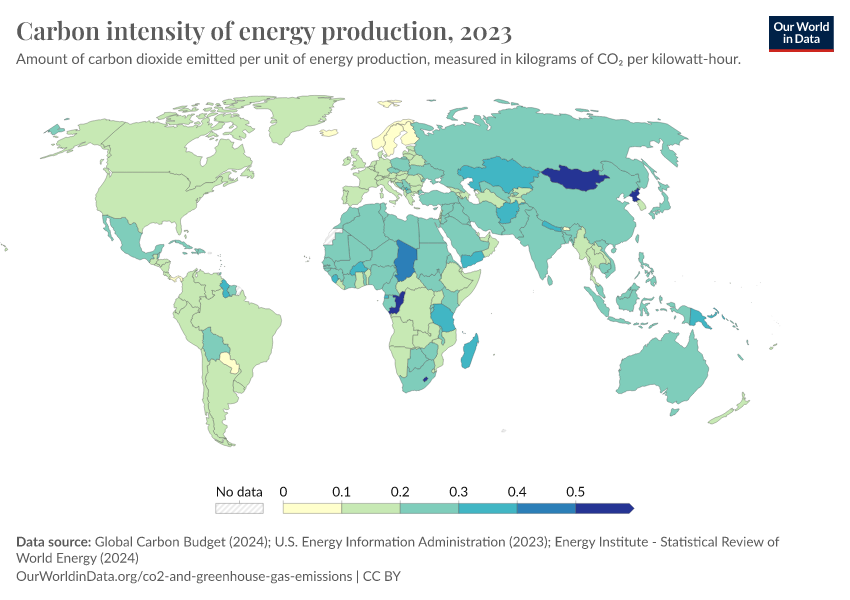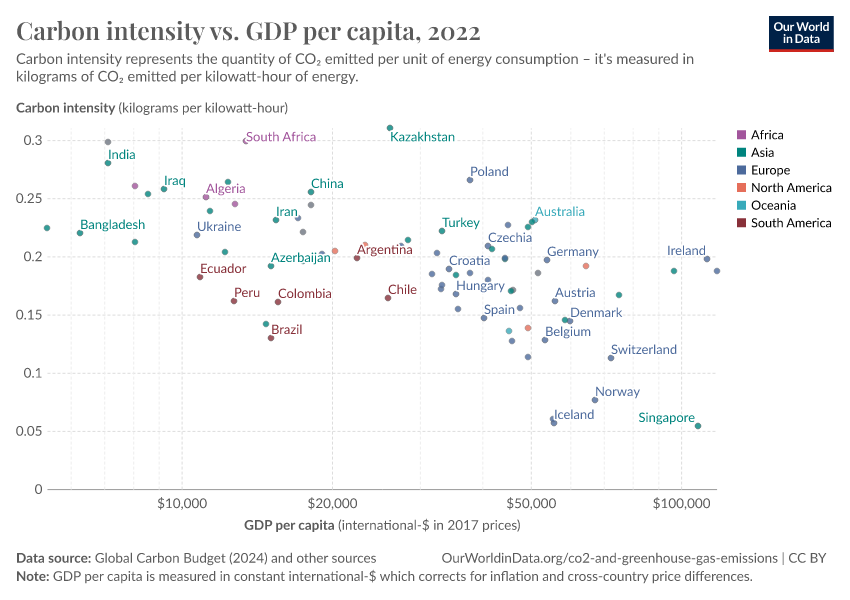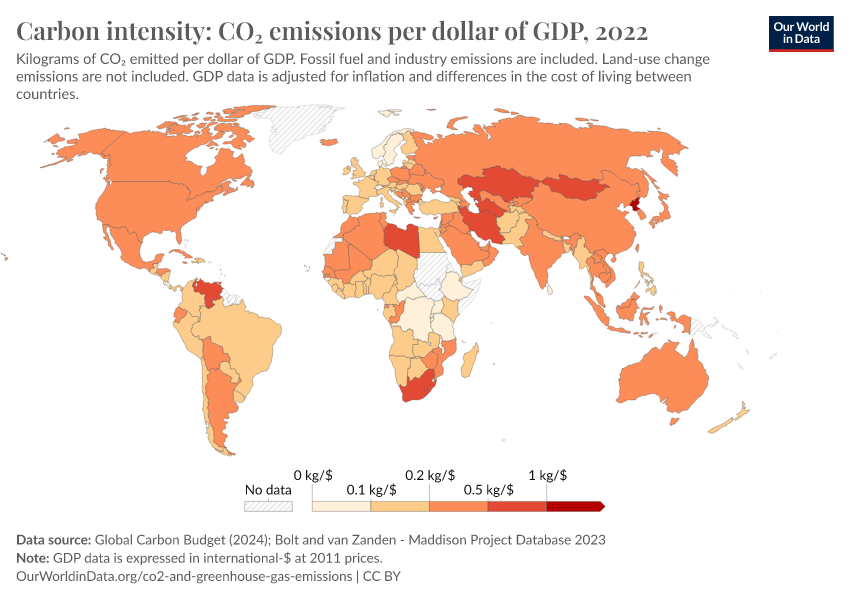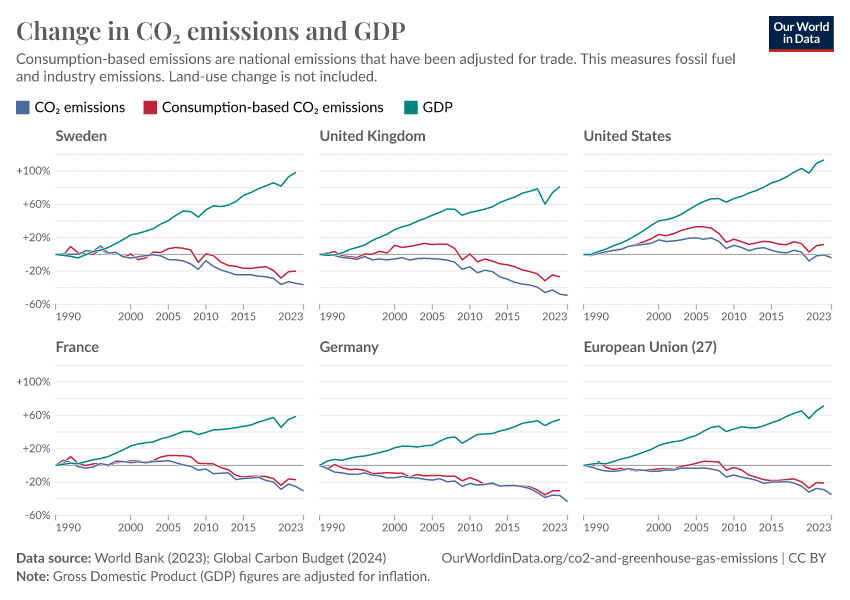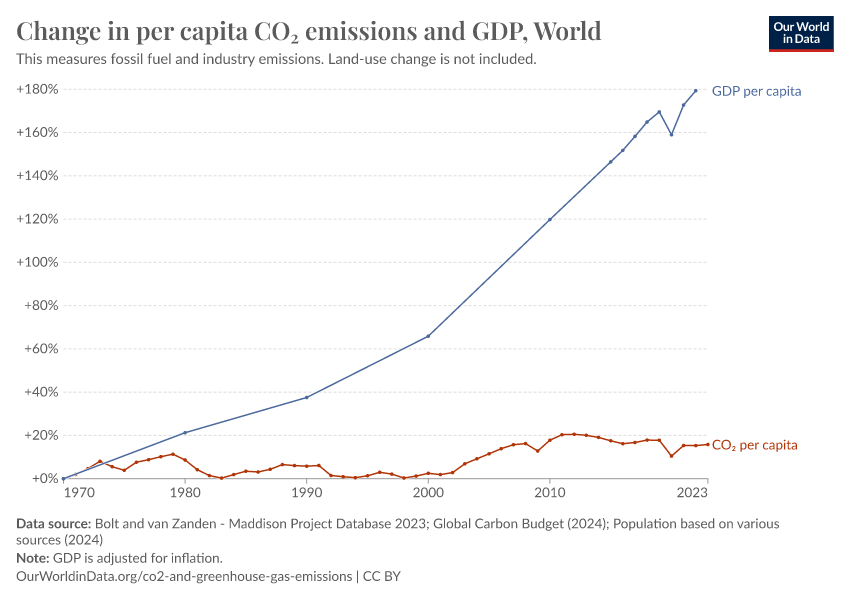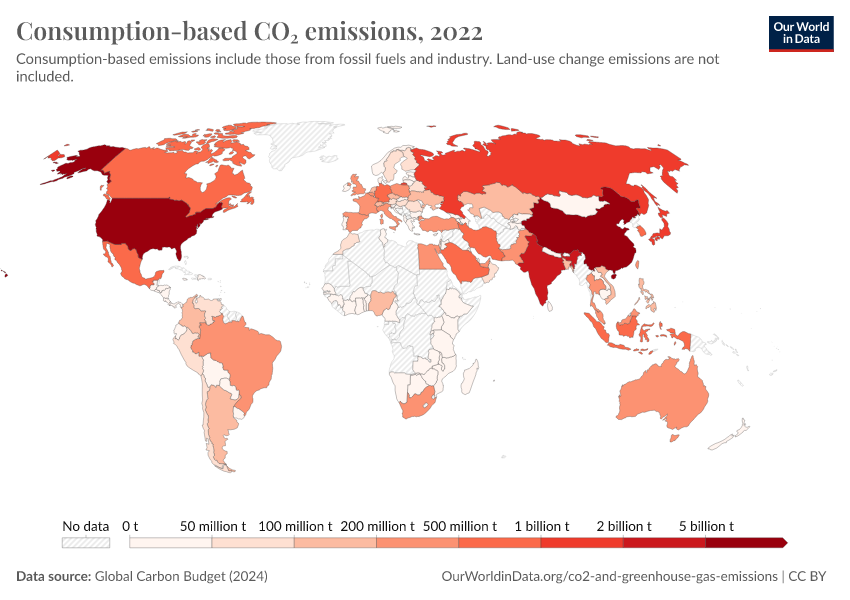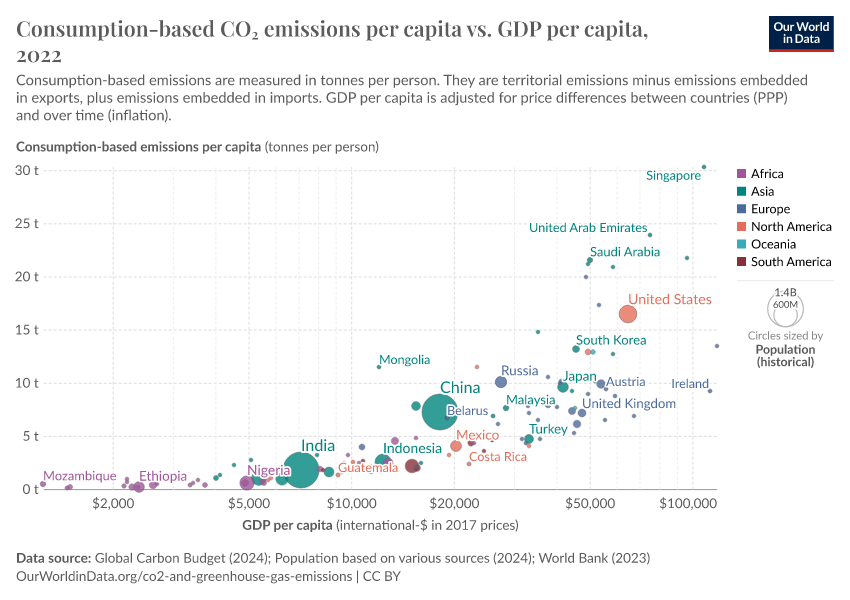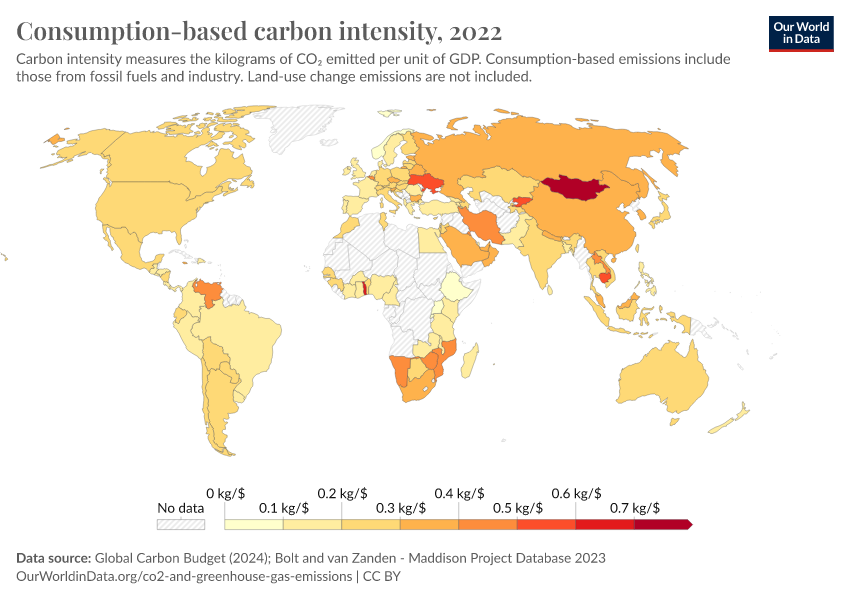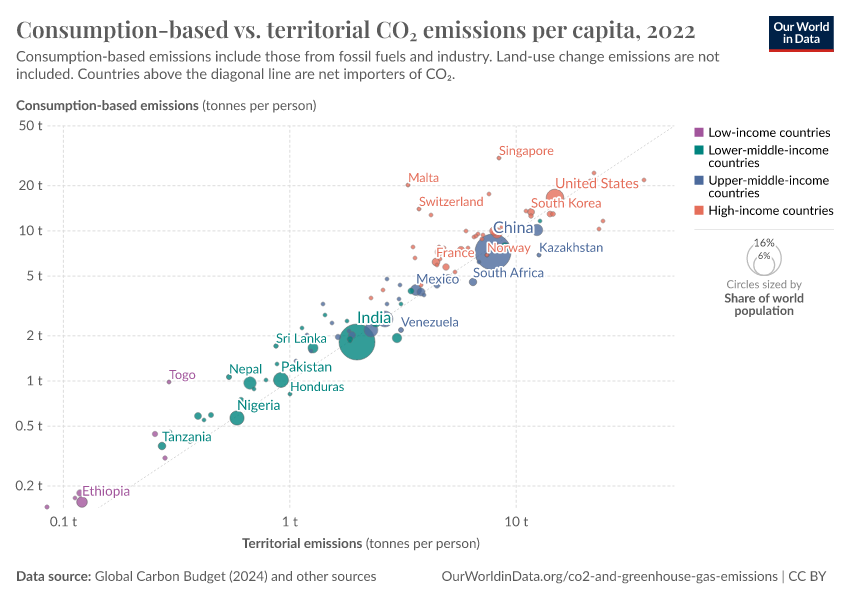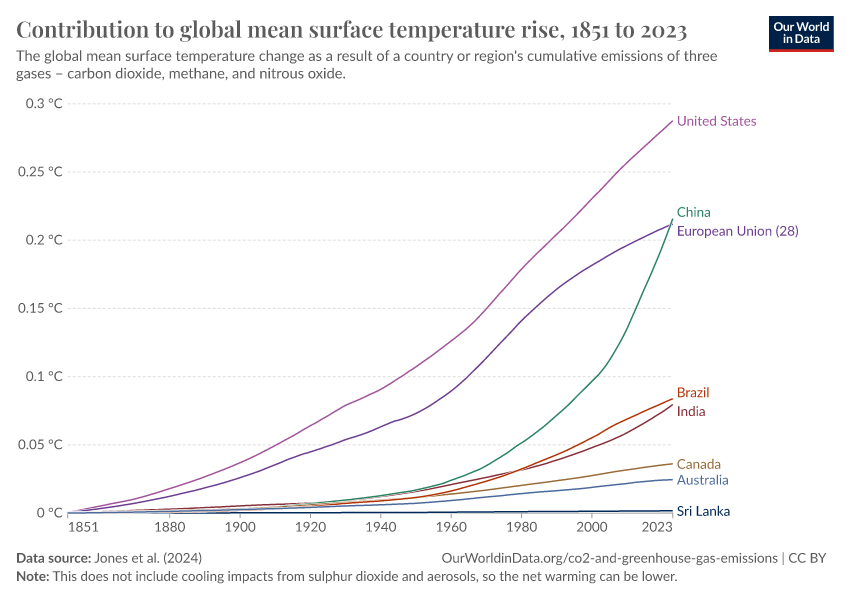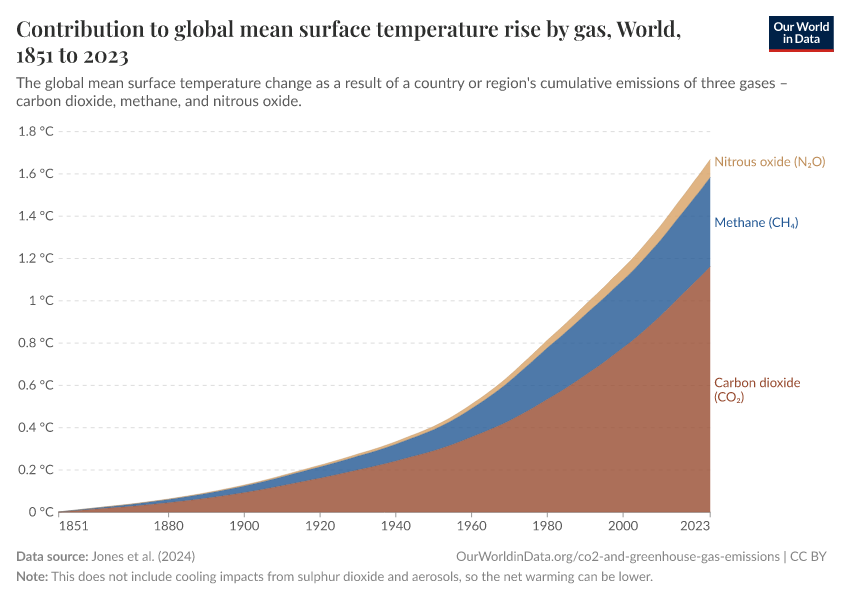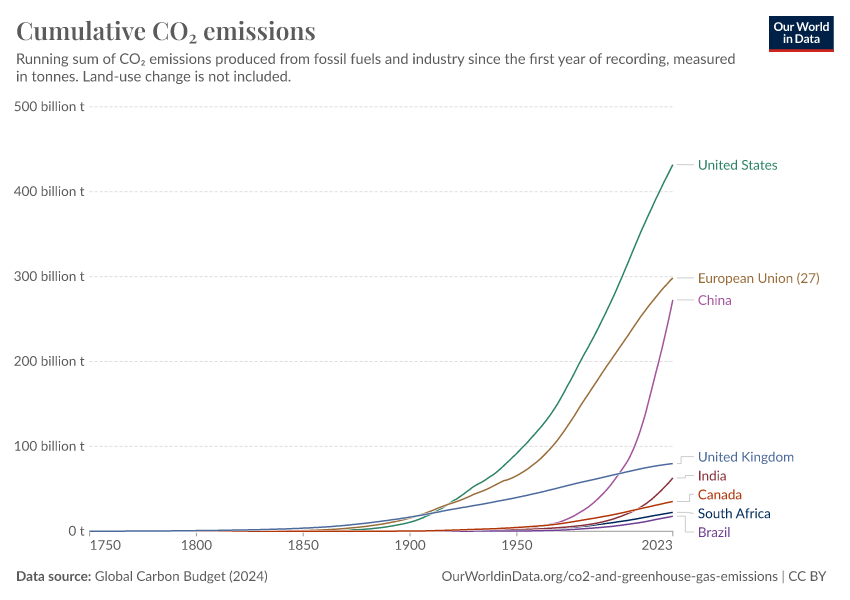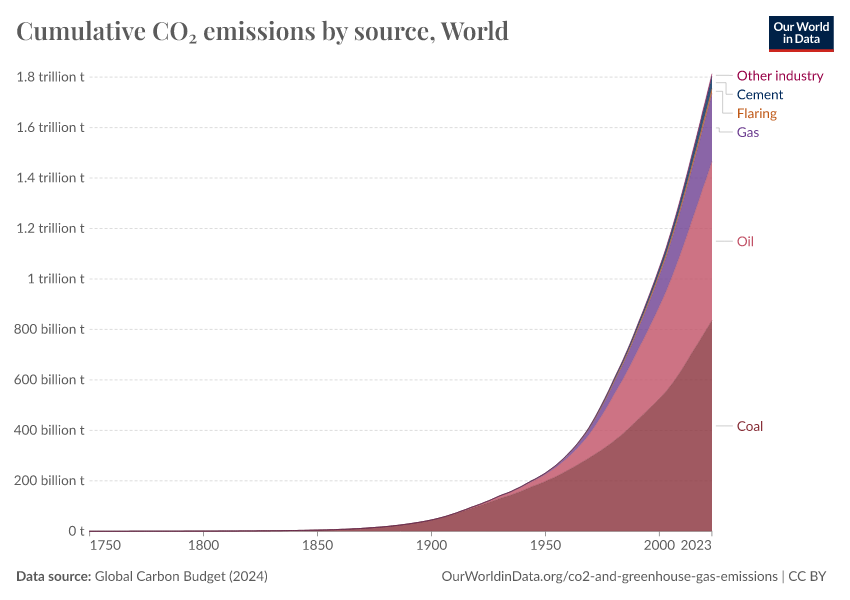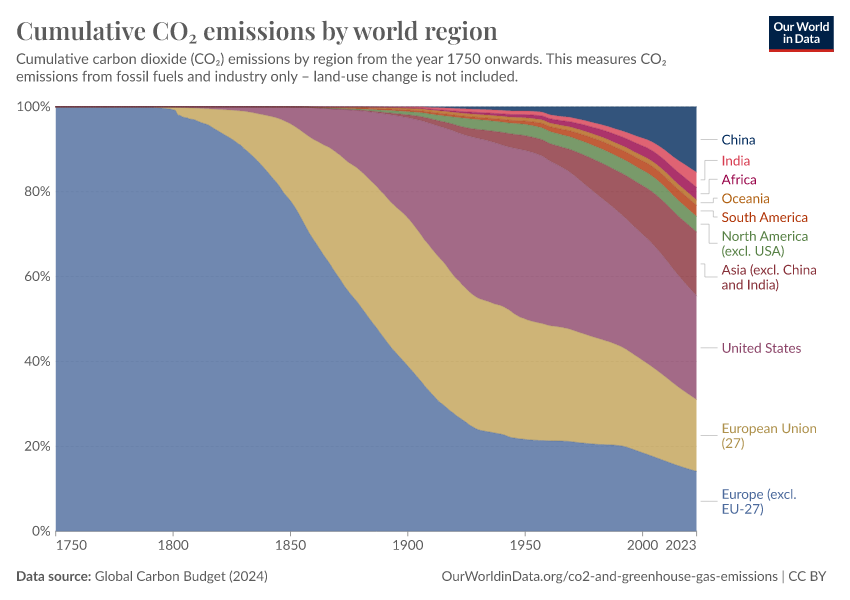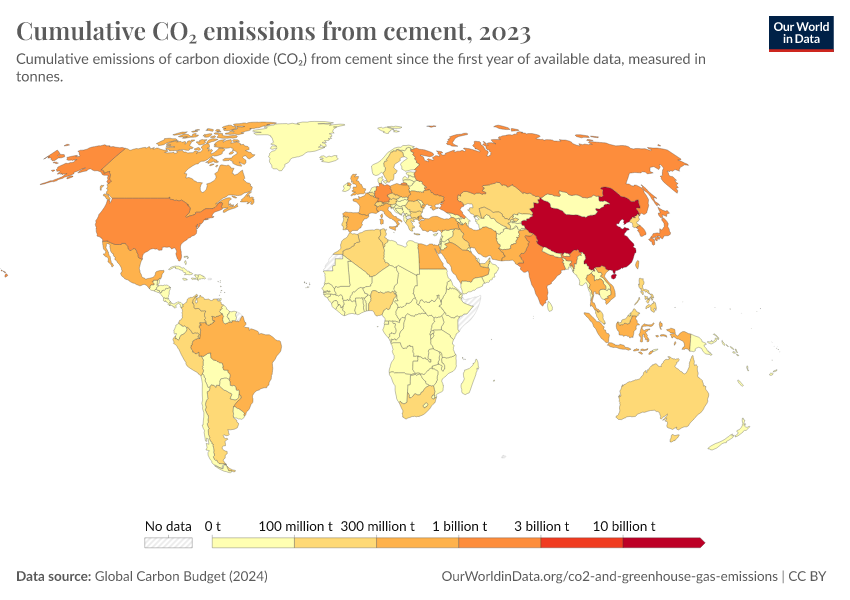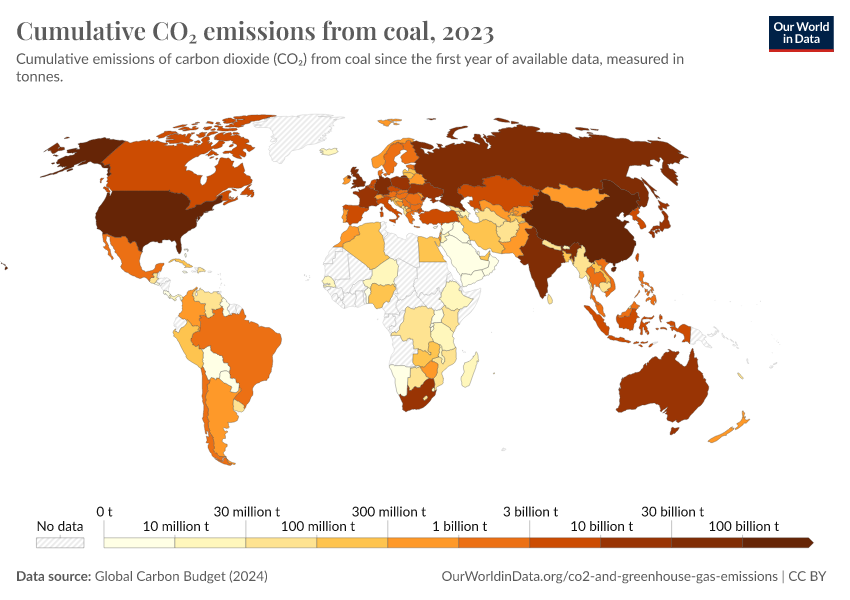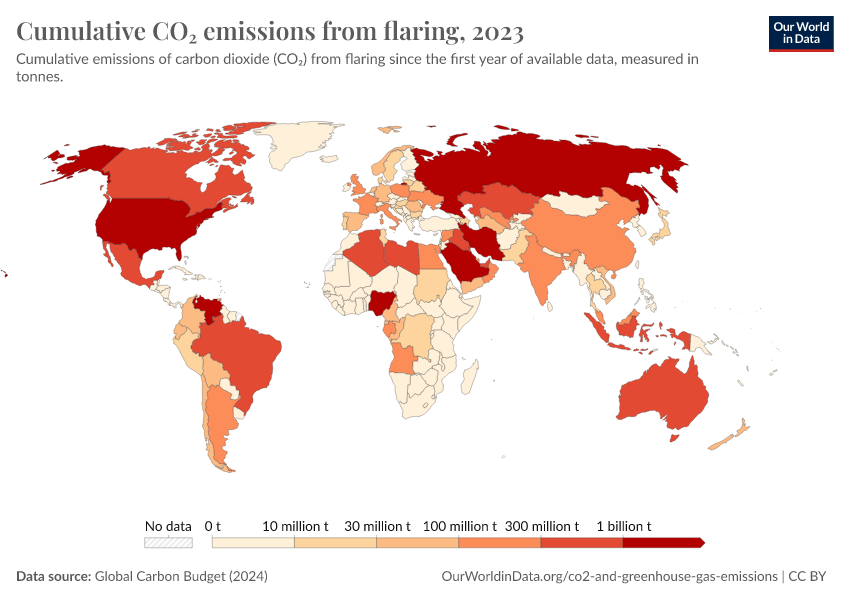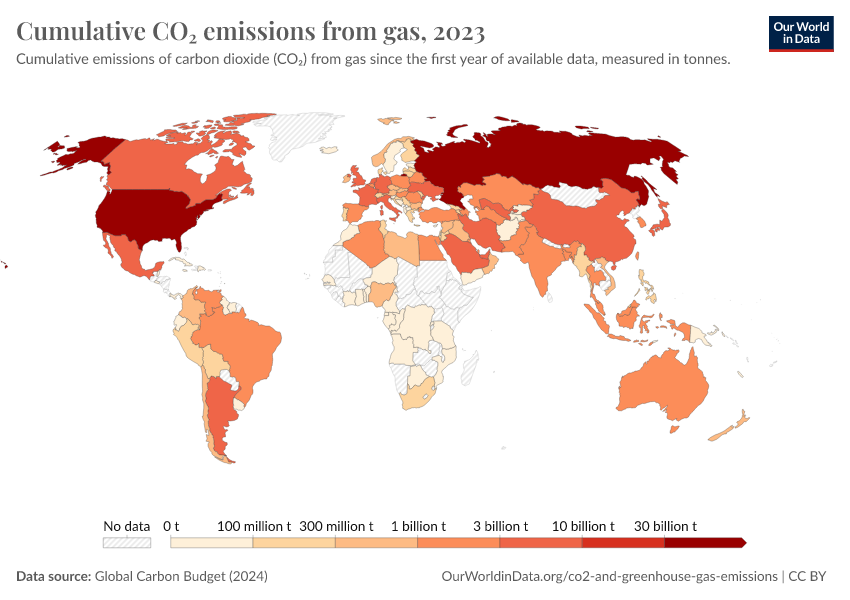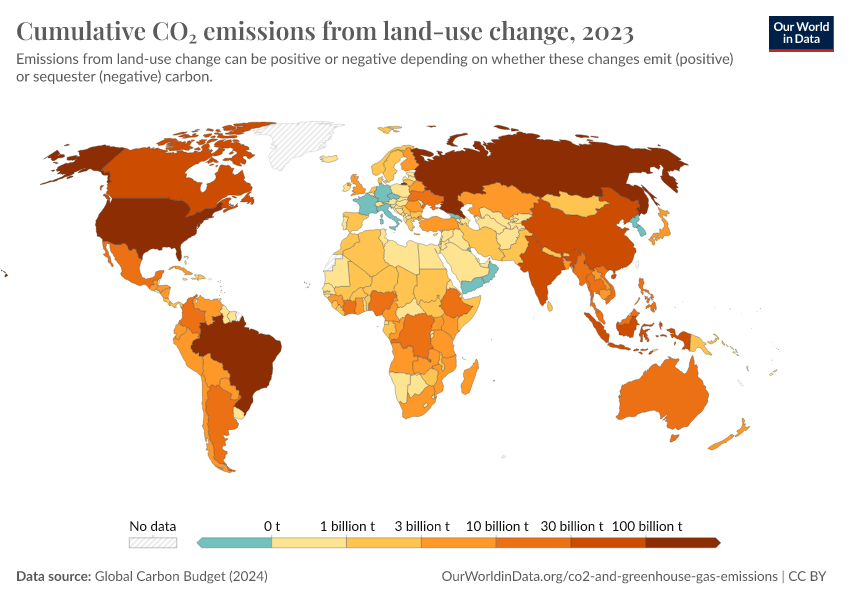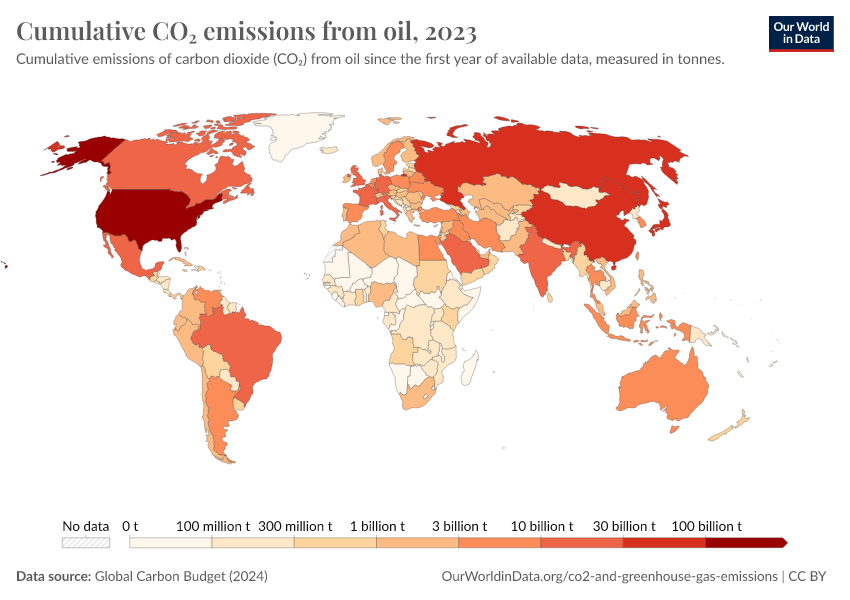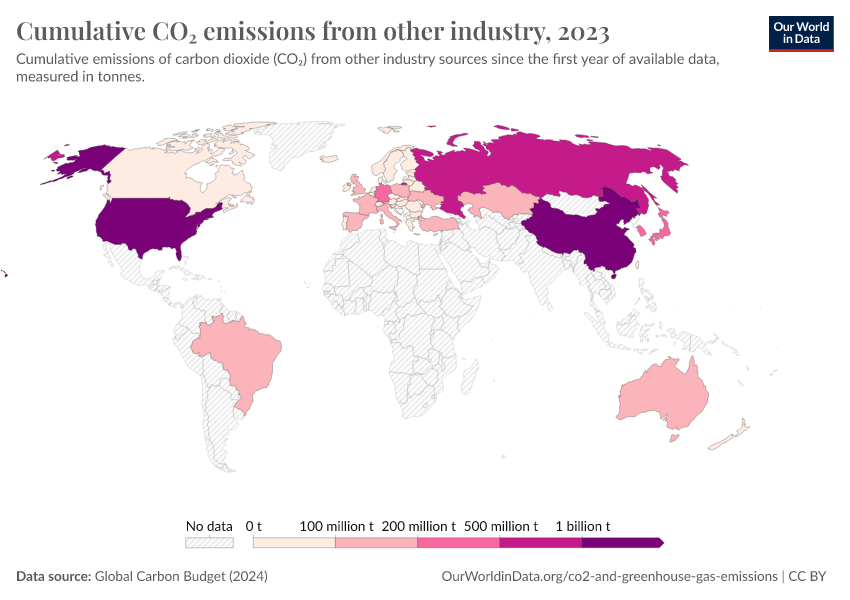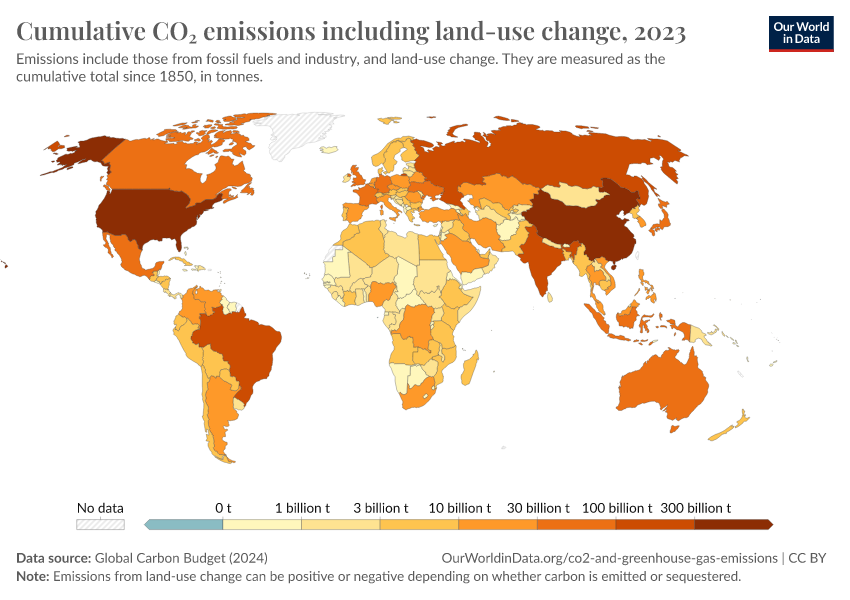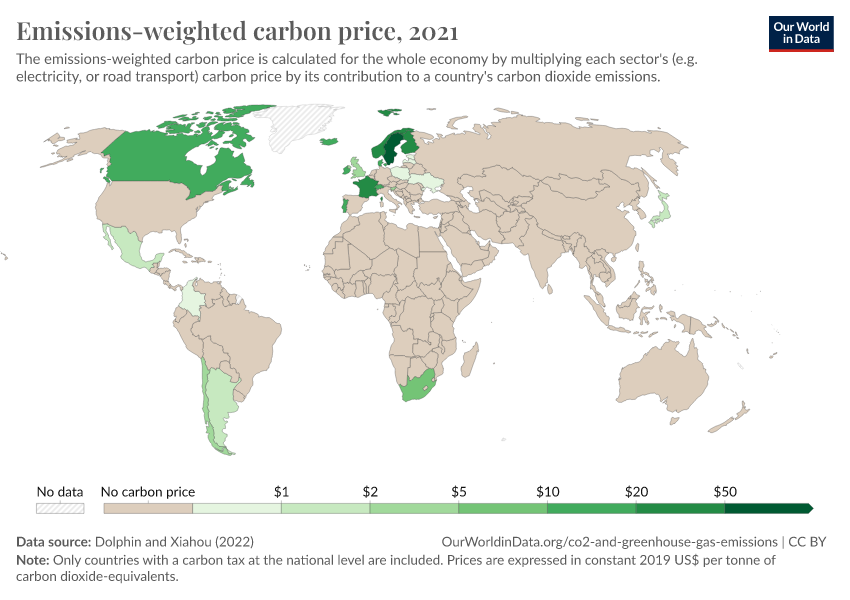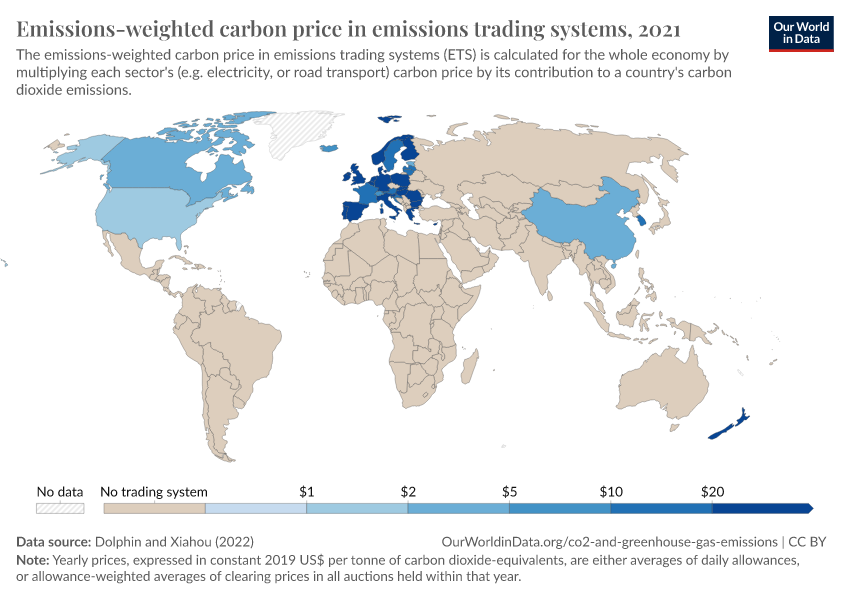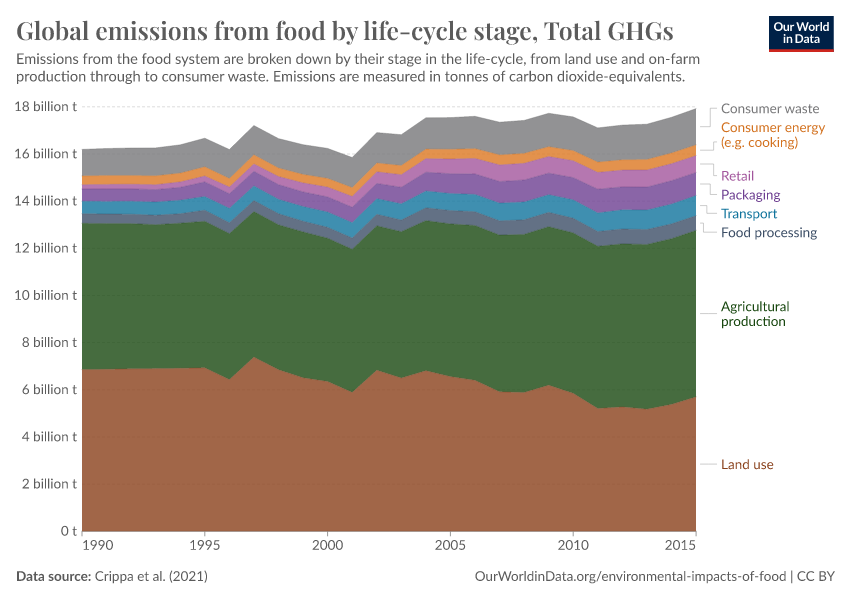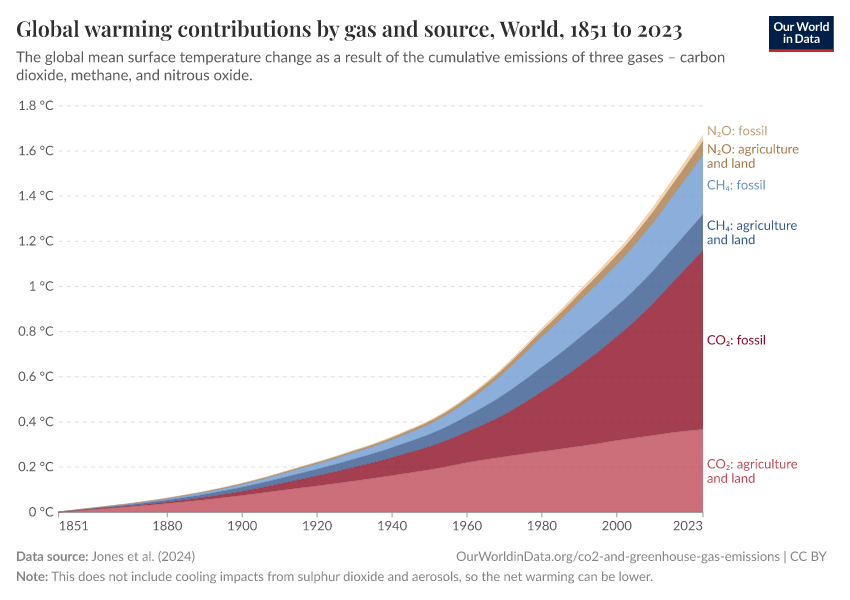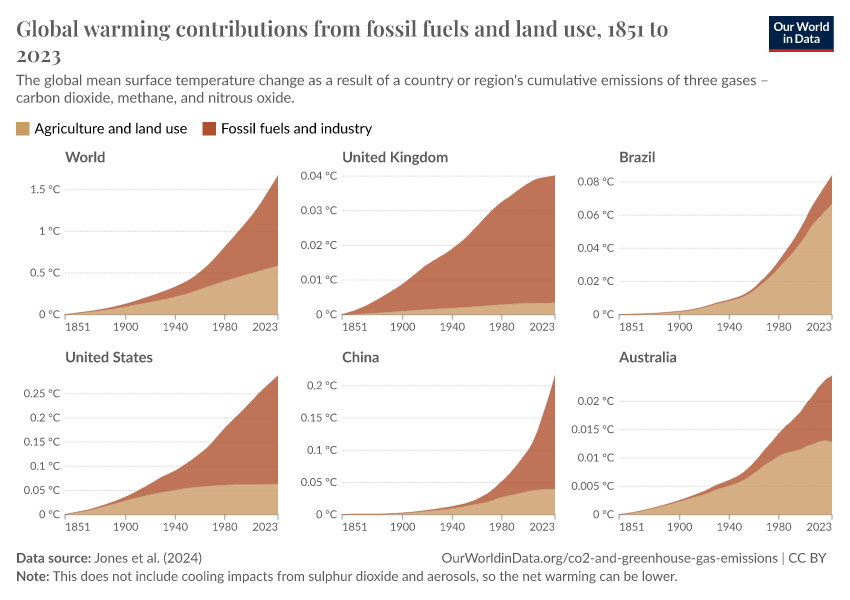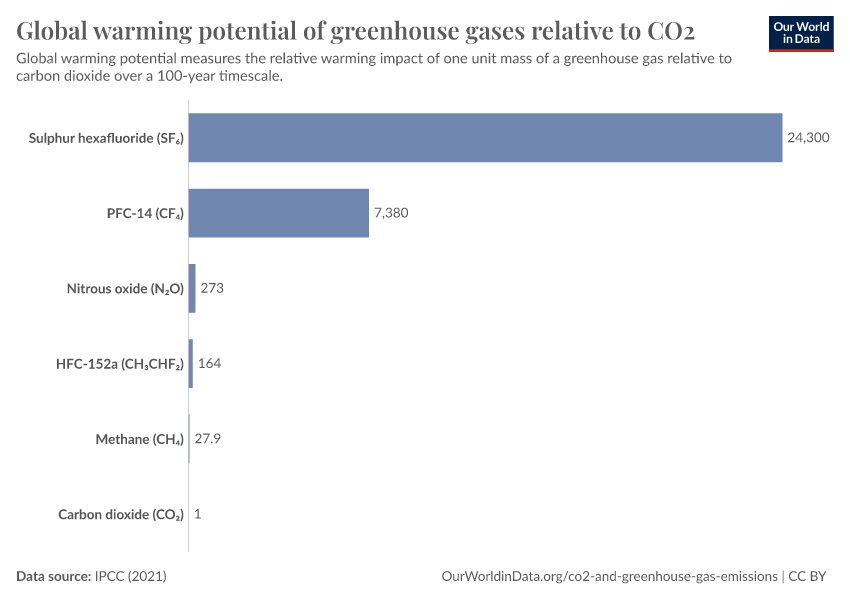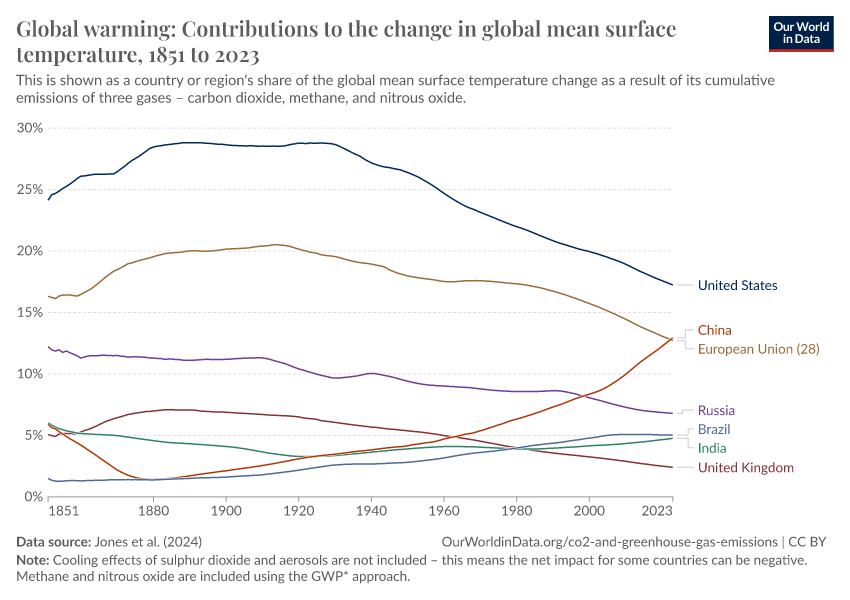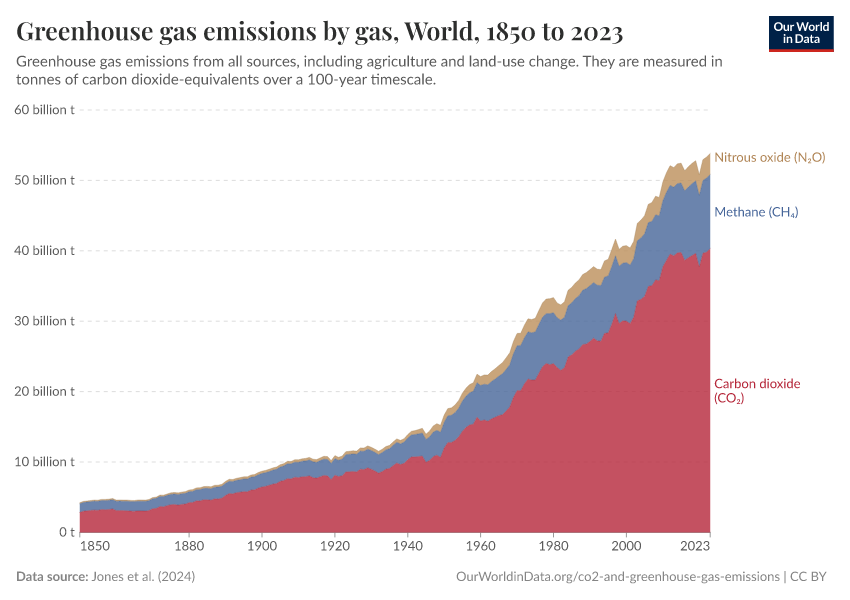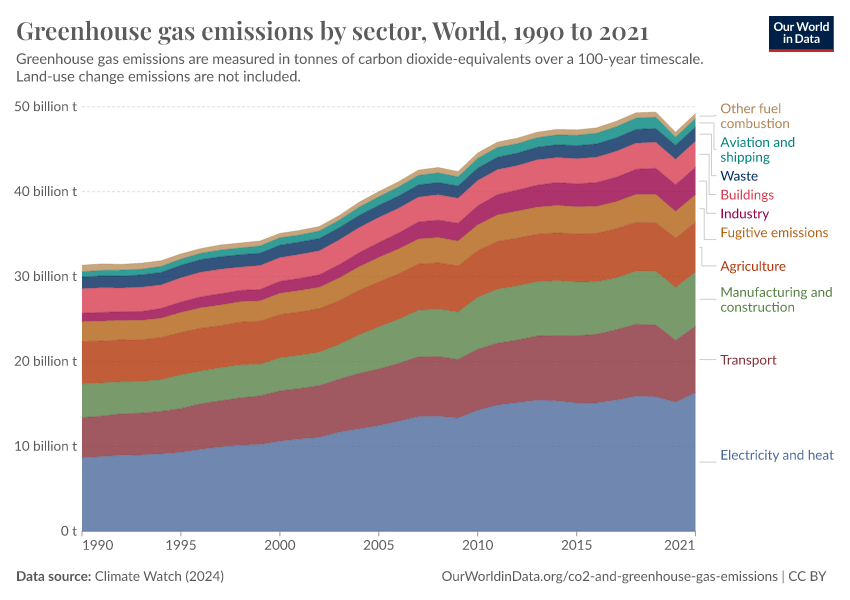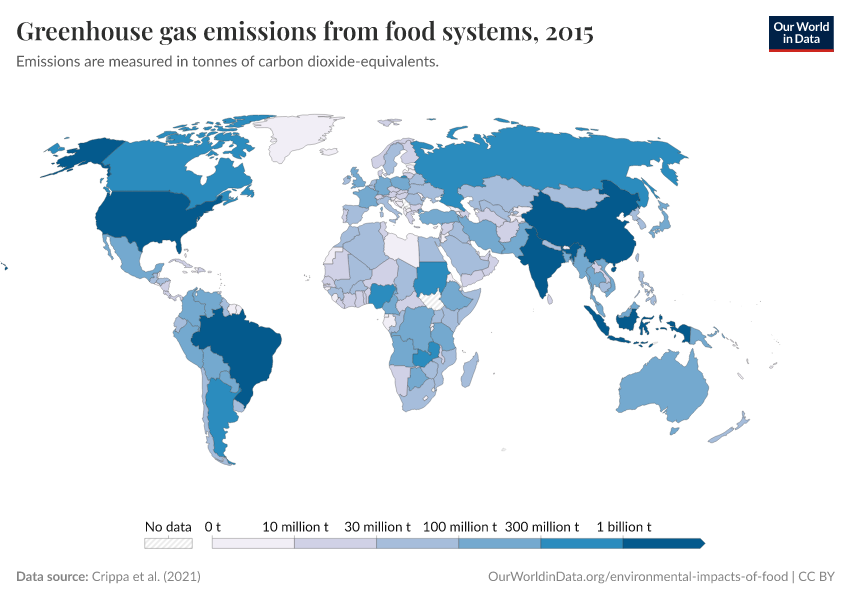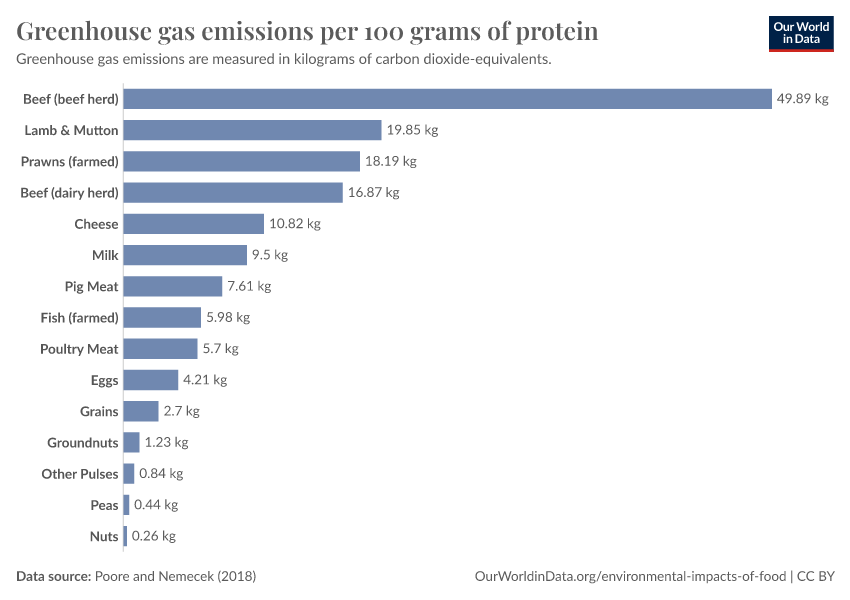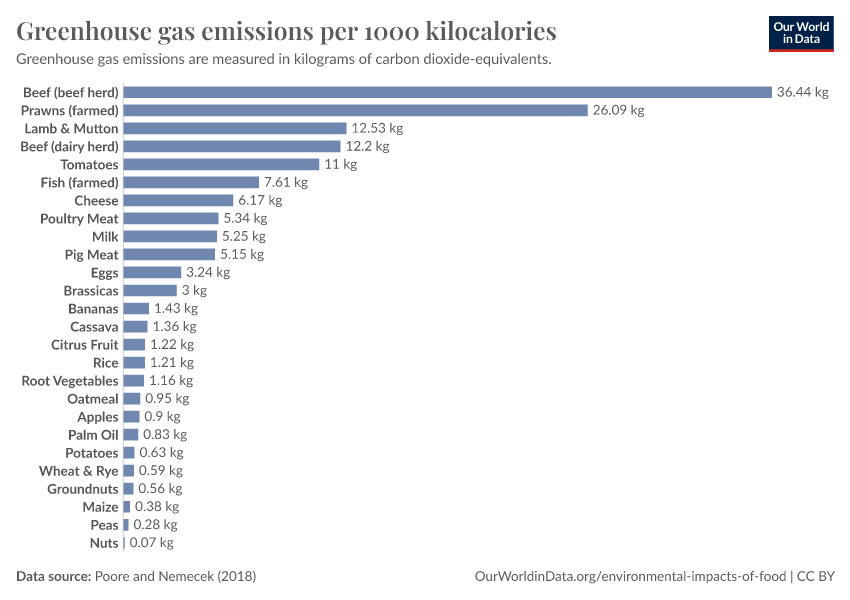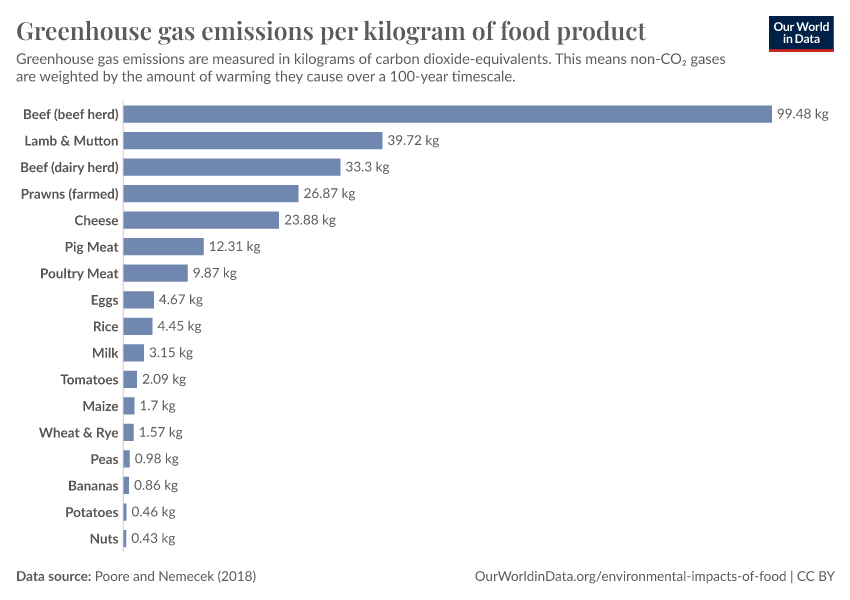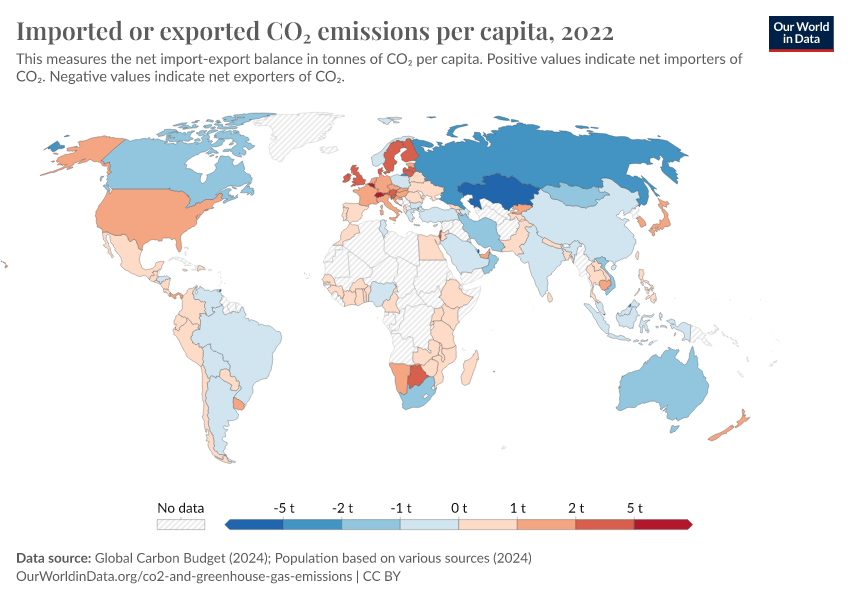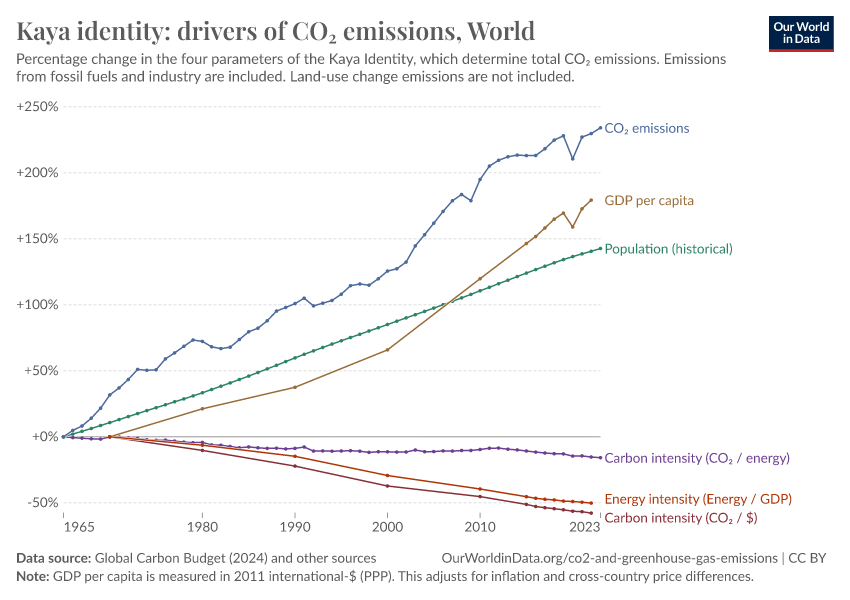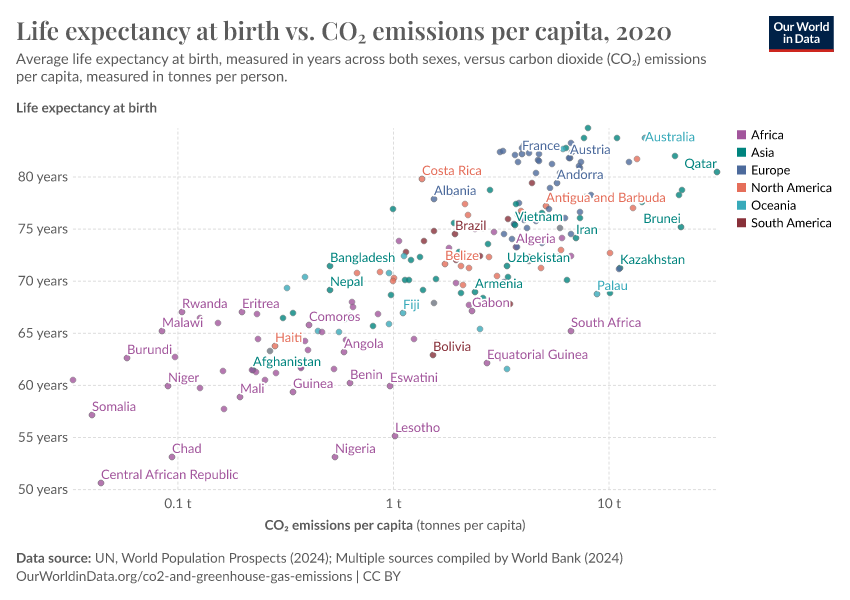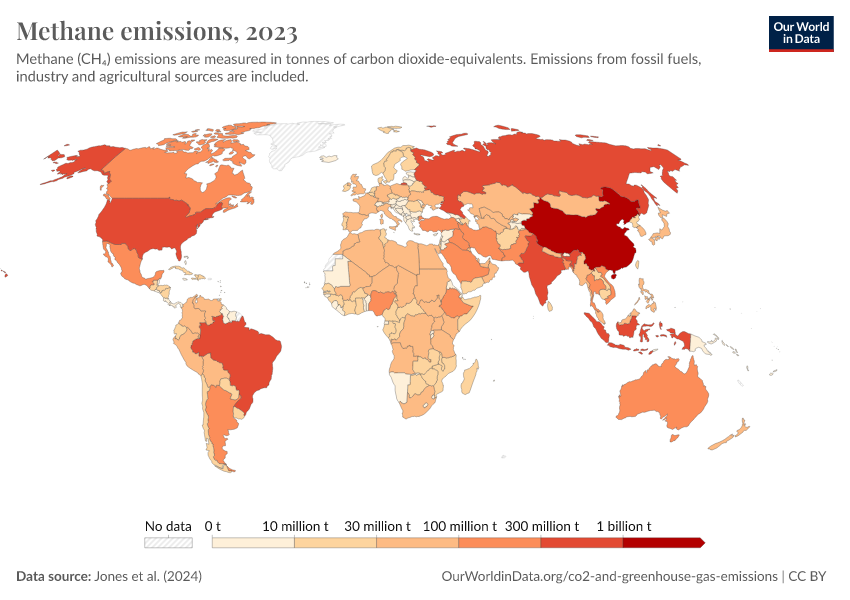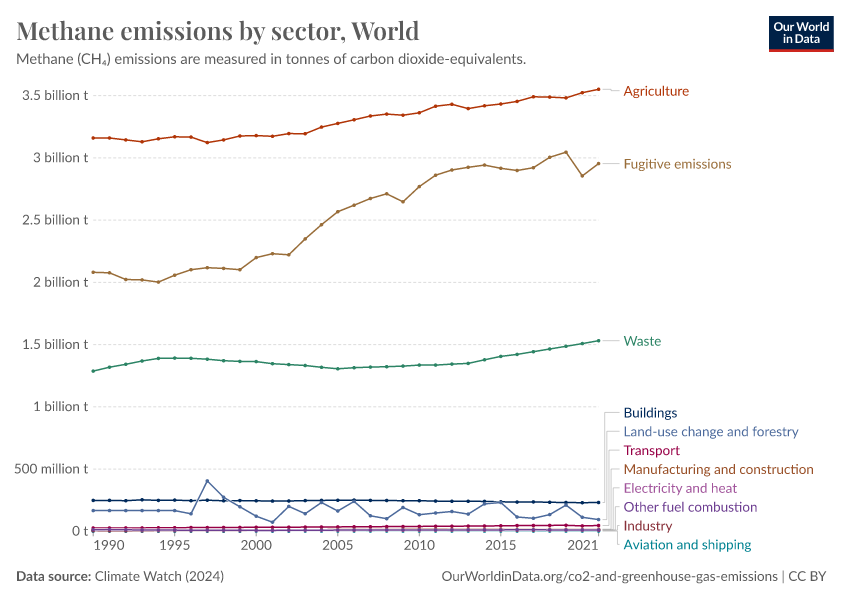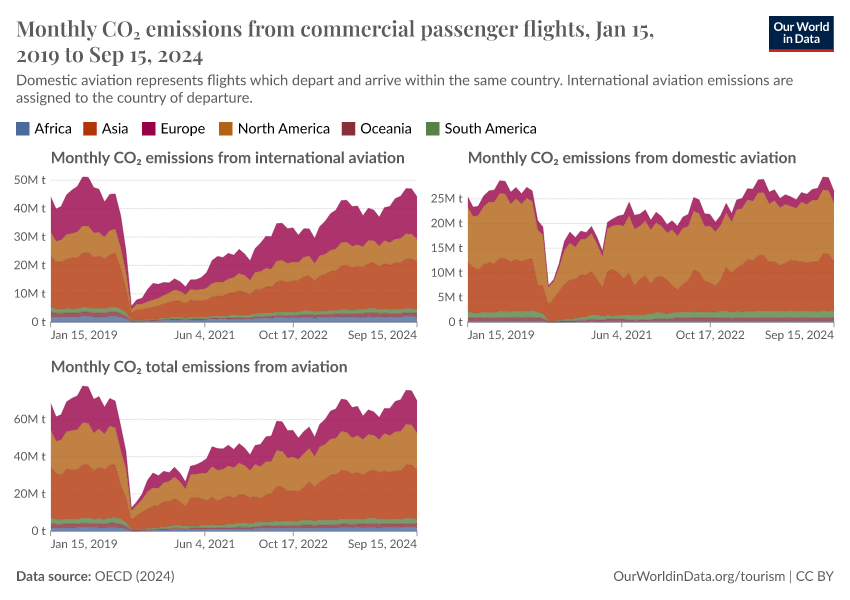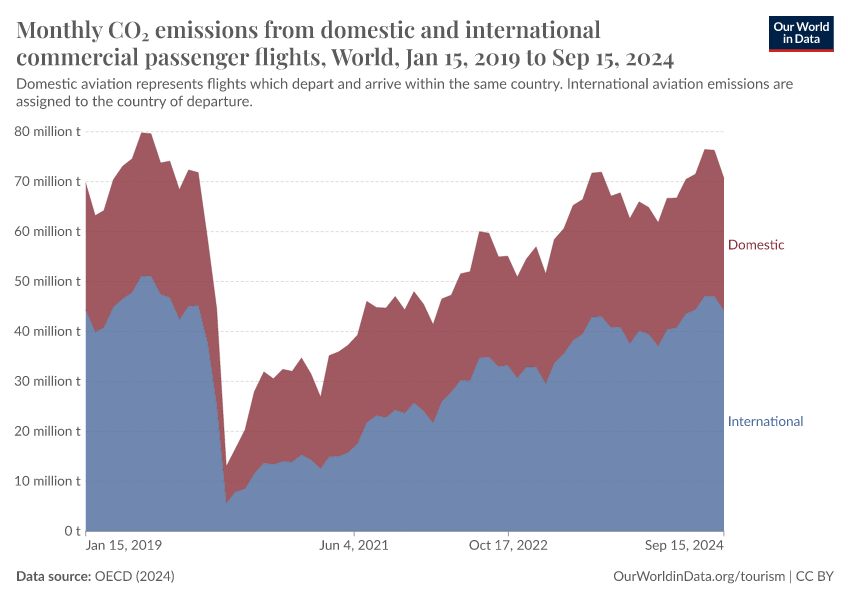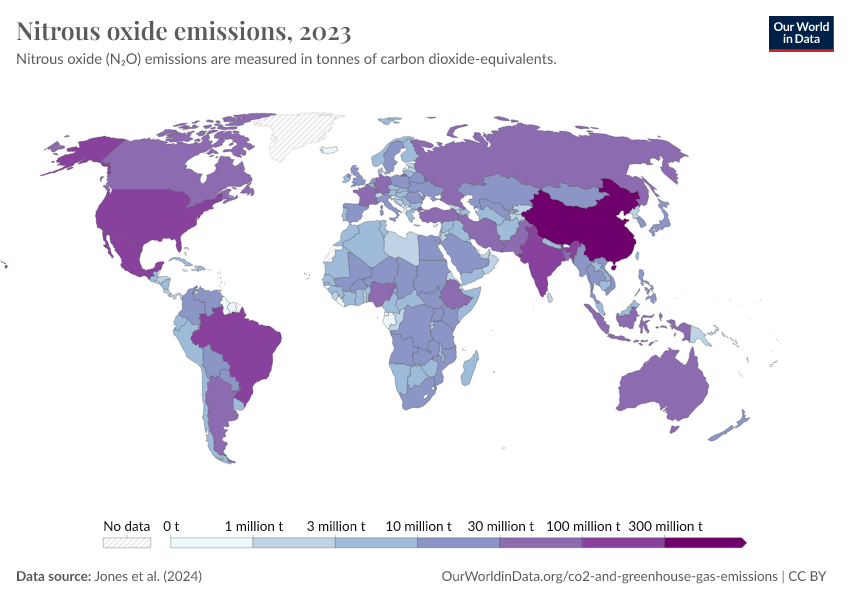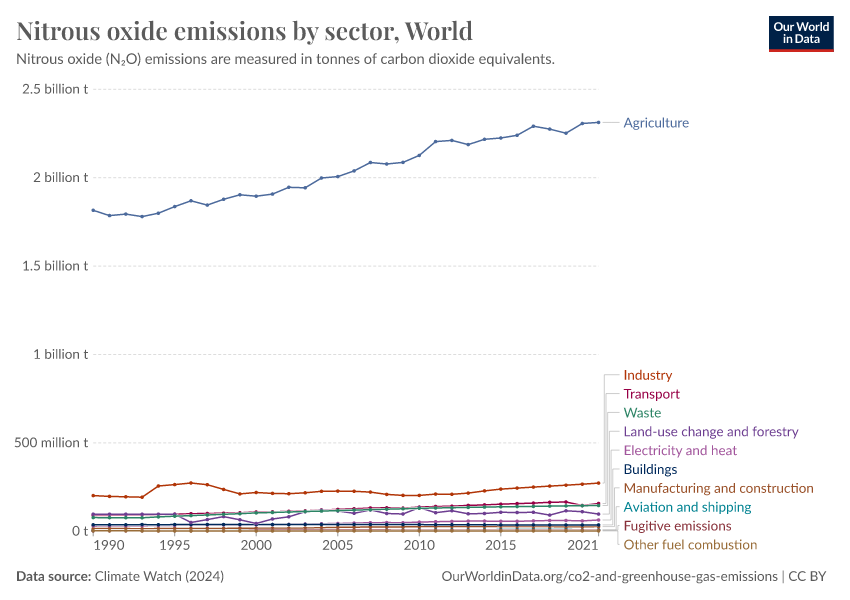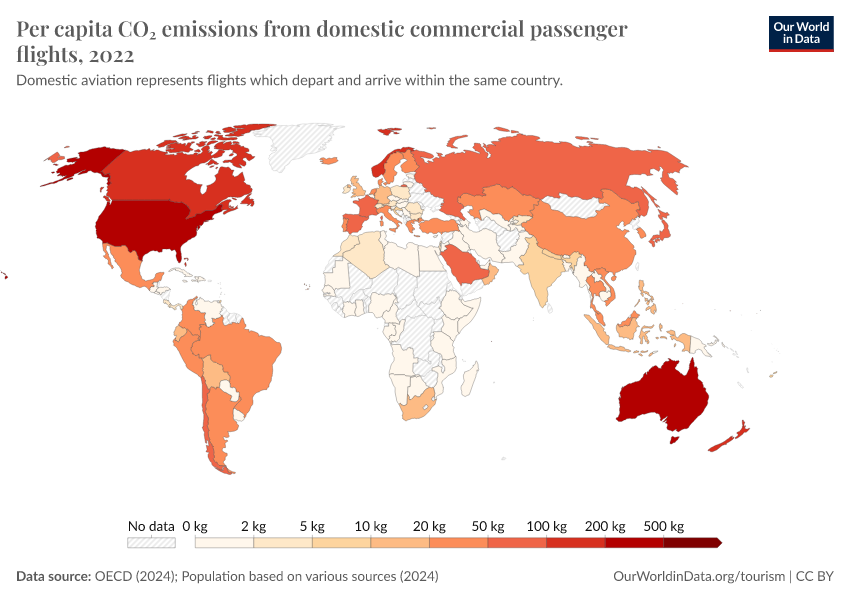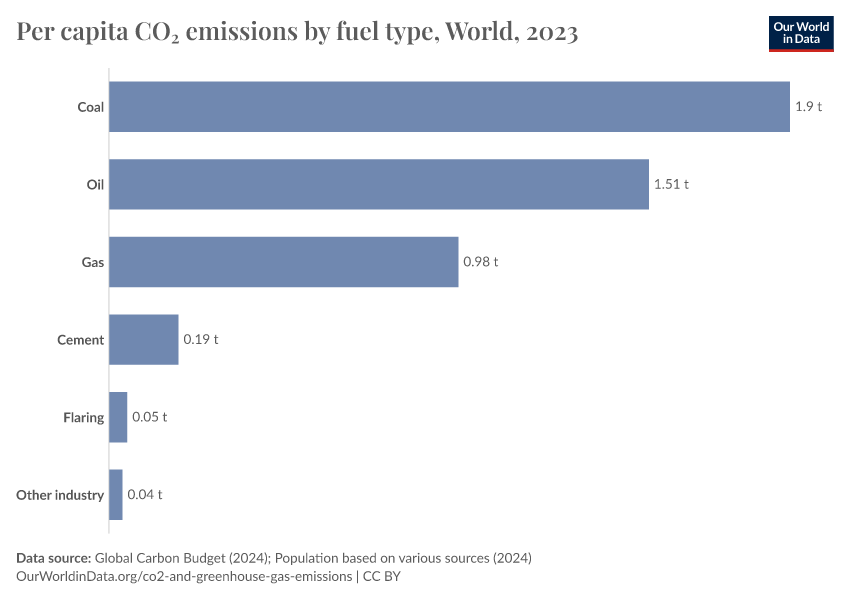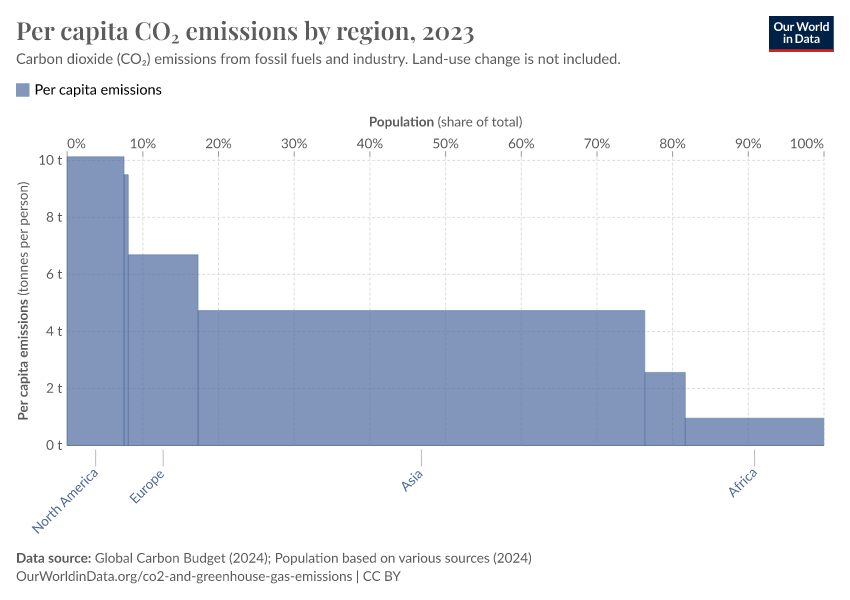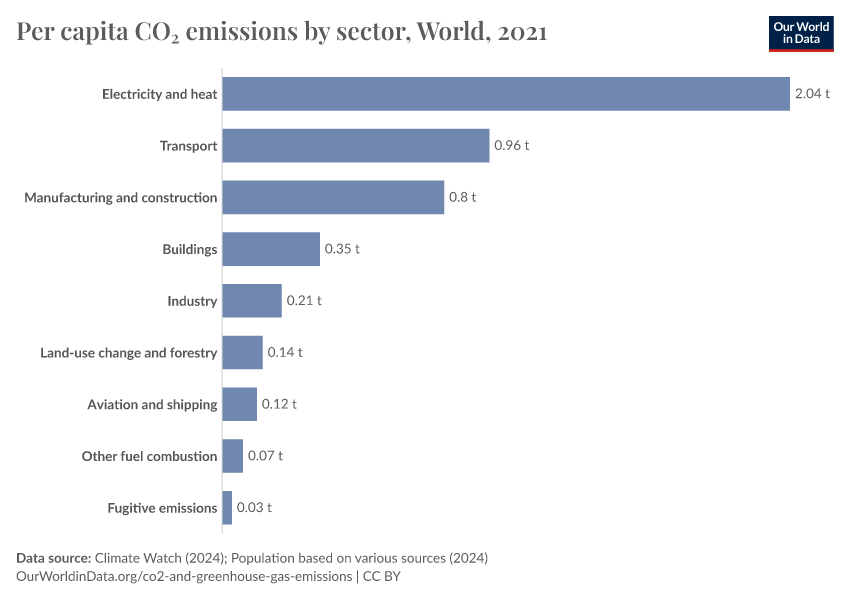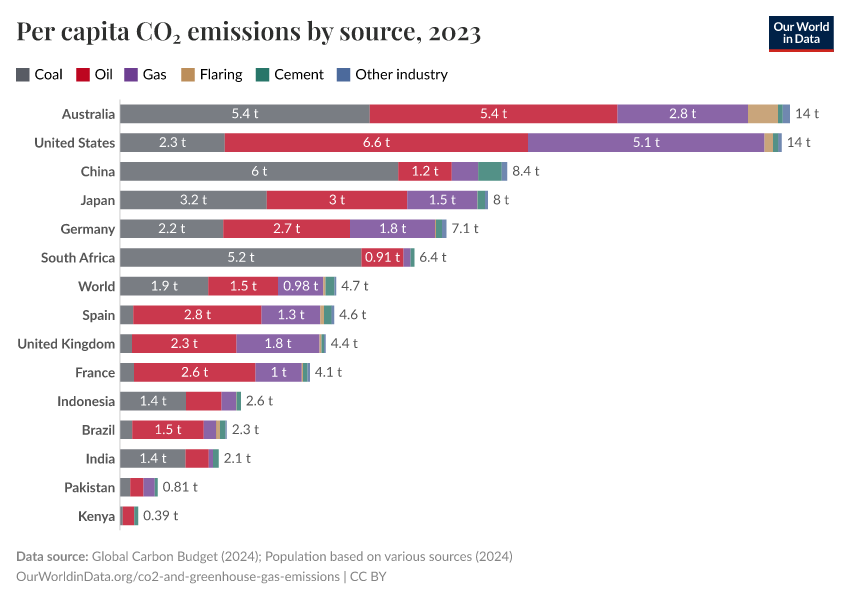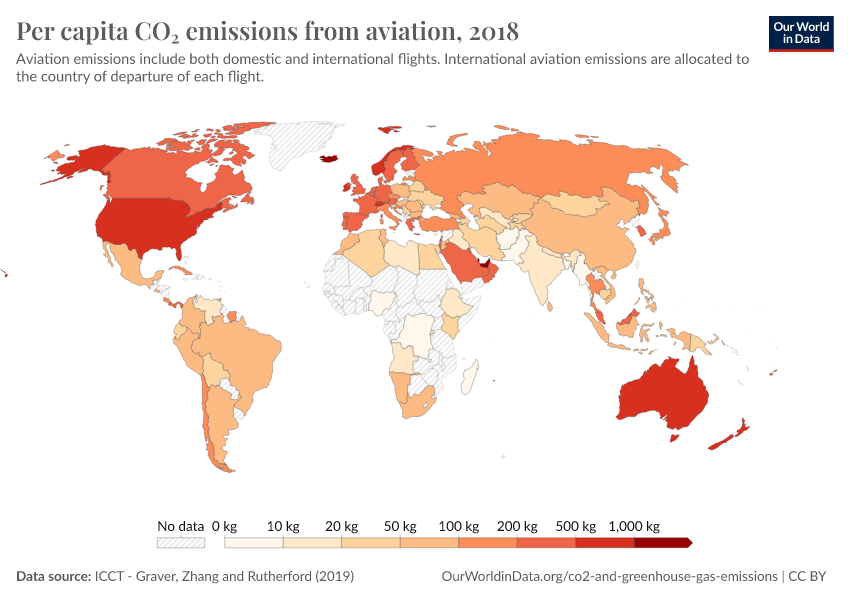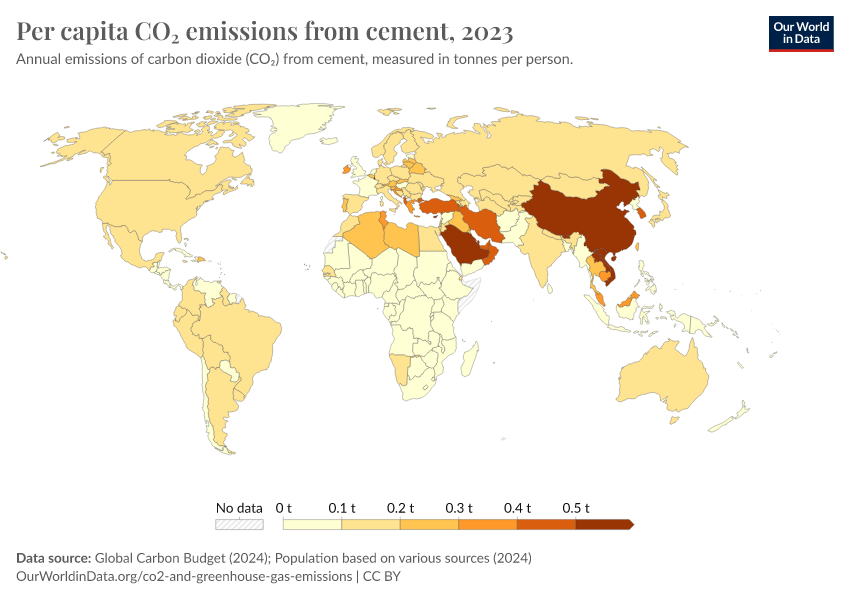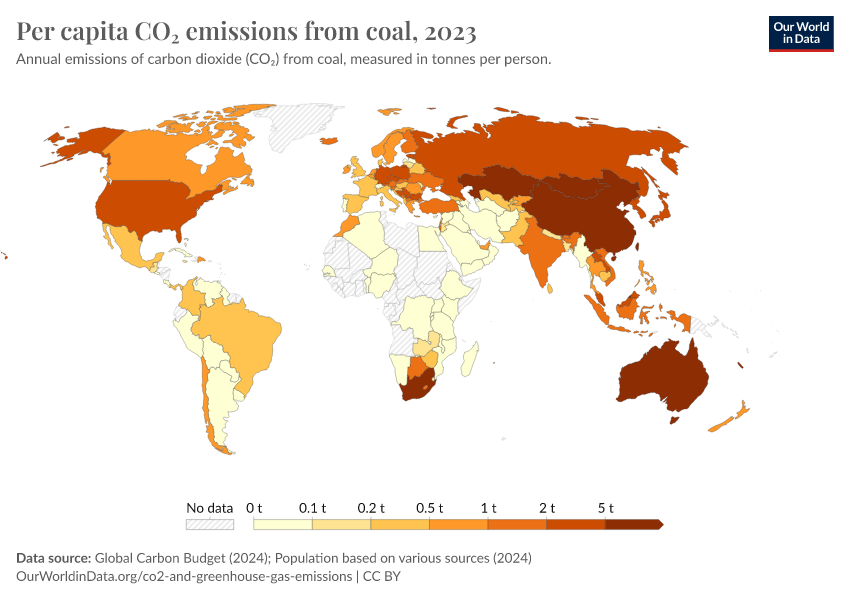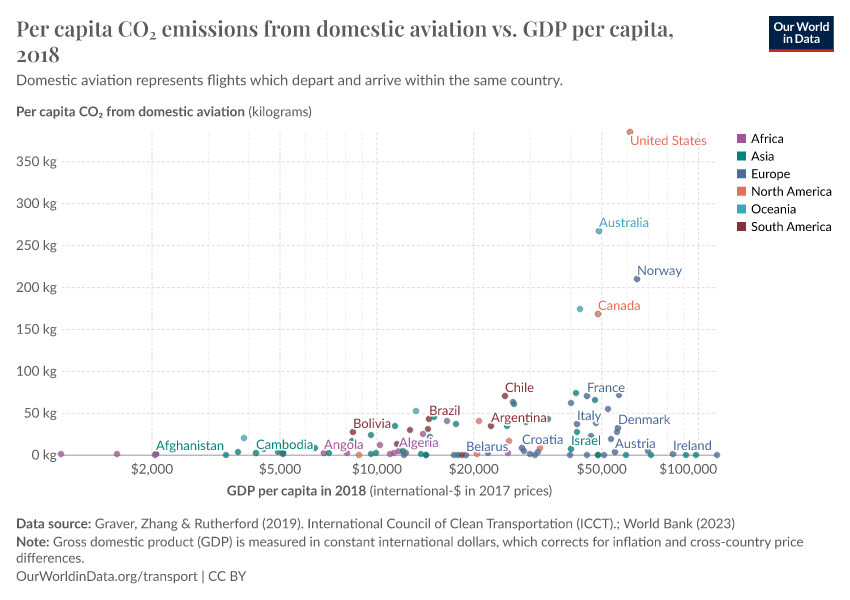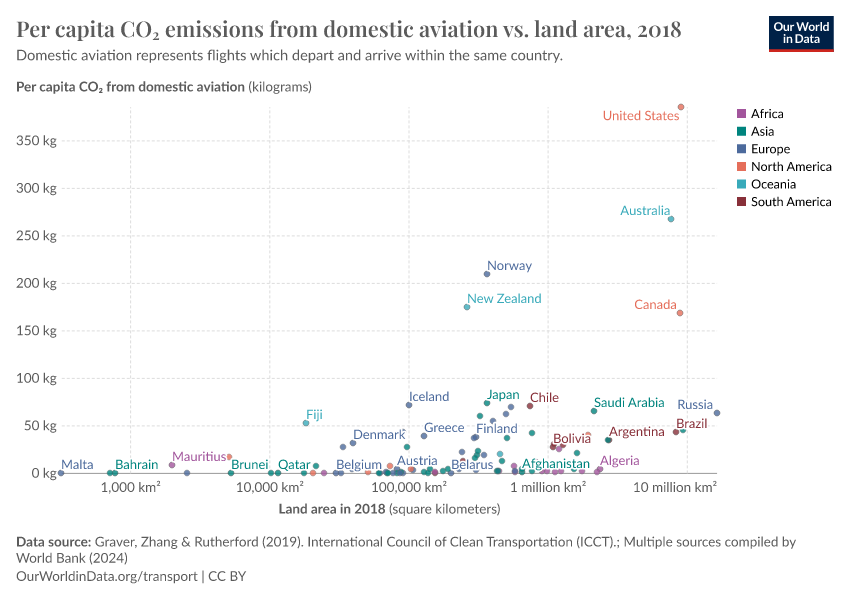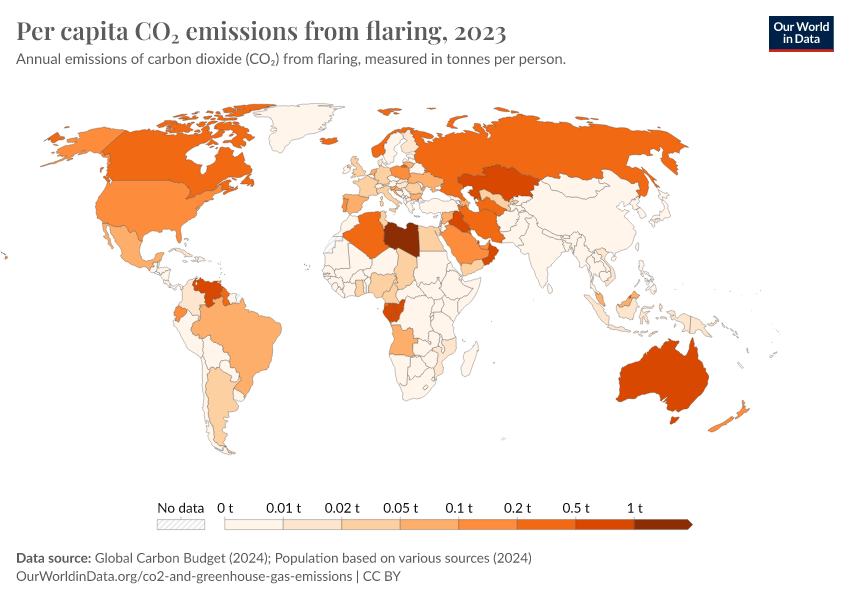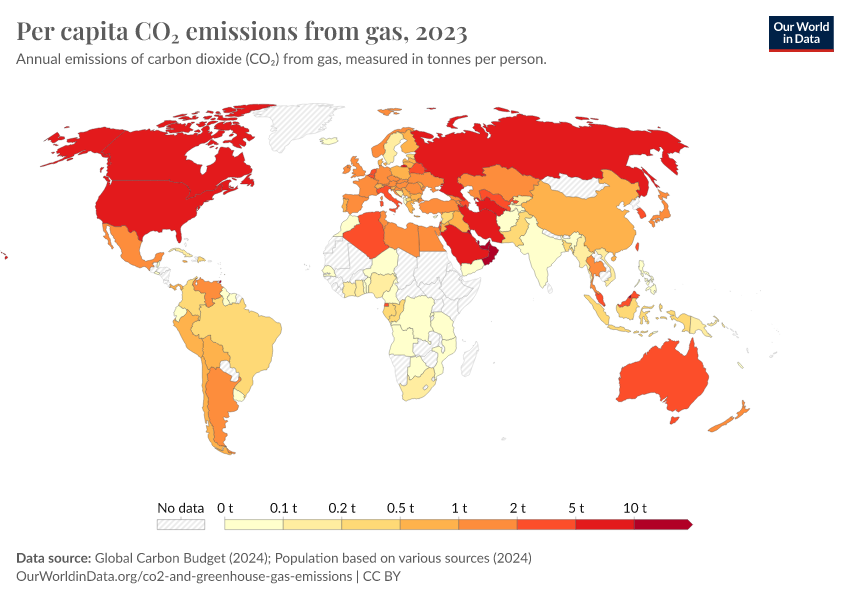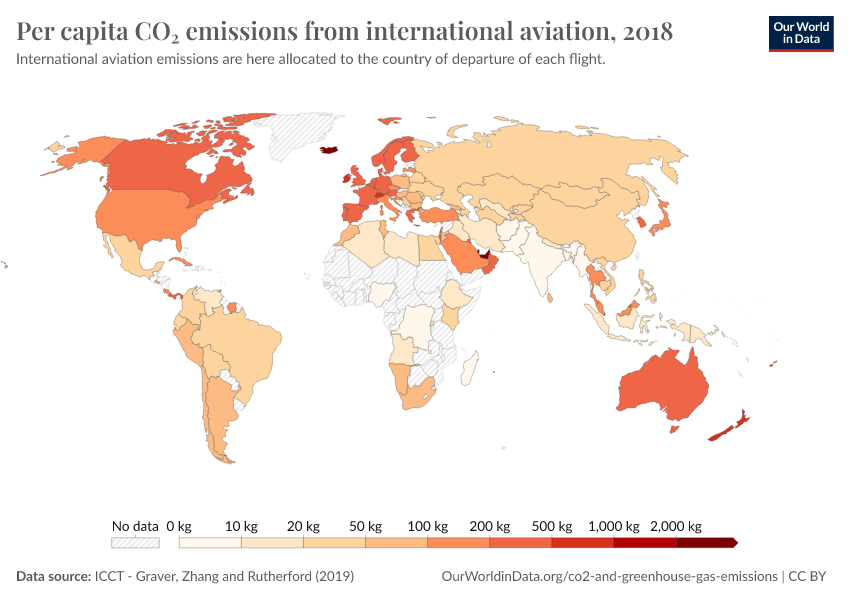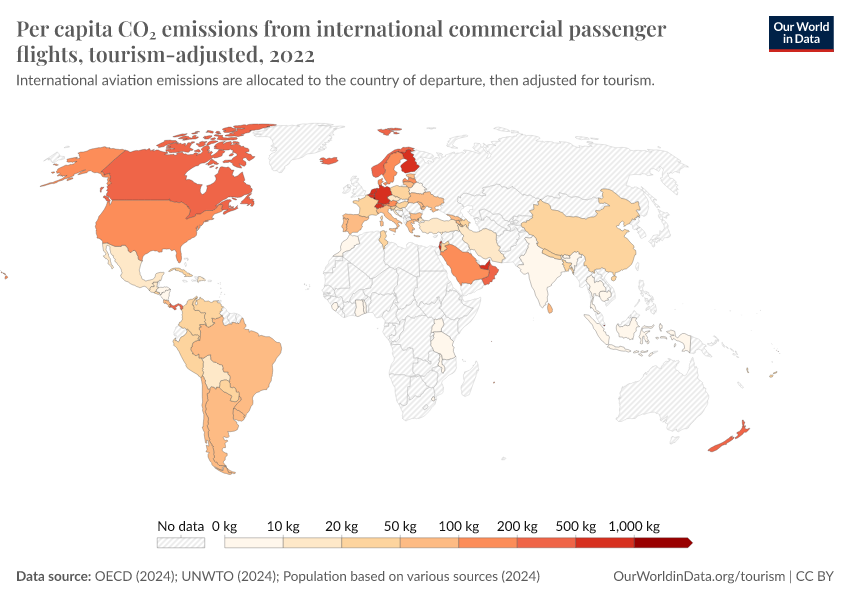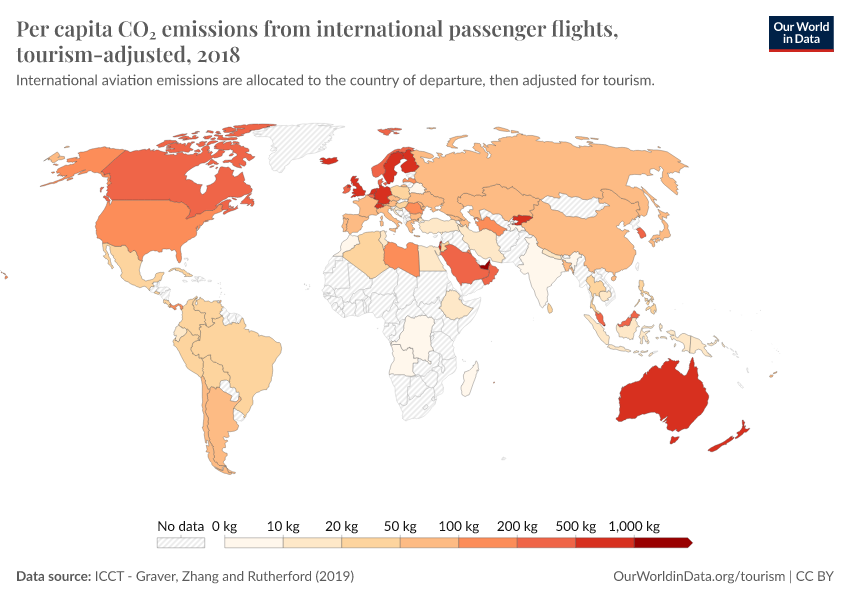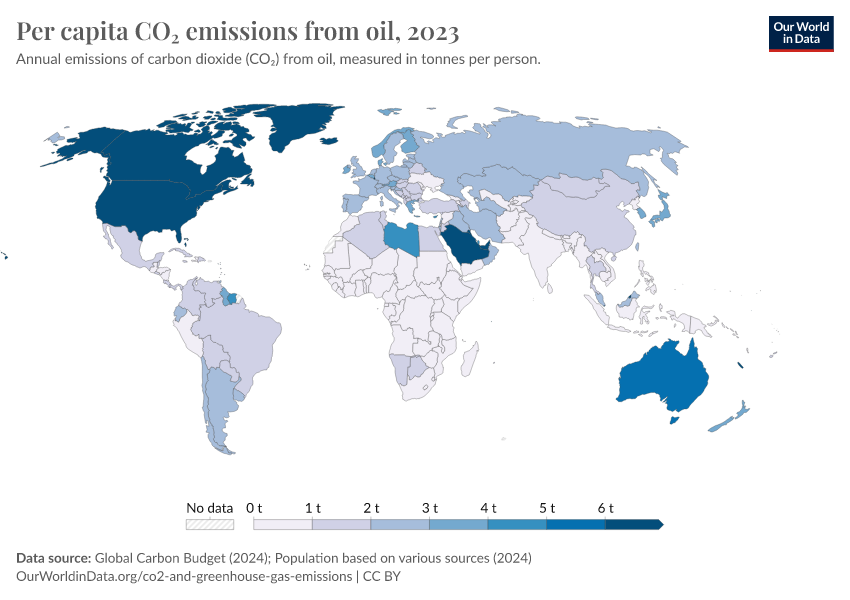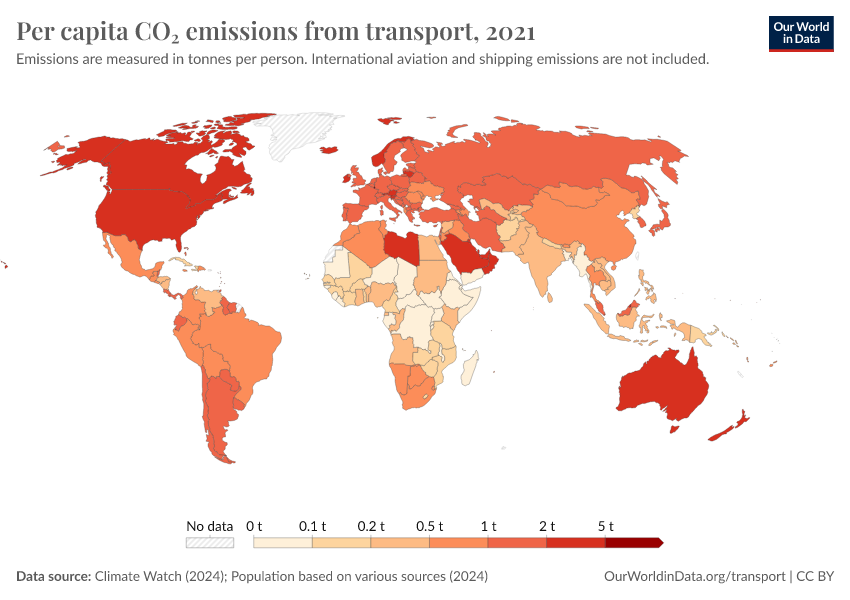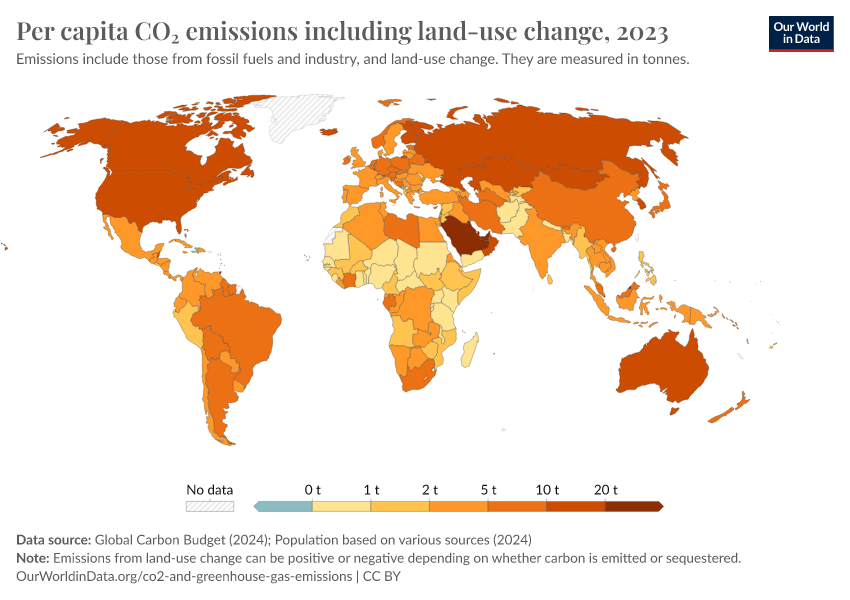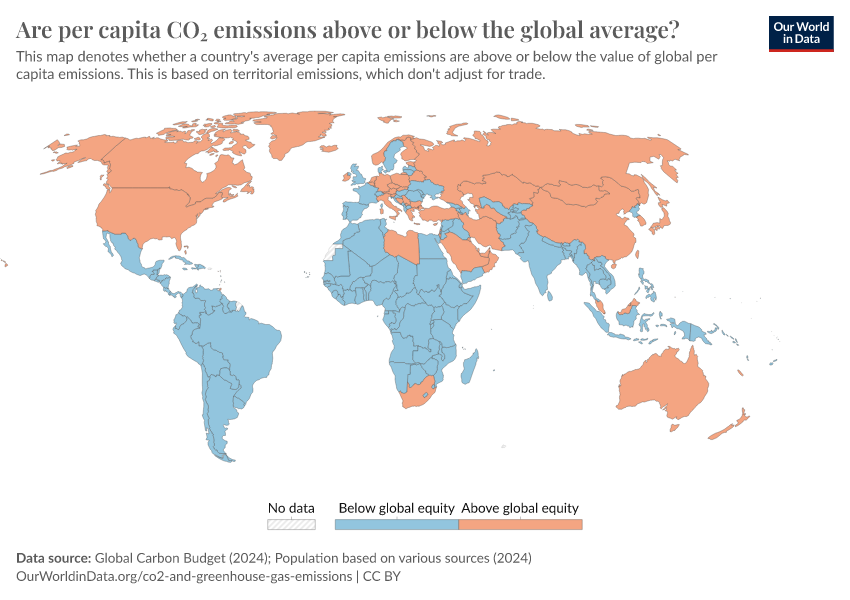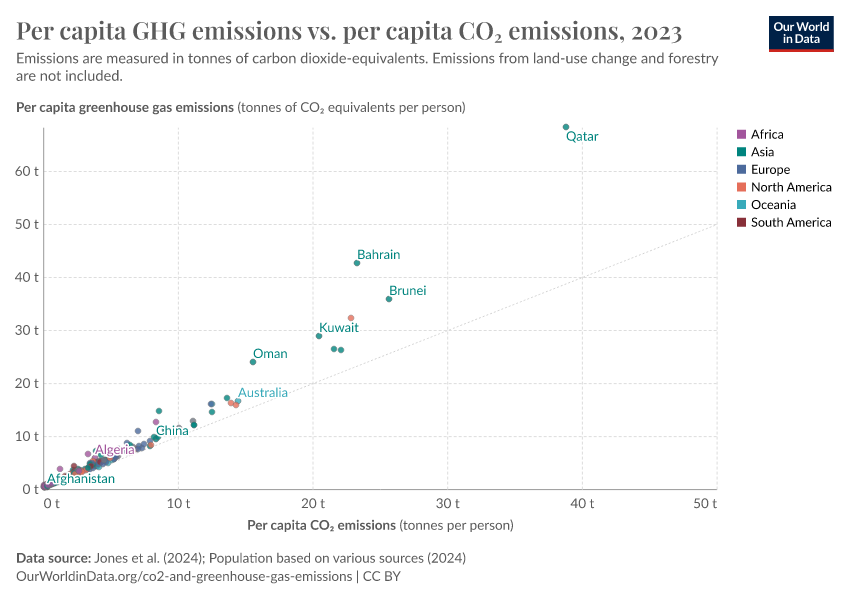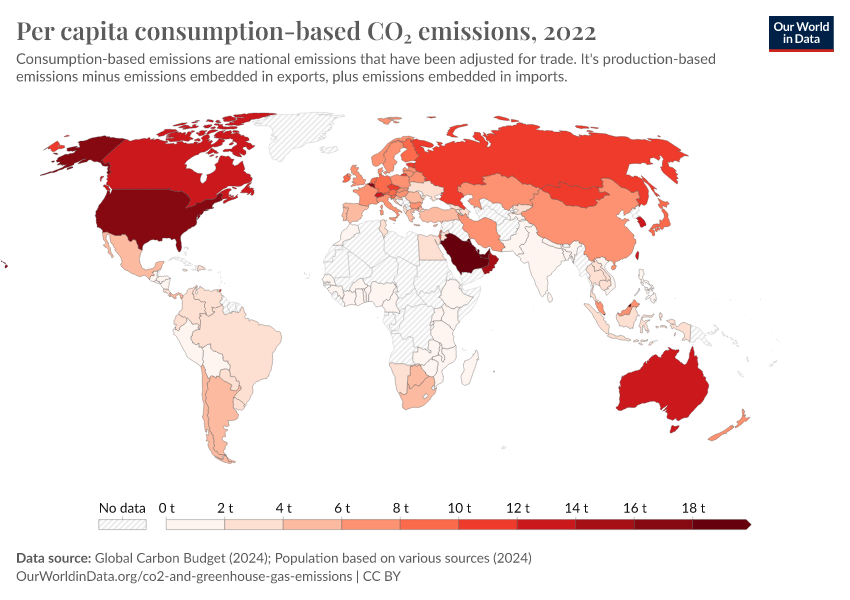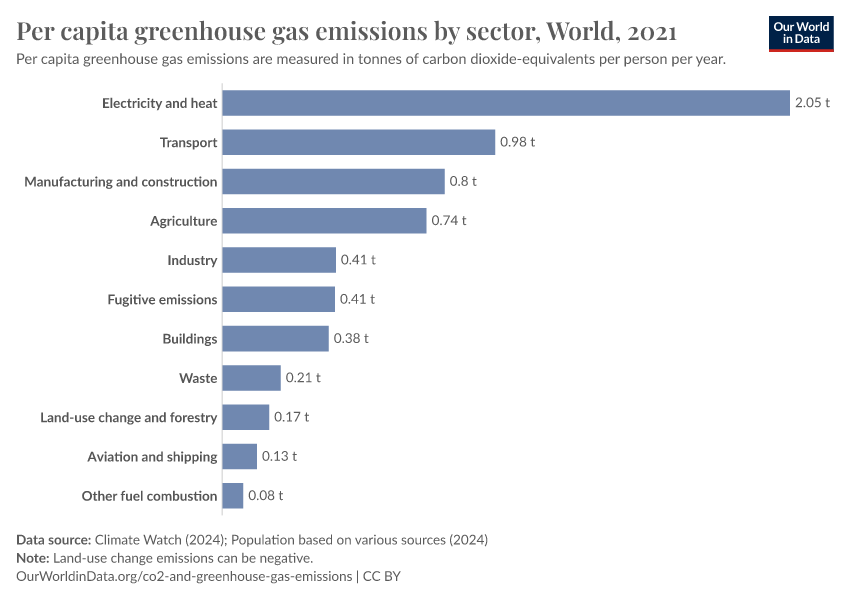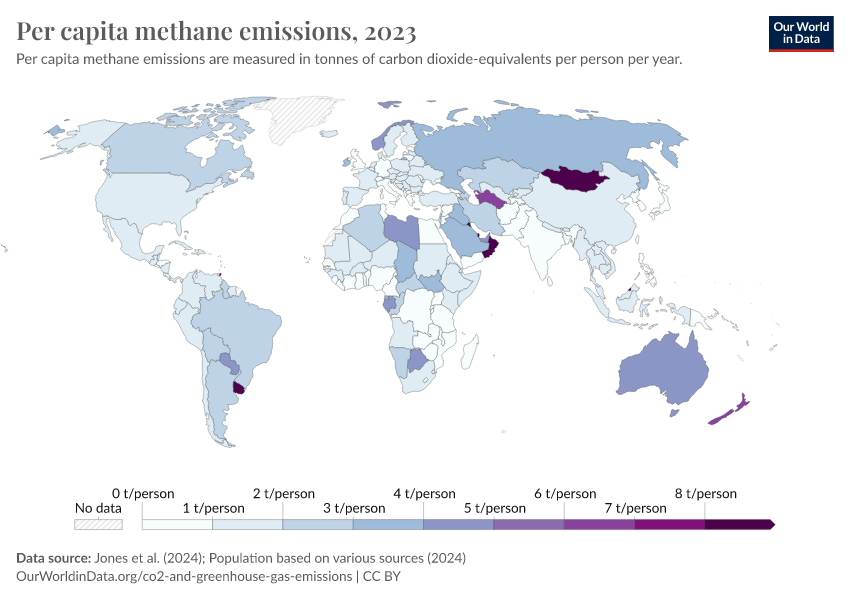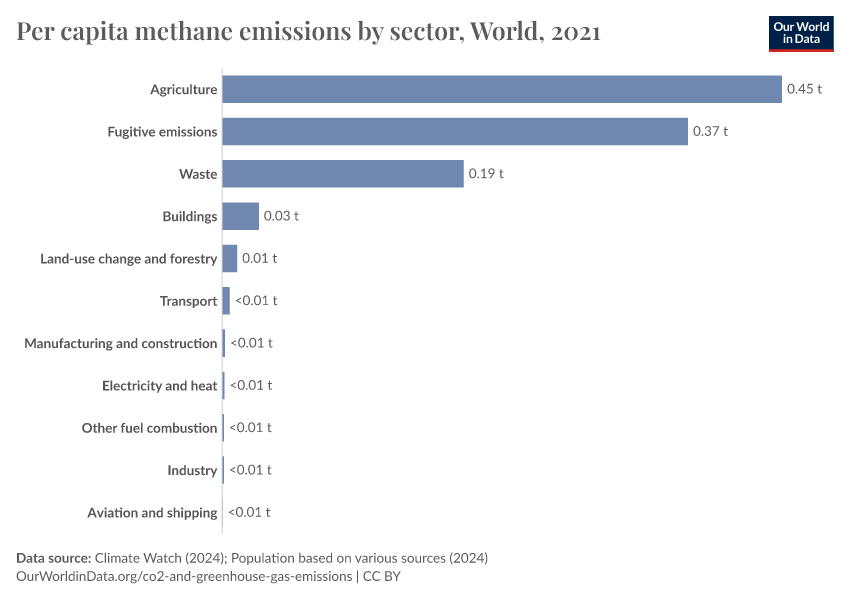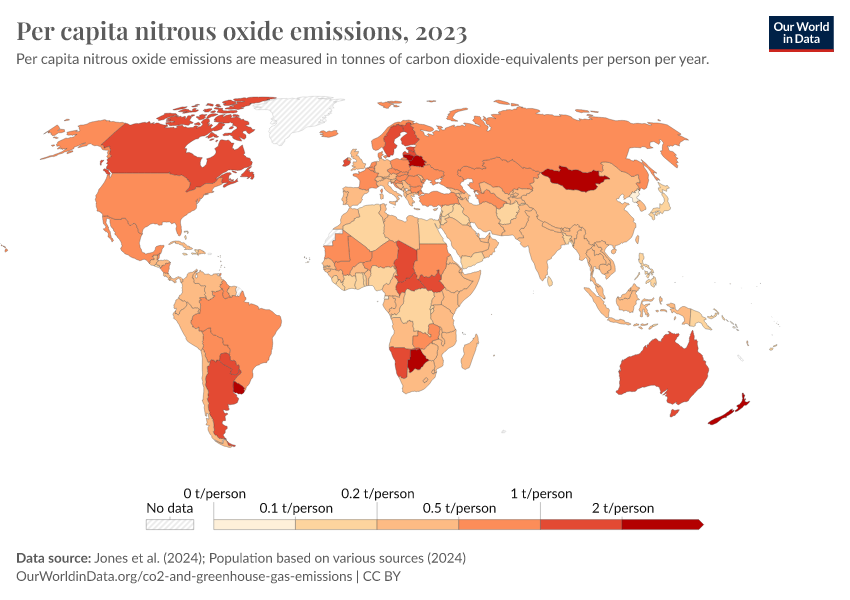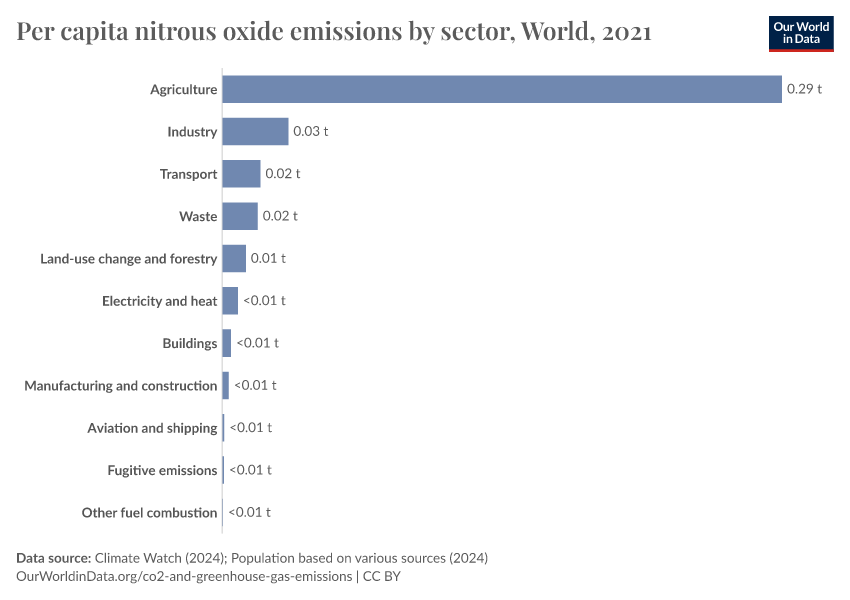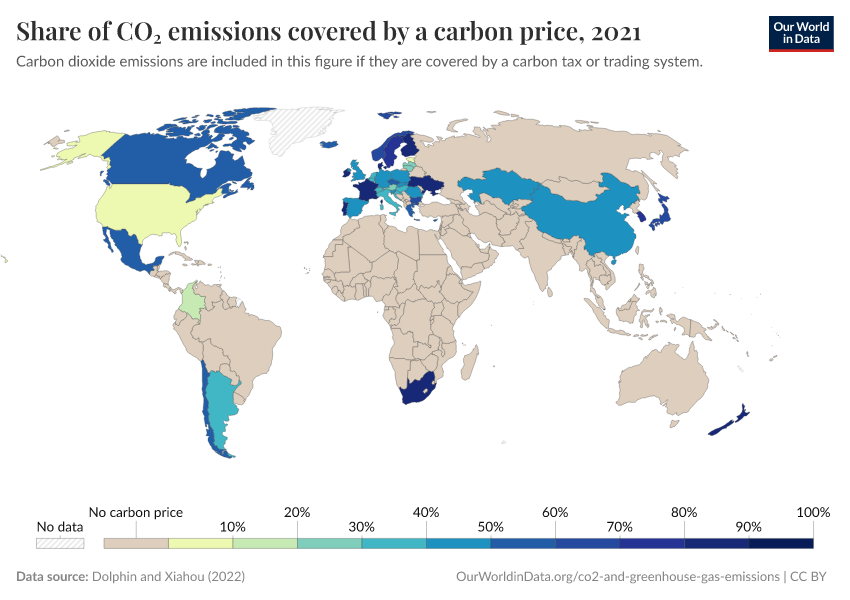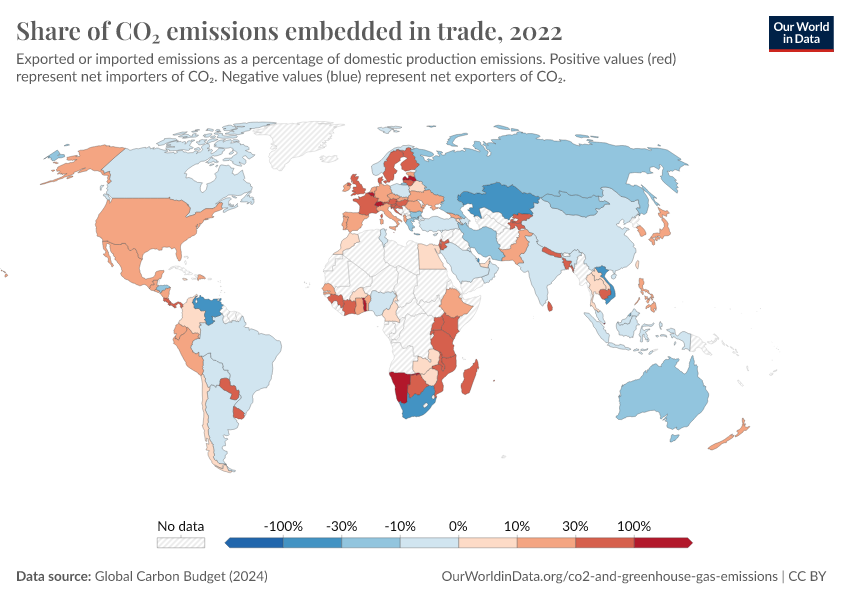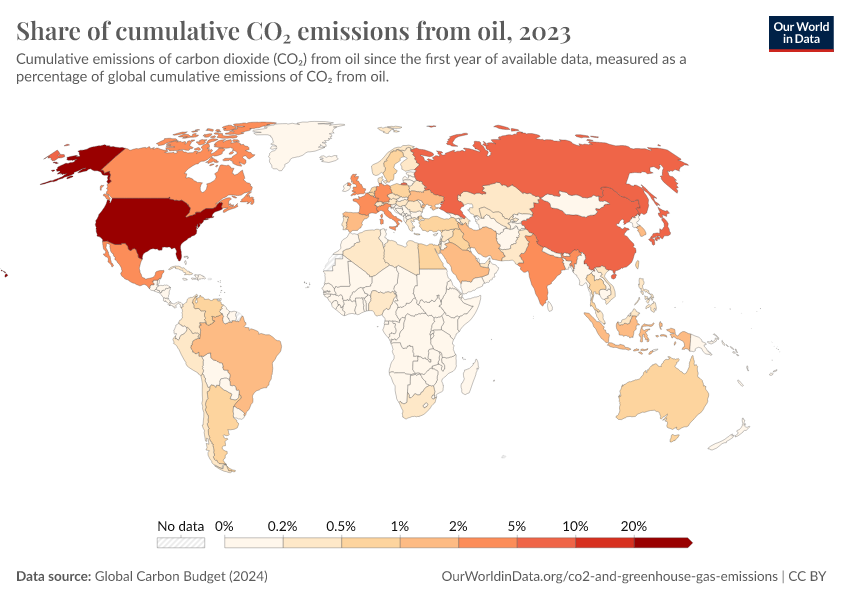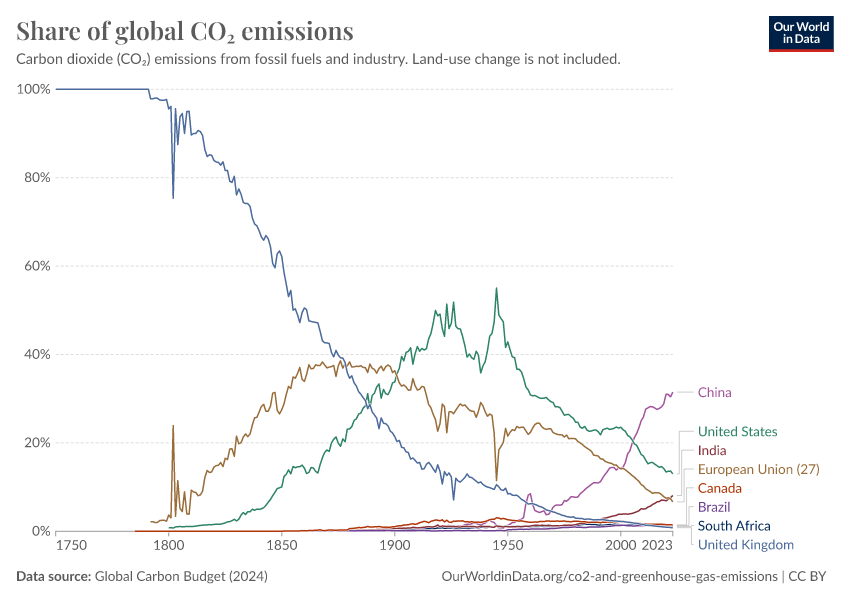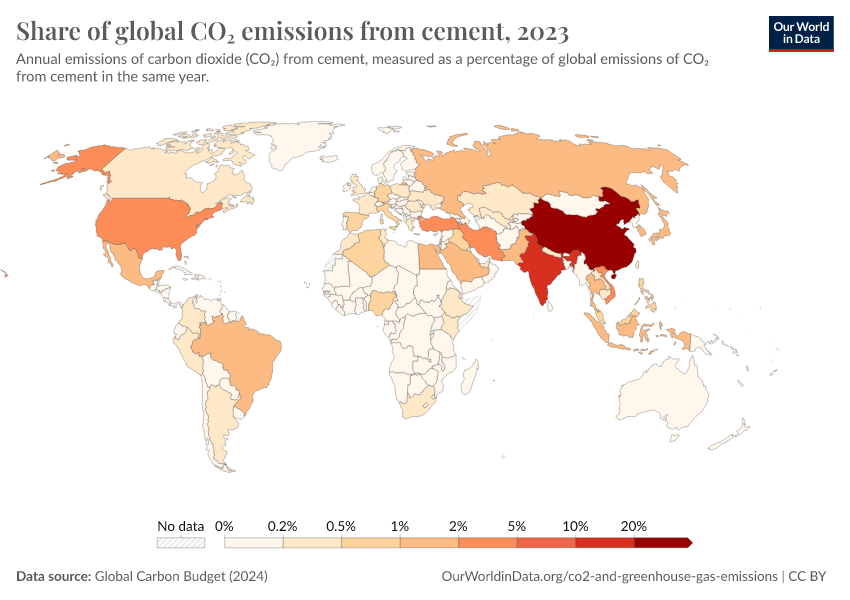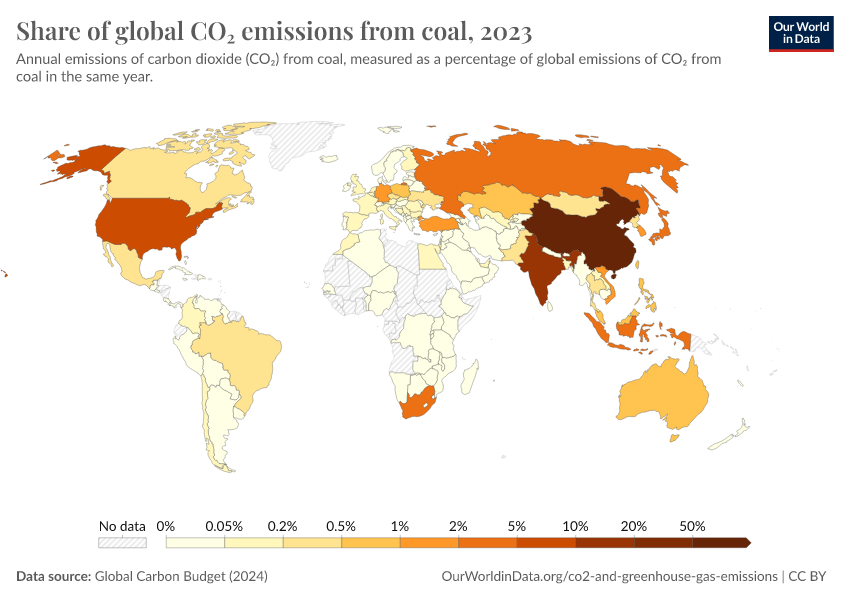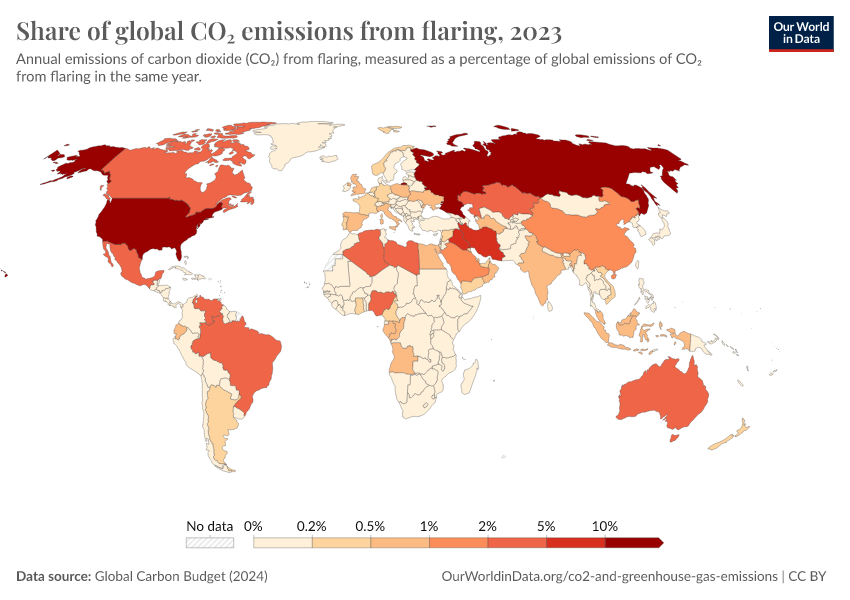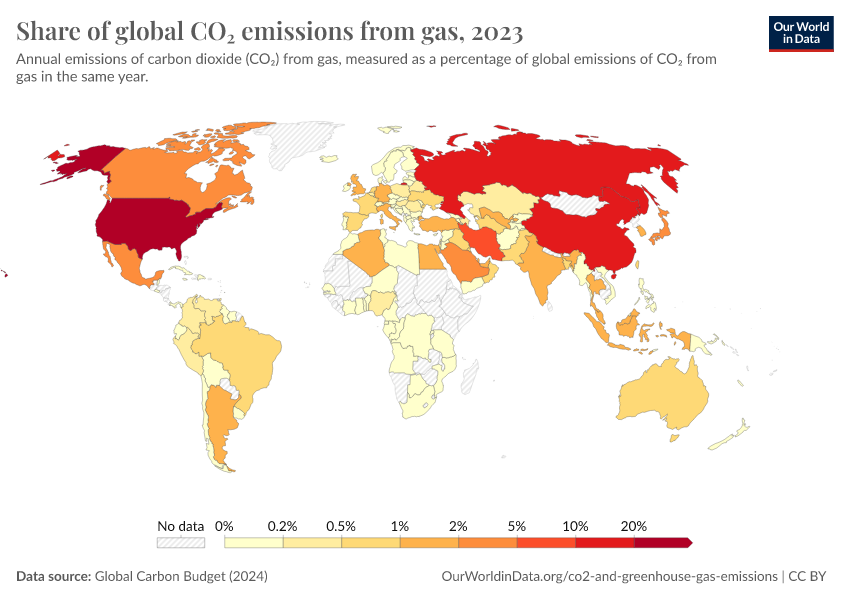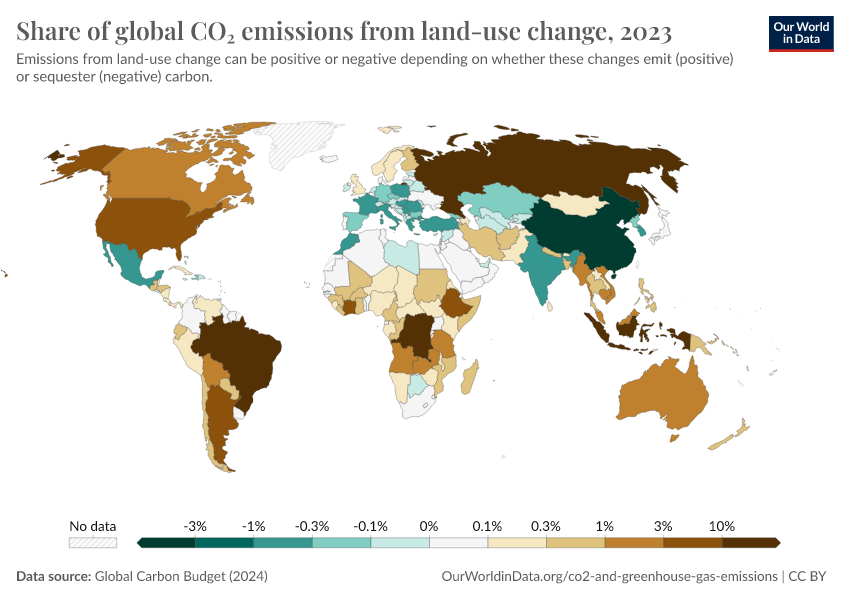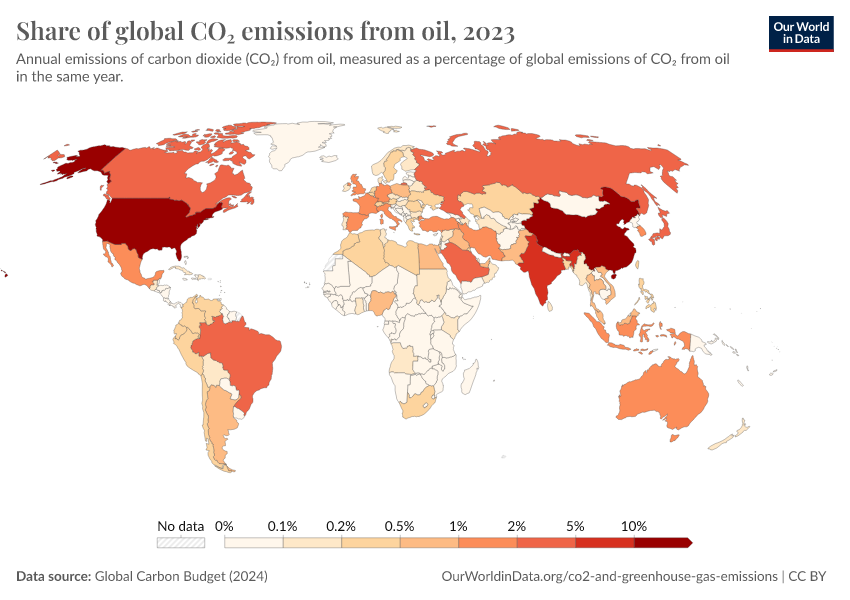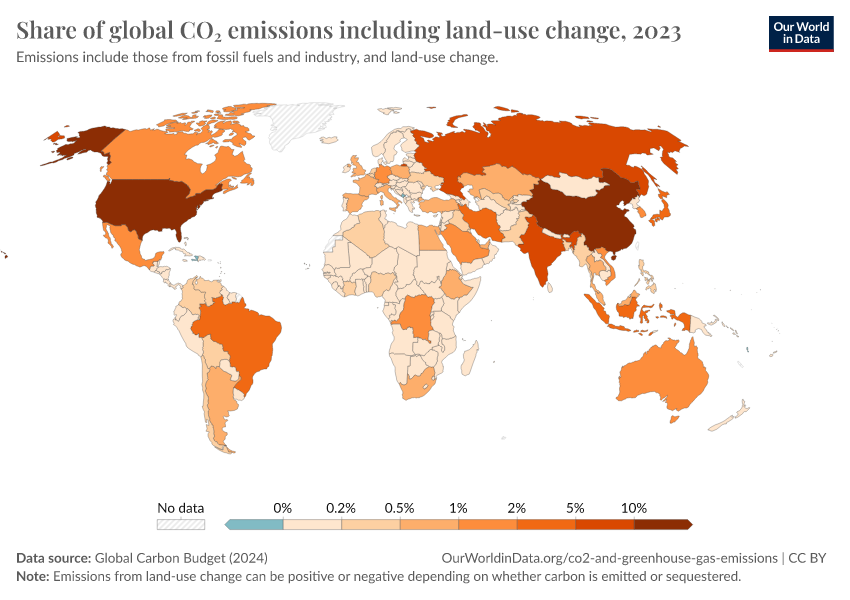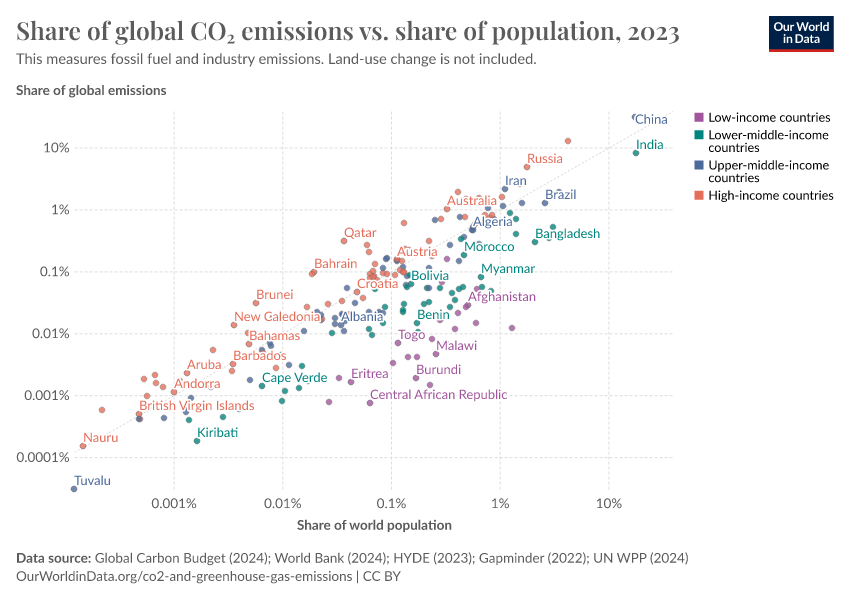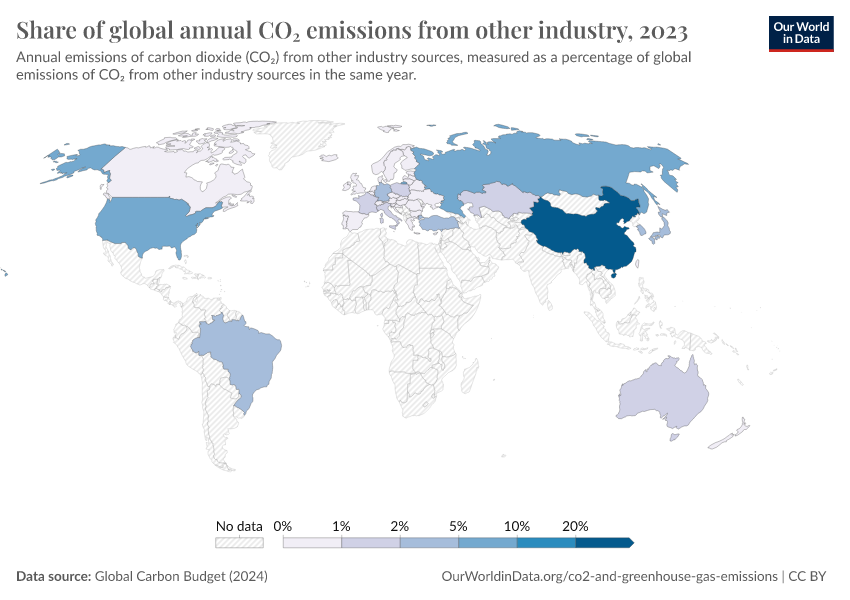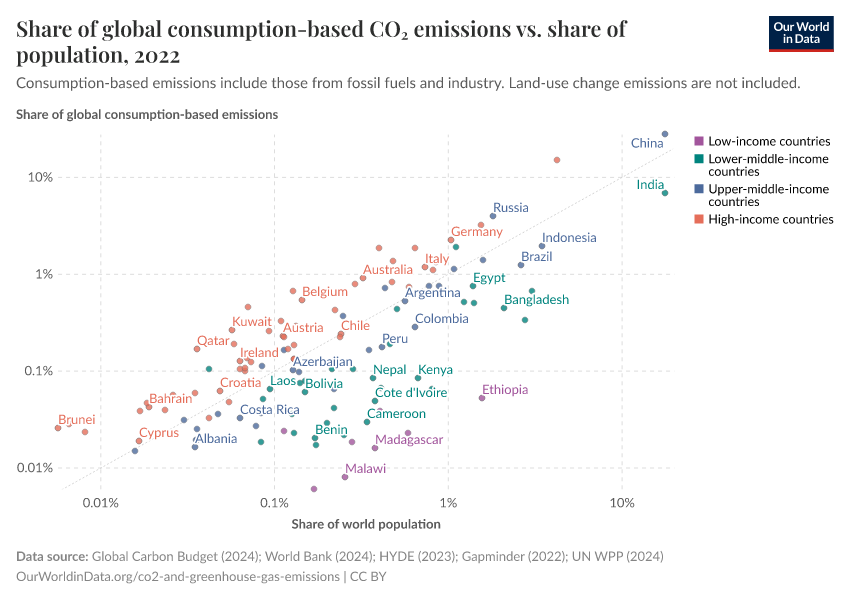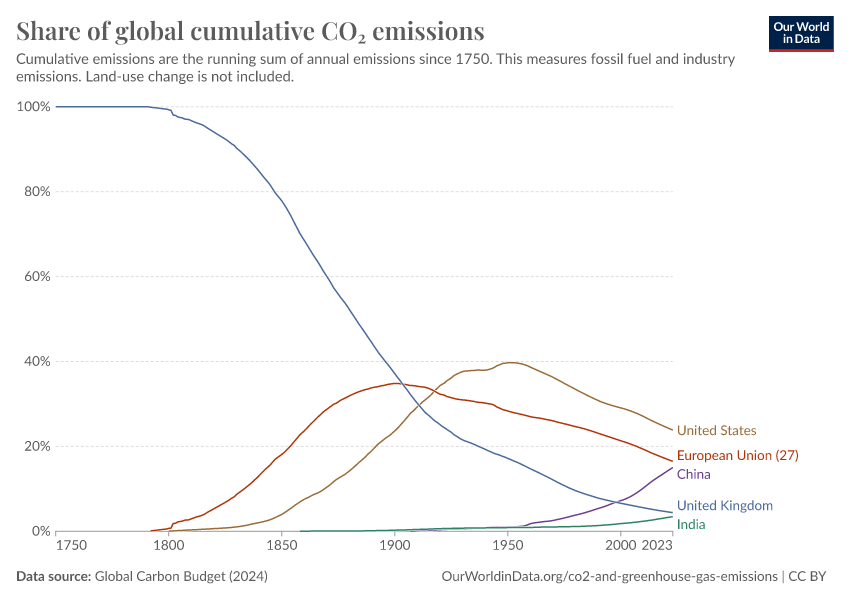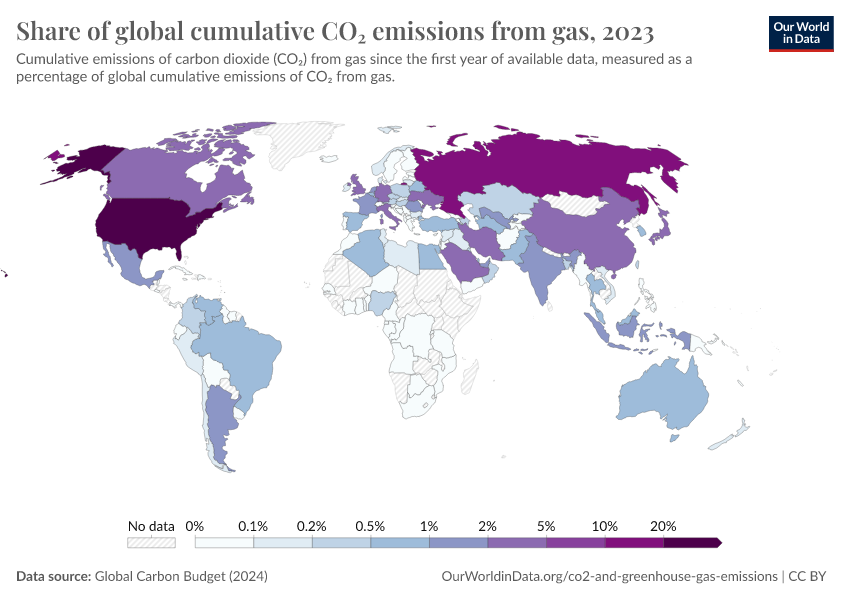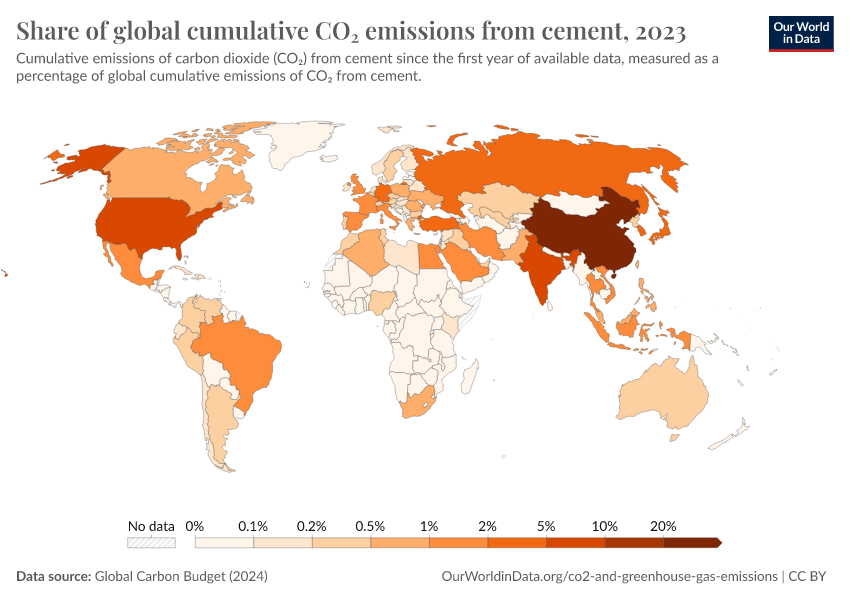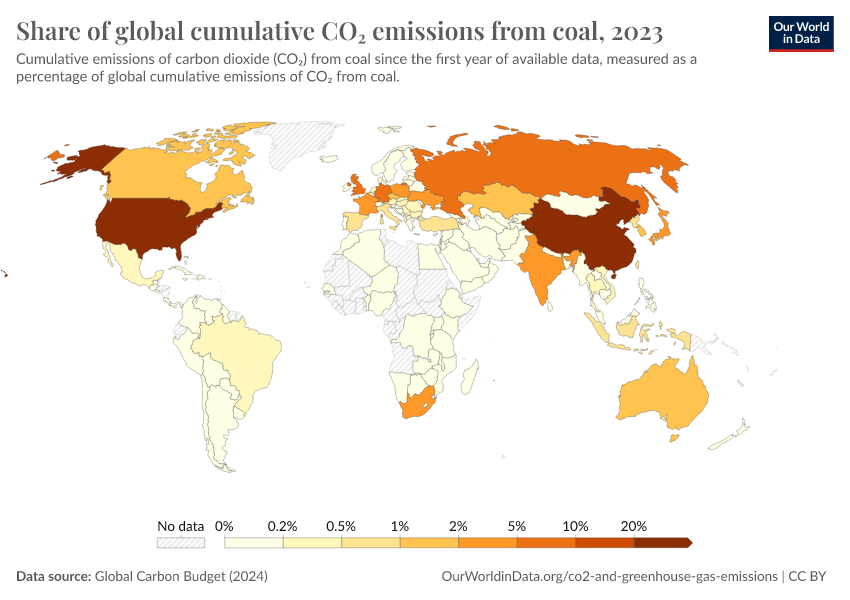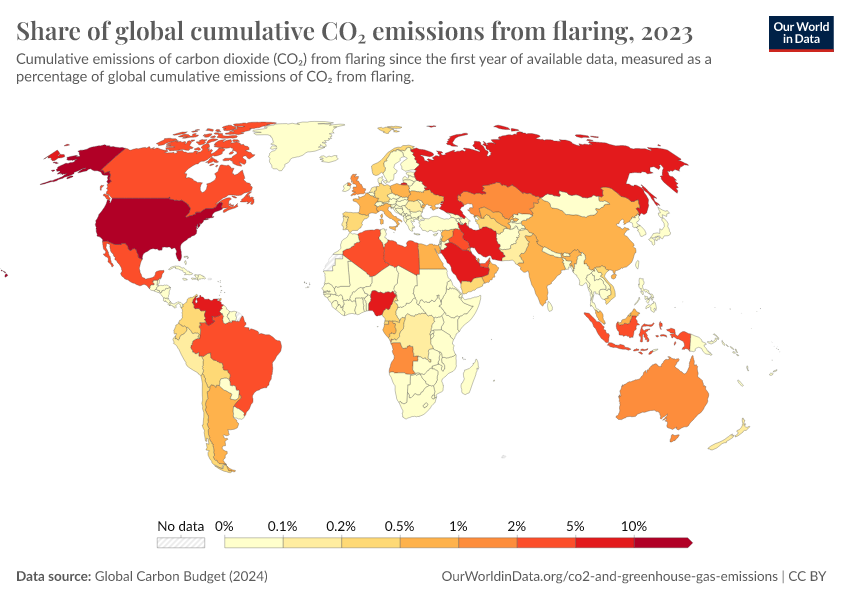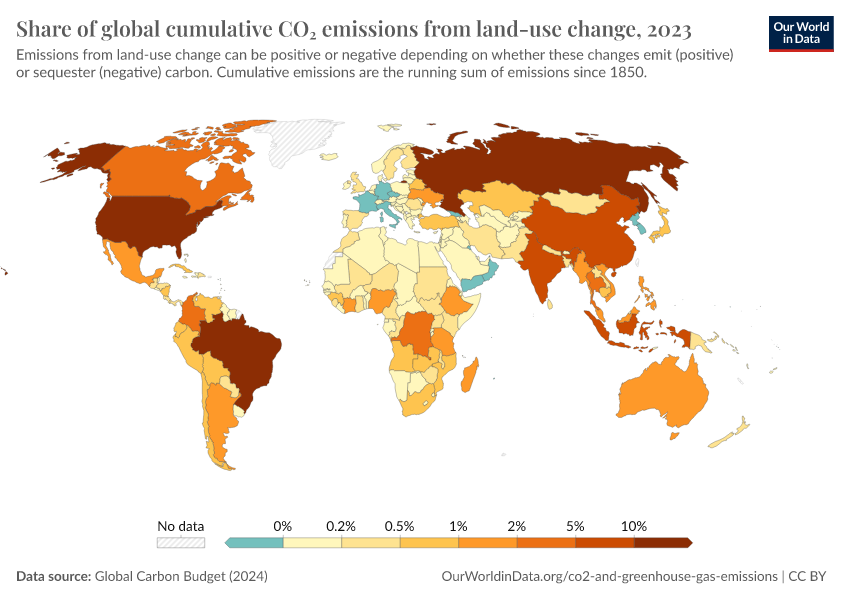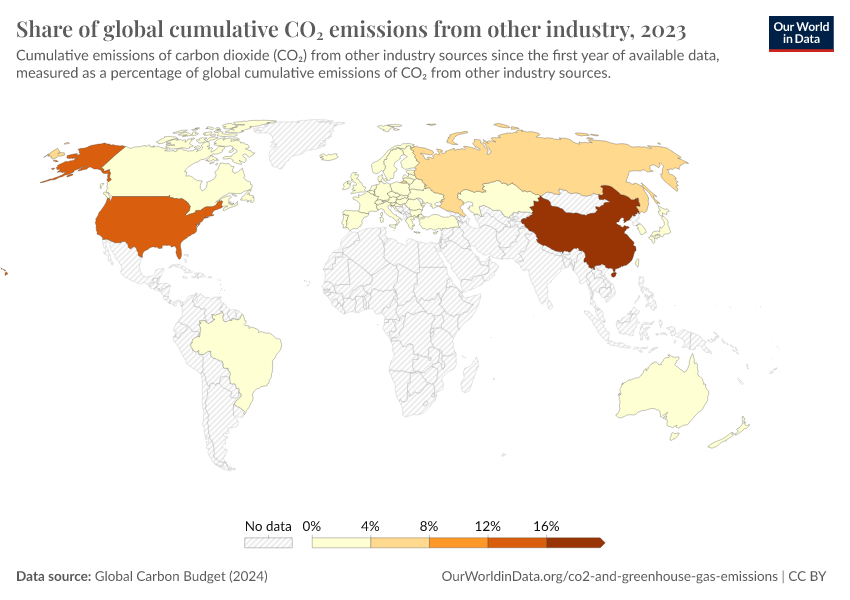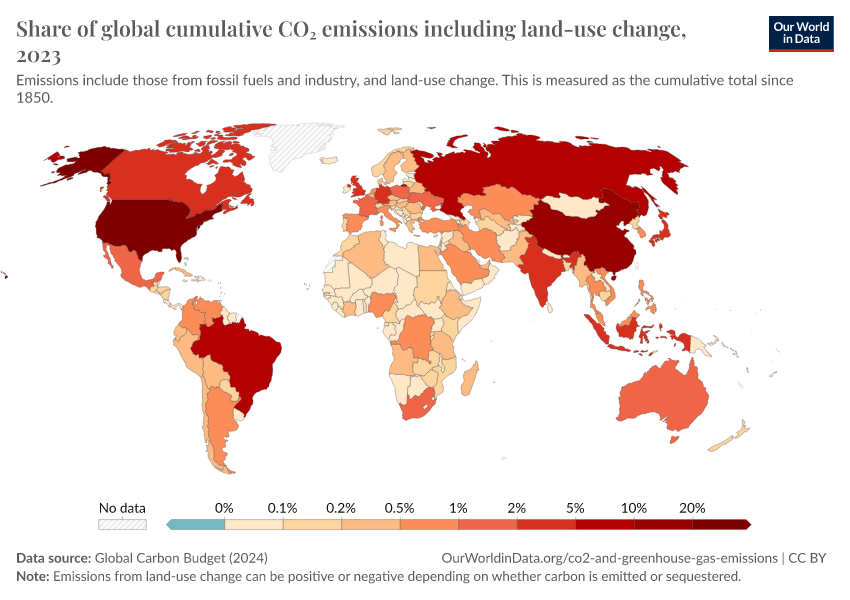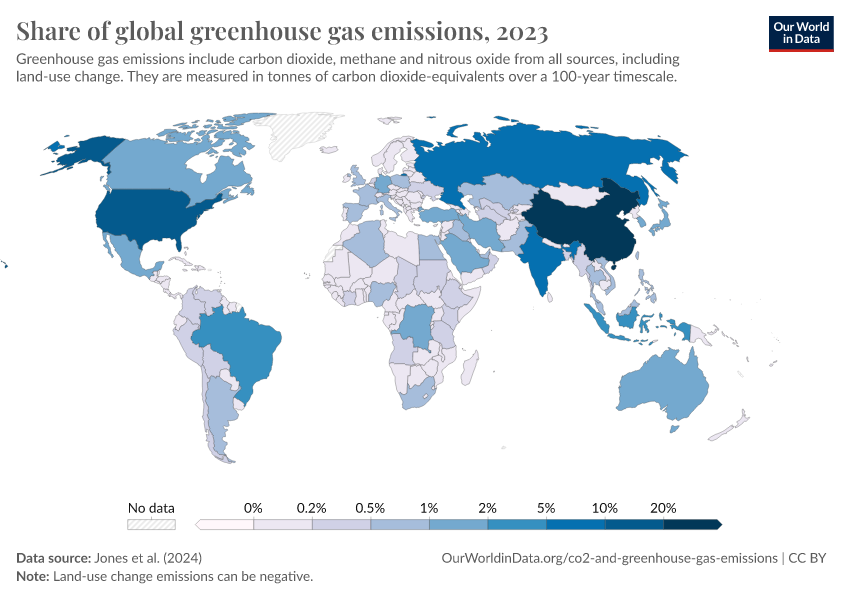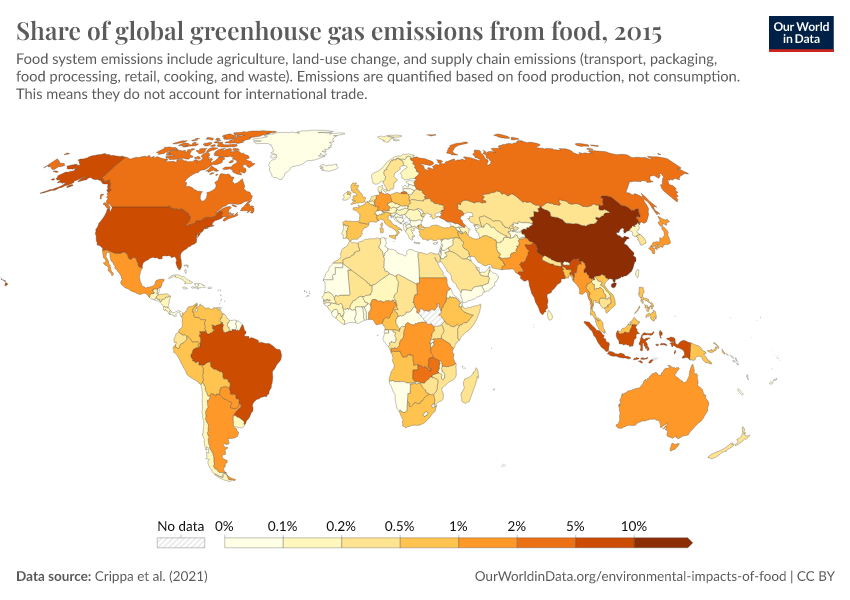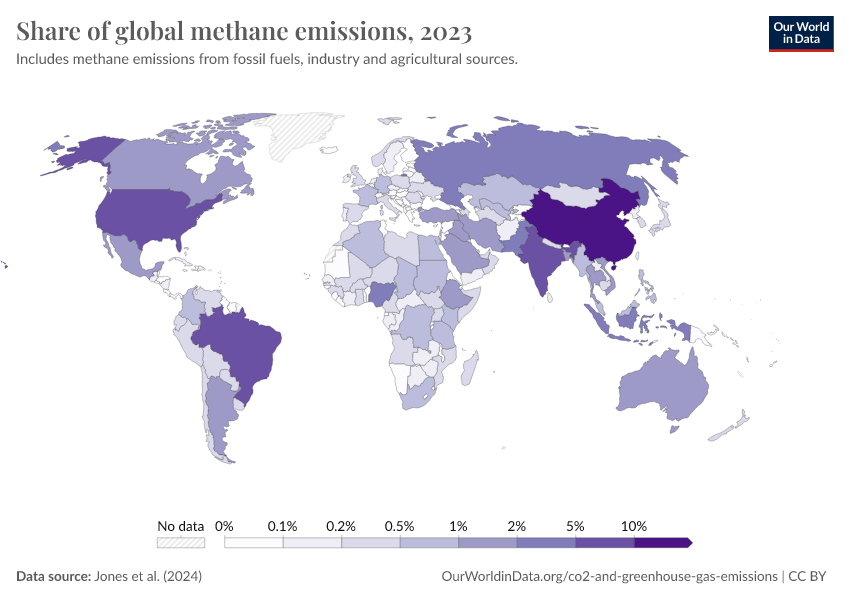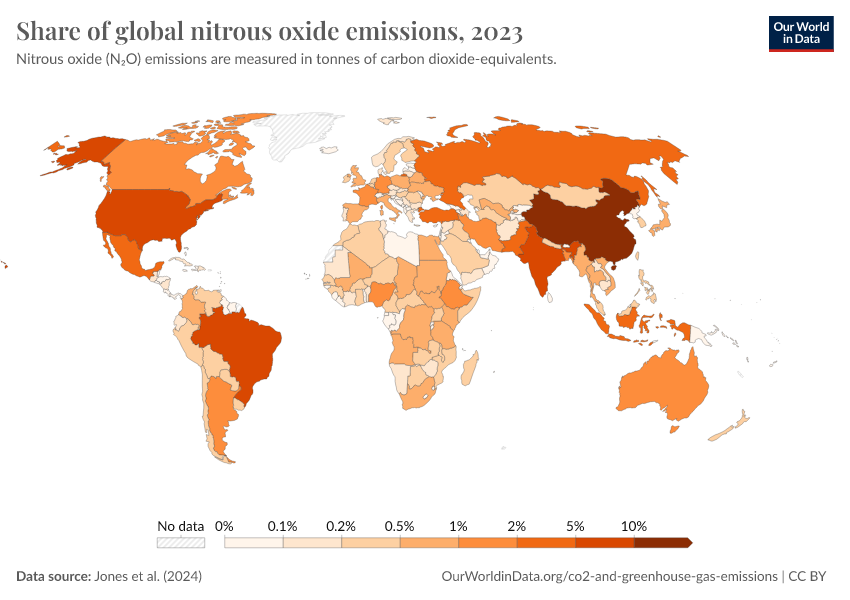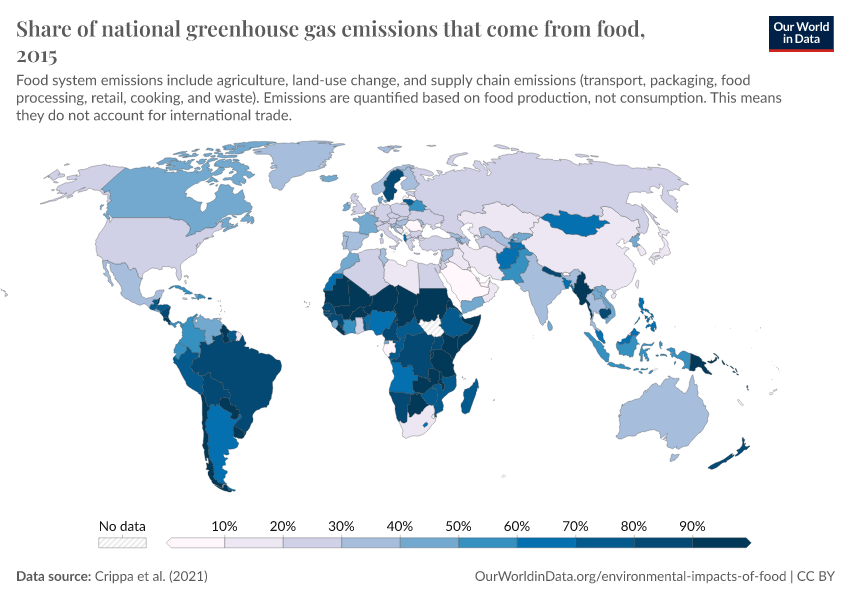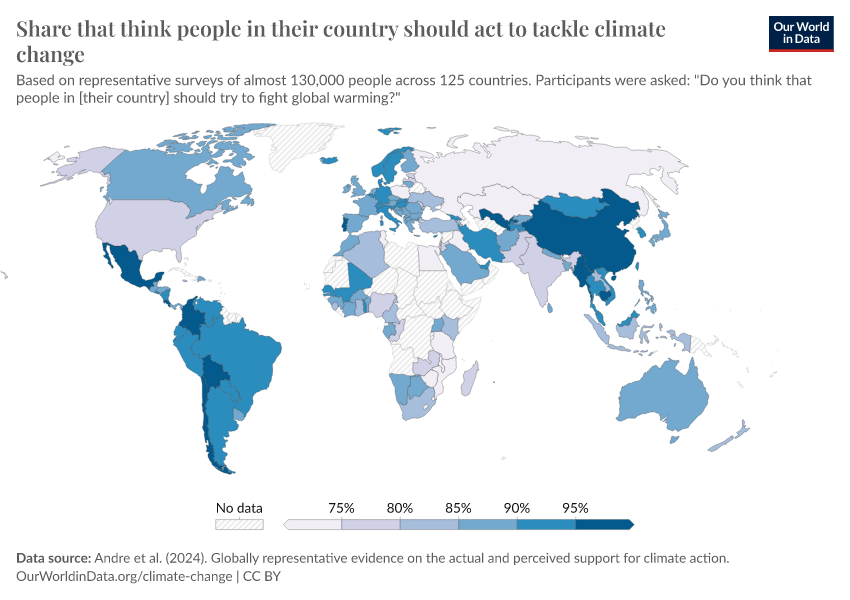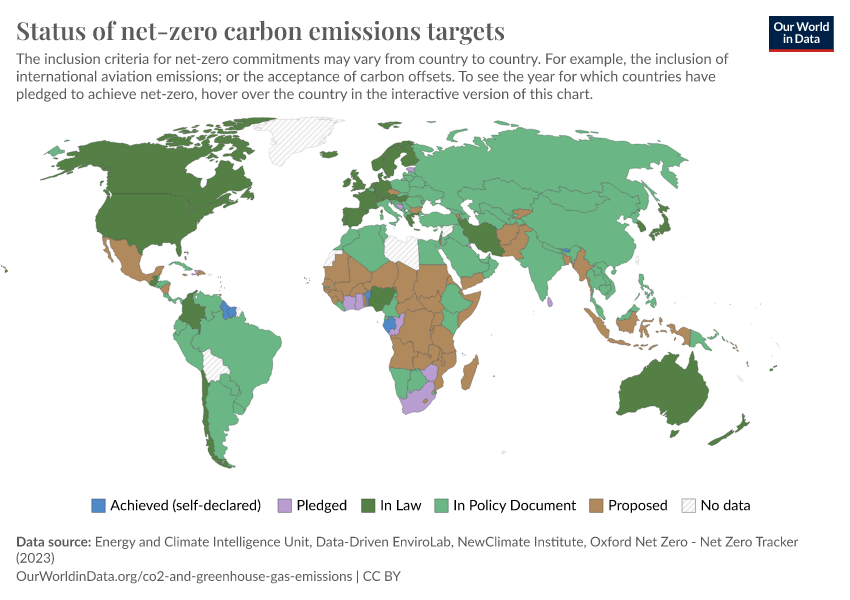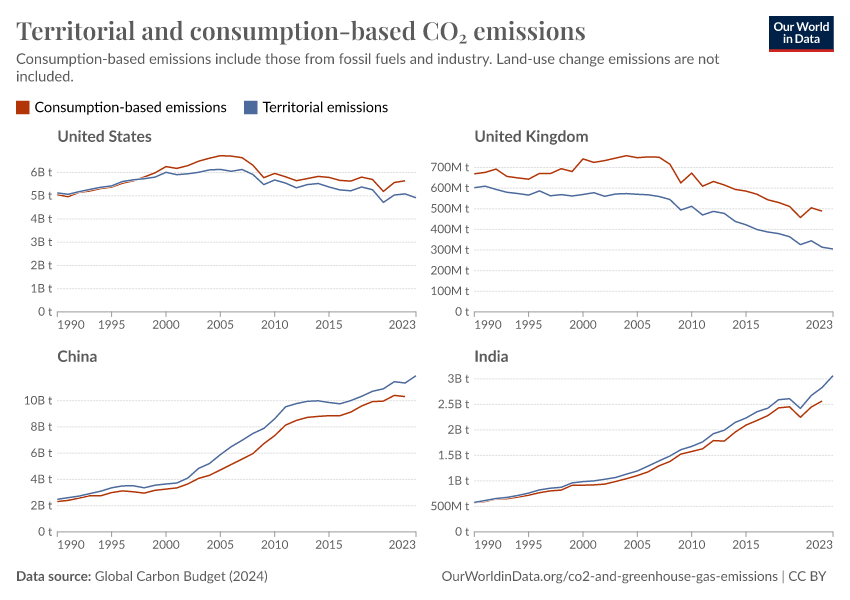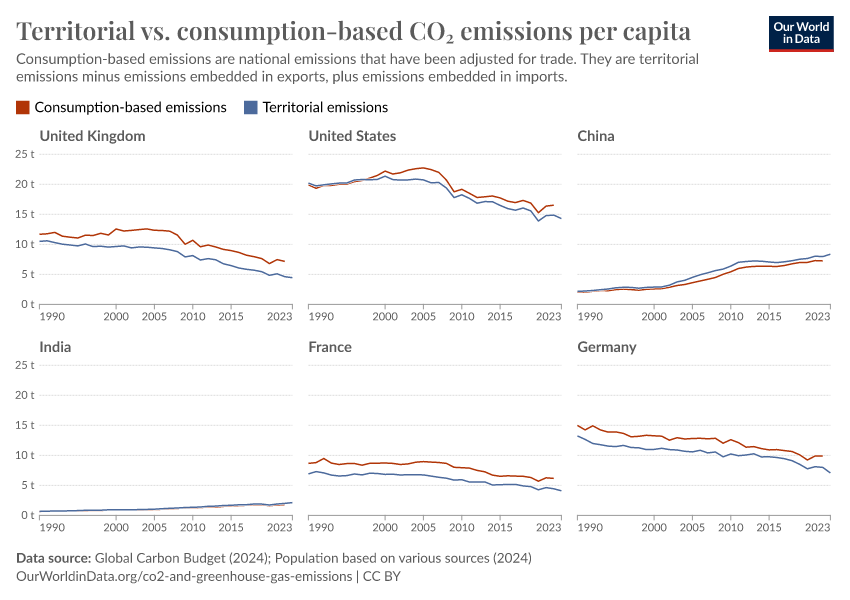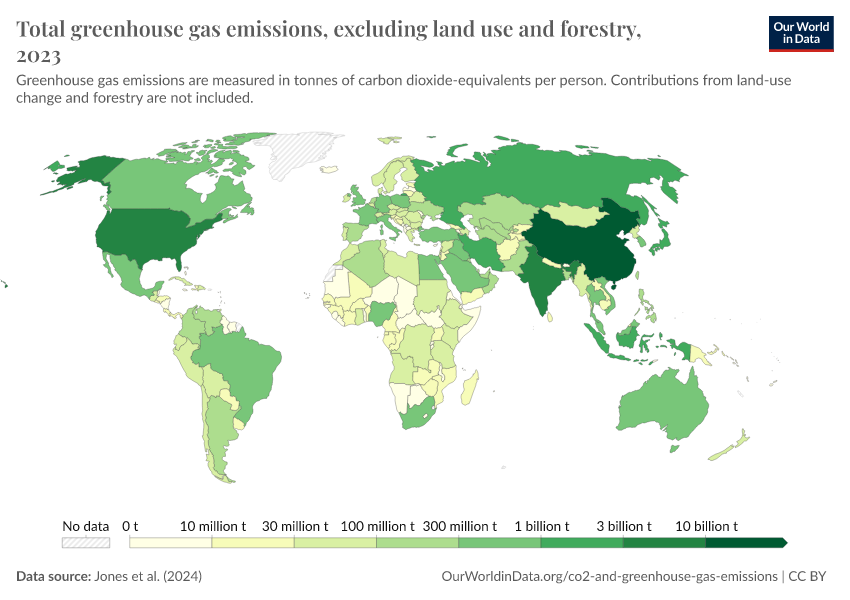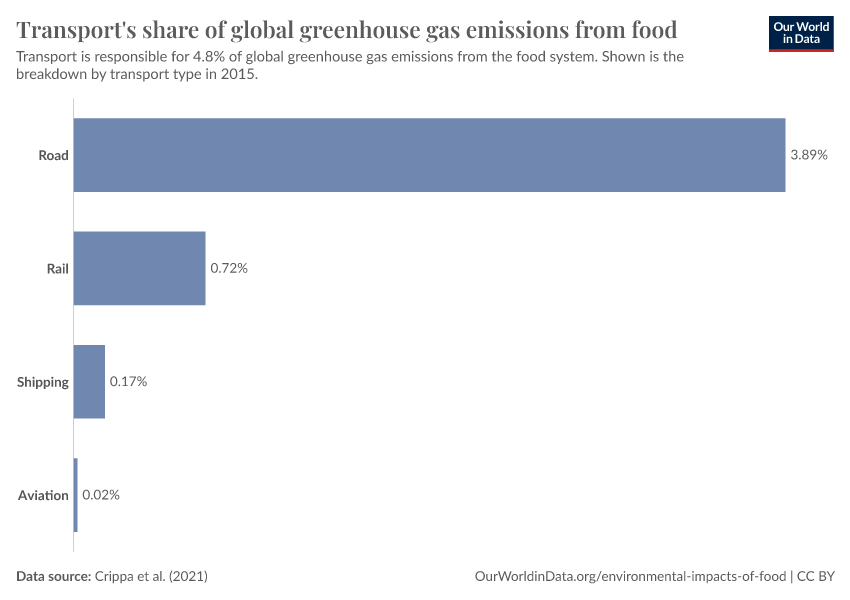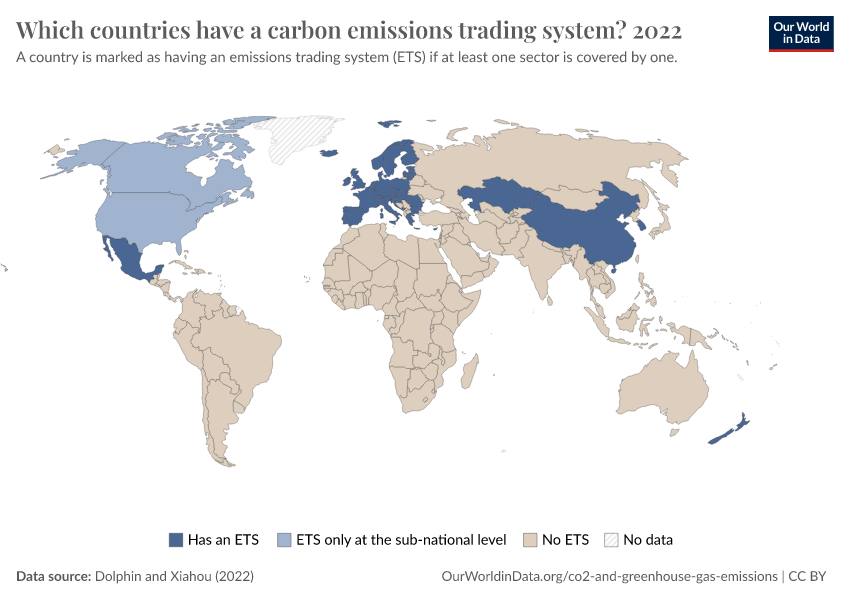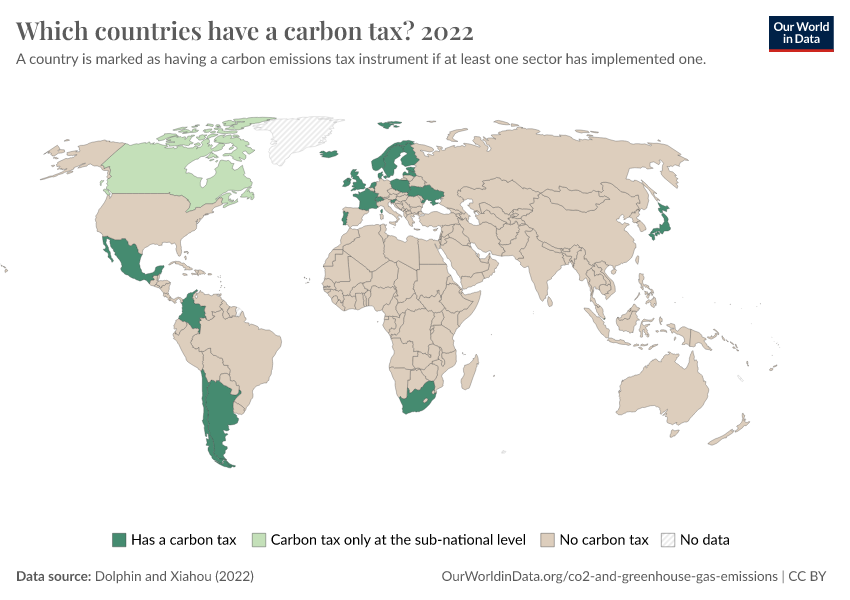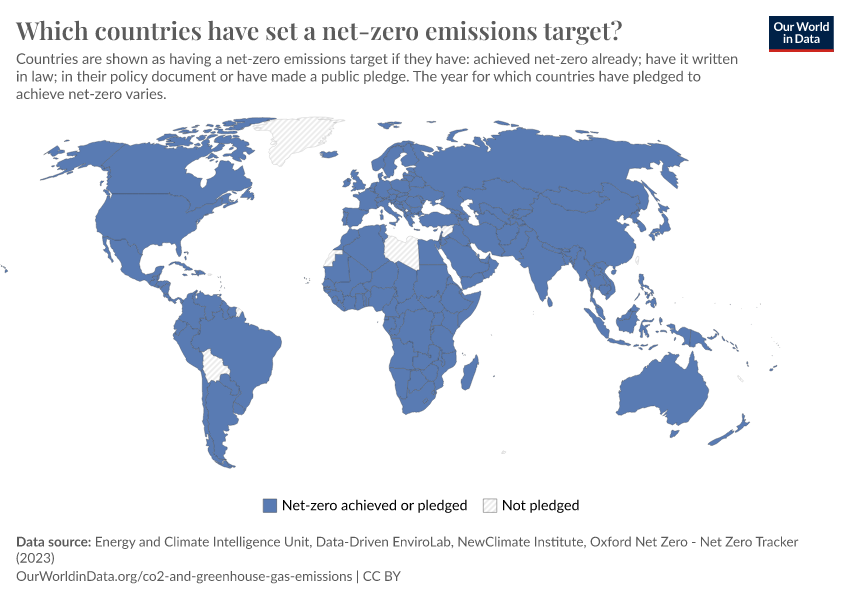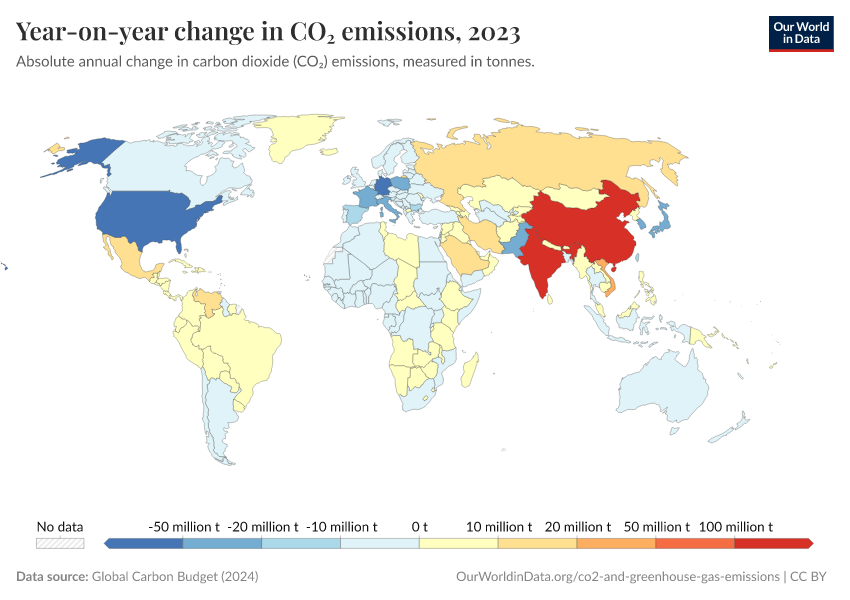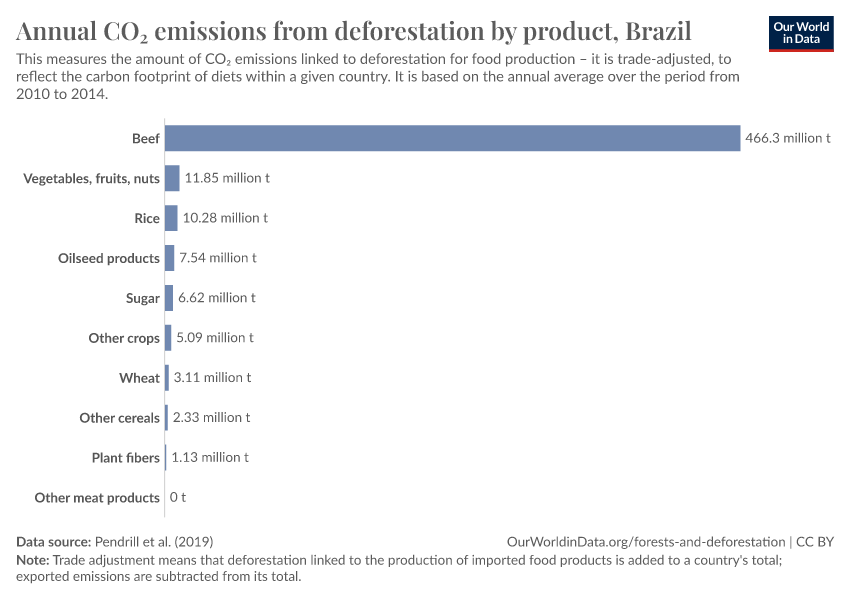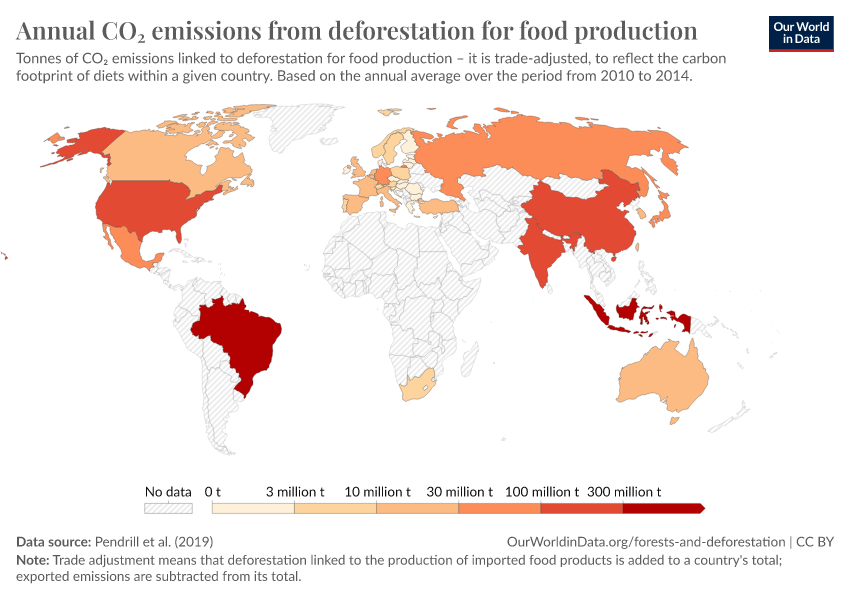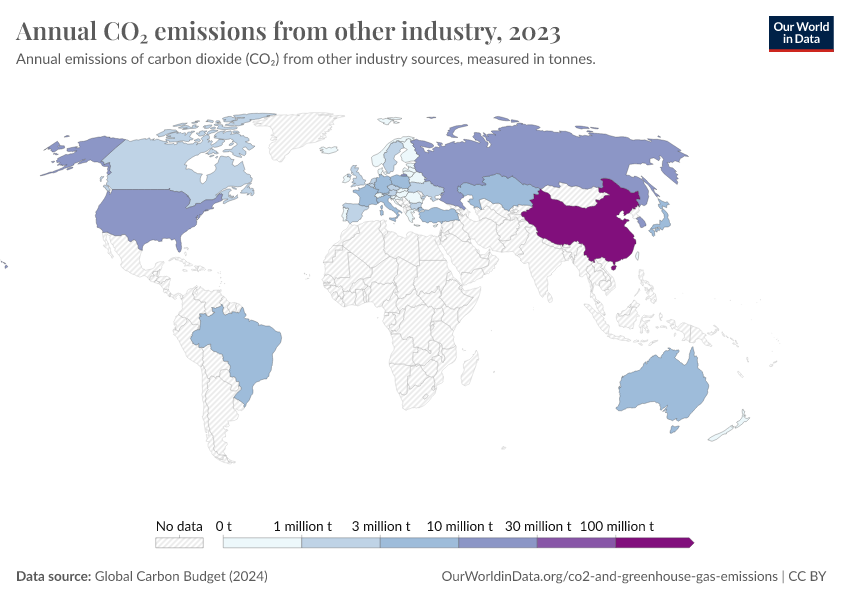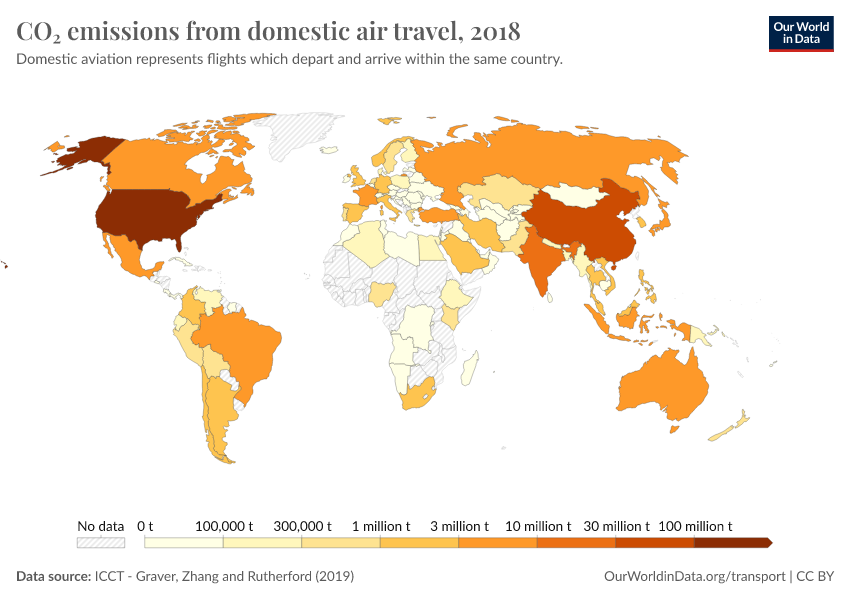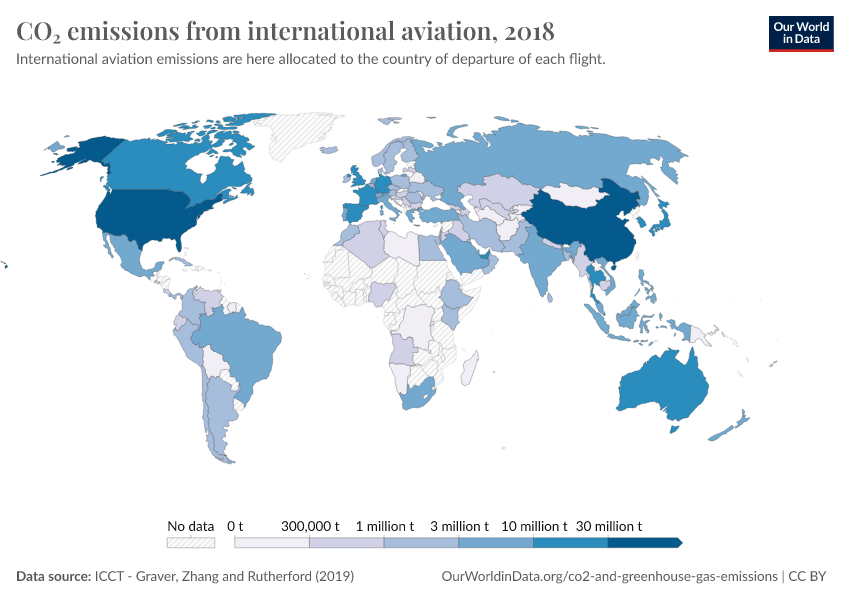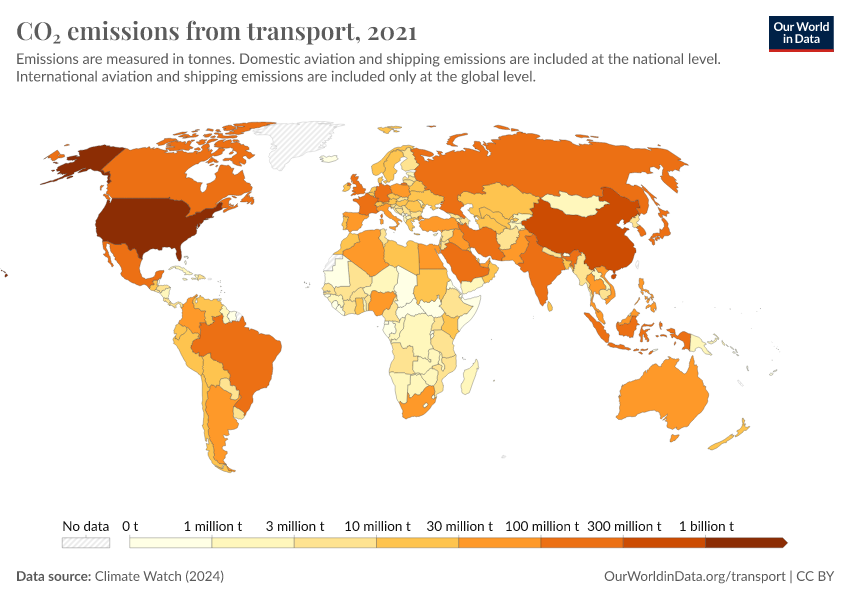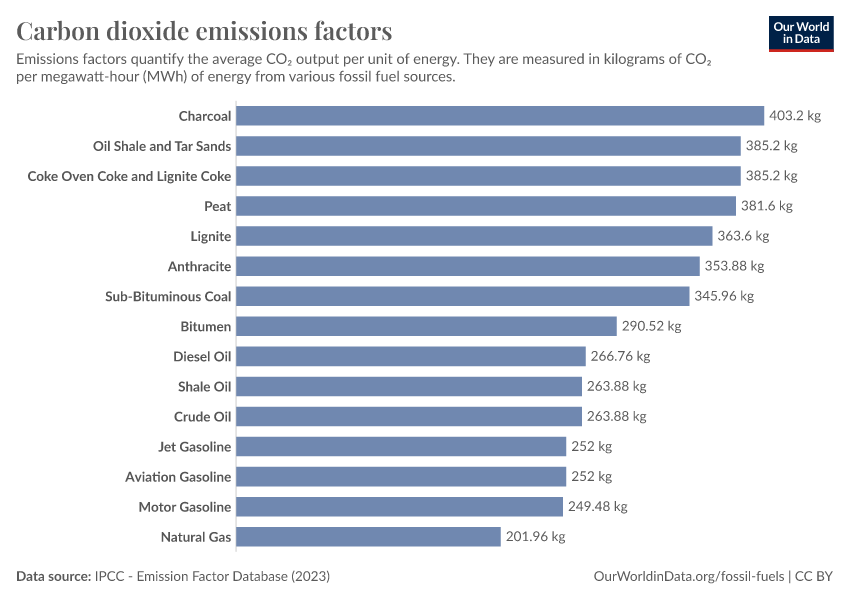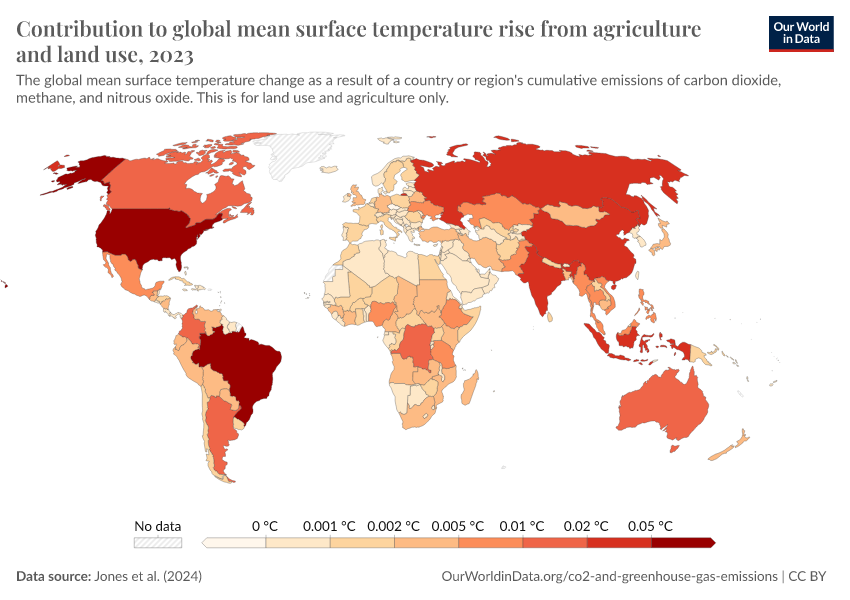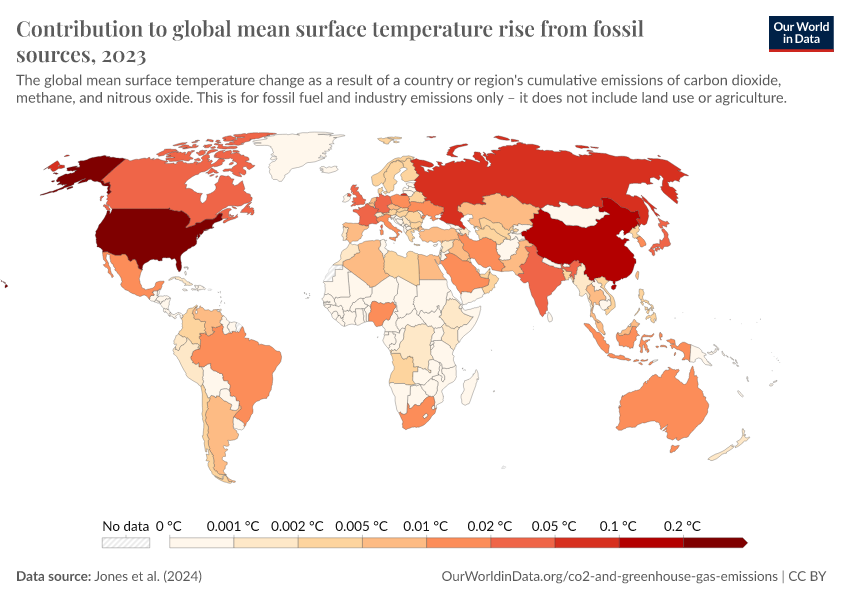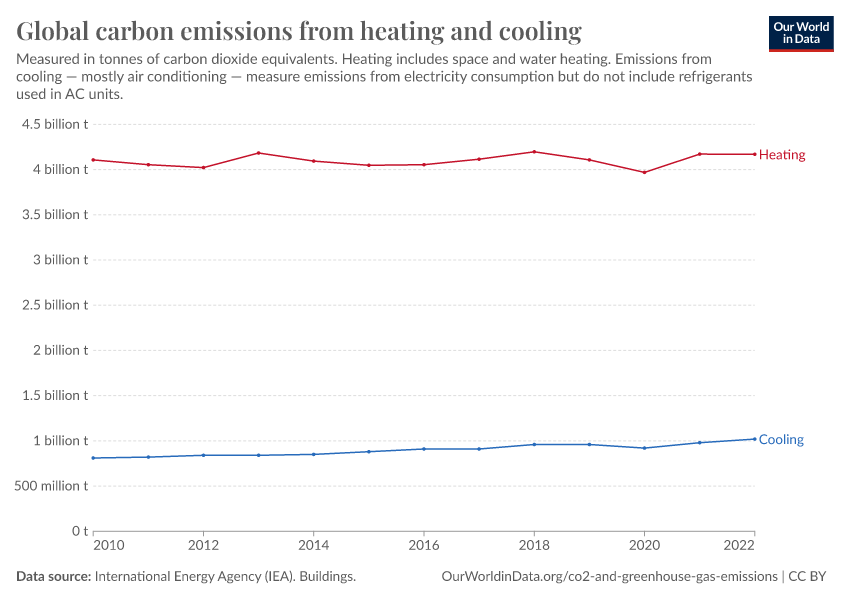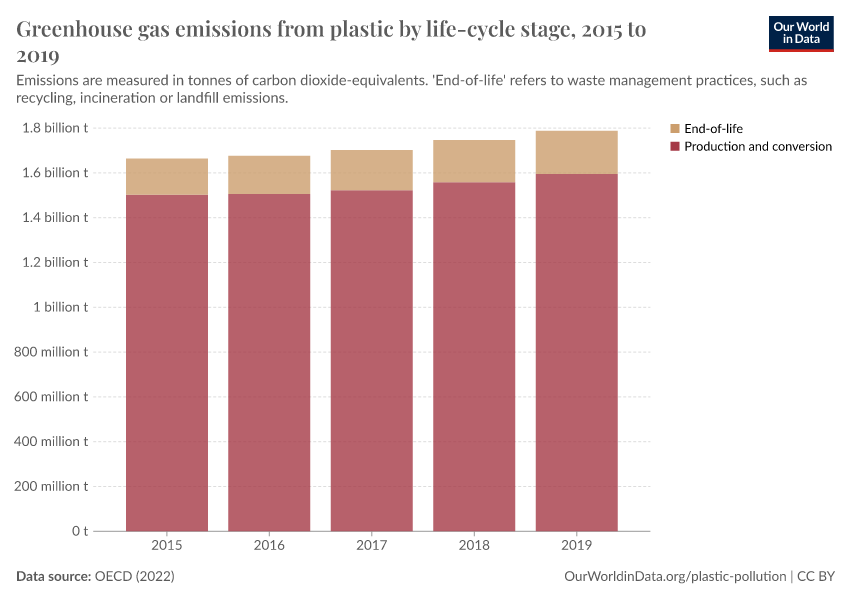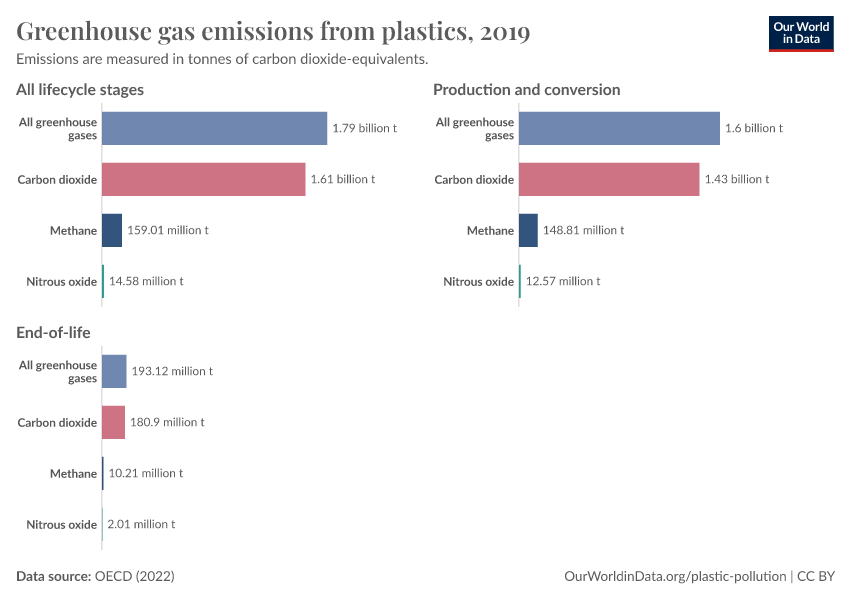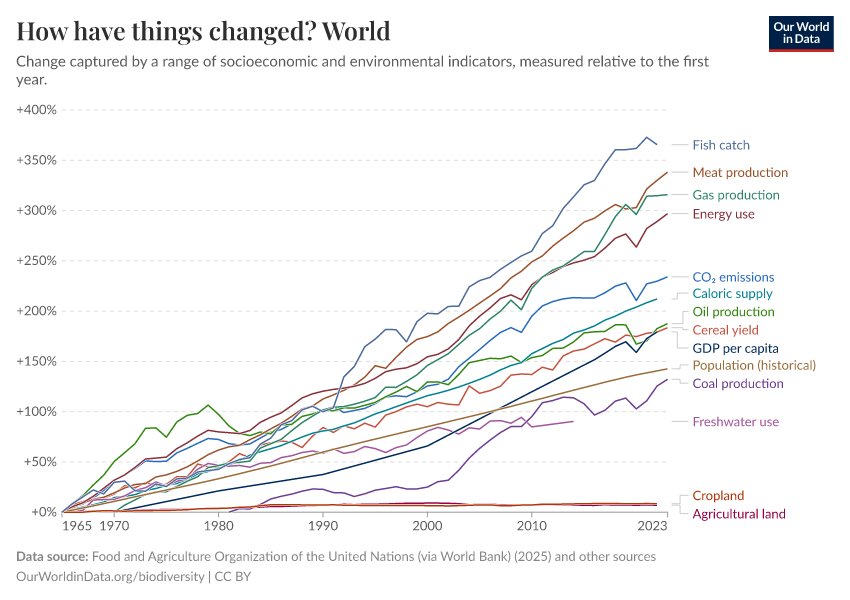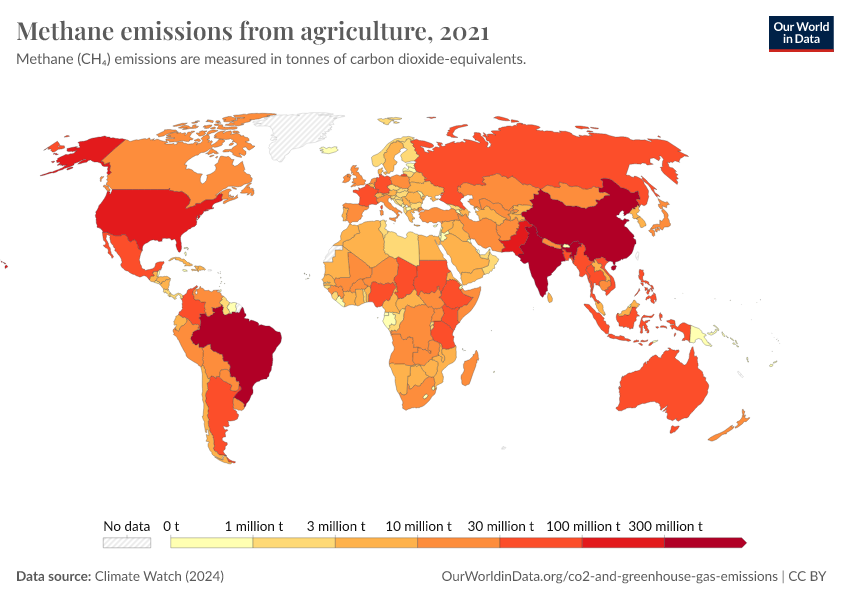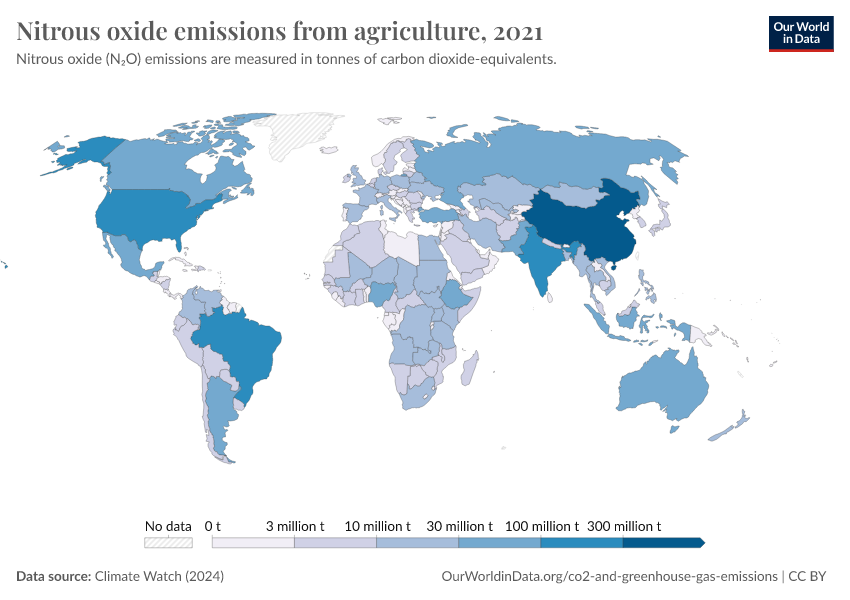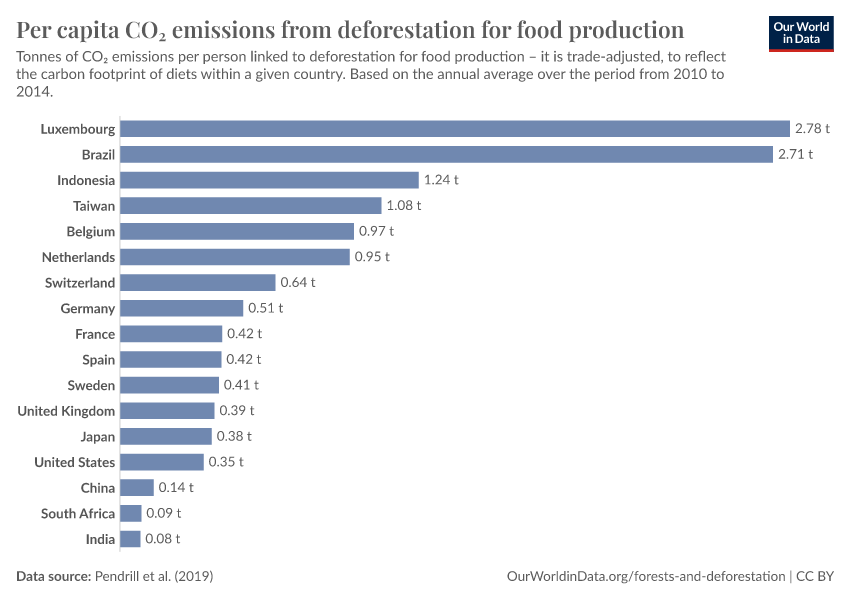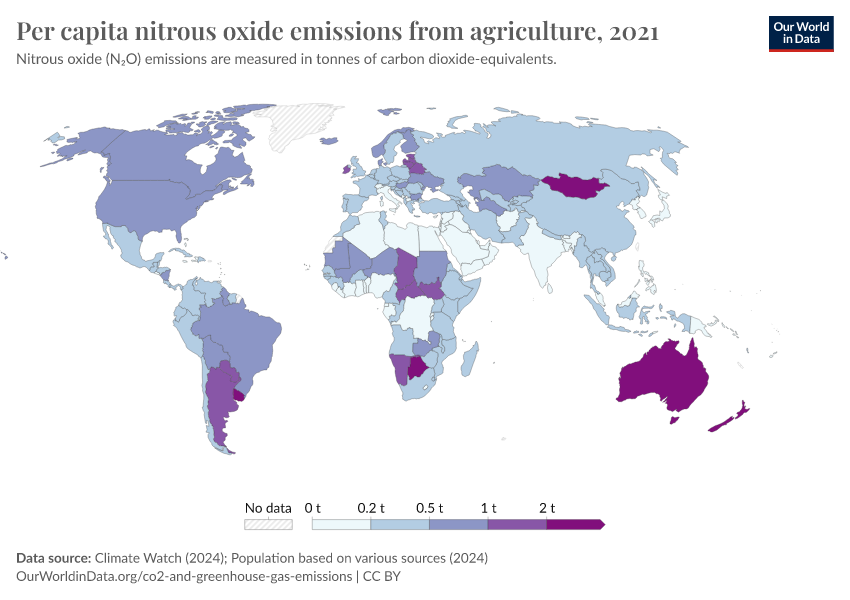CO₂ and Greenhouse Gas Emissions
Human emissions of greenhouse gases are the primary driver of climate change today.1
CO2 and other greenhouse gases like methane and nitrous oxide are emitted when we burn fossil fuels, produce materials such as steel, cement, and plastics, and grow the food we eat. If we want to reduce these emissions, we need to transform our energy systems, industries, and food systems.
At the same time, we need to tackle energy poverty, low standards of living, and poor nutrition, which all remain enormous problems for billions of people.
Technological advances could allow us to do both. The prices of solar, wind, and batteries have plummeted in recent decades, increasingly undercutting the cost of fossil fuel alternatives. Further progress could allow us to provide cheap, clean energy for everyone. Political change is essential to create a system that supports rapid decarbonization.
Emissions are still rising in many parts of the world. However, several countries have managed to cut their emissions in recent decades. With affordable low-carbon technologies, other countries can increase their living standards without the high-carbon pathway that rich countries followed in the past.
On this page, you can find our data, visualizations, and writing on CO2 and other greenhouse gas emissions.
Explore Data on CO2 and Greenhouse Gas Emissions
Research & Writing
September 27, 2023
Per capita, national, historical: how do countries compare on CO2 metrics?
There are many ways to measure countries’ contributions to climate change. What do they tell us?
December 01, 2021
Many countries have decoupled economic growth from CO2 emissions, even if we take offshored production into account
It is possible to reduce emissions while growing the economy. But this decoupling needs to happen faster.
September 29, 2023
How much CO2 can the world emit while keeping warming below 1.5°C and 2°C?
The budget to keep temperatures below 1.5°C is less than a decade of current emissions. For 2°C, it’s less than three decades.
Overview Articles
Emissions from Energy
November 03, 2021
Fossil fuel subsidies: If we want to reduce greenhouse gas emissions we should not pay people to burn fossil fuels
December 10, 2020
The world’s energy problem
February 10, 2020
What are the safest and cleanest sources of energy?
December 01, 2020
Why did renewables become so cheap so fast?
Emissions from Transport
October 06, 2020
Cars, planes, trains: where do CO₂ emissions from transport come from?
August 30, 2023
Which form of transport has the smallest carbon footprint?
November 09, 2020
Where in the world do people have the highest CO2 emissions from flying?
April 08, 2024
What share of global CO₂ emissions come from aviation?
Emissions from Food
June 10, 2021
Emissions from food alone could use up all of our budget for 1.5°C or 2°C – but we have a range of opportunities to avoid this
November 06, 2019
Food production is responsible for one-quarter of the world’s greenhouse gas emissions
March 18, 2020
Food waste is responsible for 6% of global greenhouse gas emissions
March 18, 2021
How much of global greenhouse gas emissions come from food?
February 04, 2020
Less meat is nearly always better than sustainable meat, to reduce your carbon footprint
January 24, 2020
You want to reduce the carbon footprint of your food? Focus on what you eat, not whether your food is local
More Key Articles on Greenhouse Gas Emissions
June 01, 2021
The argument for a carbon price
October 14, 2022
Which countries have put a price on carbon?
September 18, 2020
Sector by sector: where do global greenhouse gas emissions come from?
October 07, 2019
How do CO2 emissions compare when we adjust for trade?
August 31, 2023
Global inequalities in CO2 emissions
Key Charts on CO2 & Greenhouse Gas Emissions
See all charts on this topicEndnotes
IPCC, 2021: Climate Change 2021: The Physical Science Basis. Contribution of Working Group I to the Sixth Assessment Report of the Intergovernmental Panel on Climate Change [Masson-Delmotte, V., P. Zhai, A. Pirani, S.L. Connors, C. Péan, S. Berger, N. Caud, Y. Chen, L. Goldfarb, M.I. Gomis, M. Huang, K. Leitzell, E. Lonnoy, J.B.R. Matthews, T.K. Maycock, T. Waterfield, O. Yelekçi, R. Yu, and B. Zhou (eds.)]. Cambridge University Press, Cambridge, United Kingdom and New York, NY, USA, In press, doi:10.1017/9781009157896.
Lacis, A. A., Schmidt, G. A., Rind, D., & Ruedy, R. A. (2010). Atmospheric CO₂: Principal control knob governing Earth’s temperature. Science, 330(6002), 356-359.
Morice, C.P., J.J. Kennedy, N.A. Rayner, J.P. Winn, E. Hogan, R.E. Killick, R.J.H. Dunn, T.J. Osborn, P.D. Jones and I.R. Simpson (in press) An updated assessment of near-surface temperature change from 1850: the HadCRUT5 dataset. Journal of Geophysical Research (Atmospheres) doi:10.1029/2019JD032361 (supporting information).
The underlying data for this chart is sourced from the Climate Action Tracker – based on policies and pledges as of April 2022.
Cite this work
Our articles and data visualizations rely on work from many different people and organizations. When citing this topic page, please also cite the underlying data sources. This topic page can be cited as:
Hannah Ritchie, Pablo Rosado, and Max Roser (2023) - “CO₂ and Greenhouse Gas Emissions” Published online at OurWorldinData.org. Retrieved from: 'https://ourworldindata.org/co2-and-greenhouse-gas-emissions' [Online Resource]BibTeX citation
@article{owid-co2-and-greenhouse-gas-emissions,
author = {Hannah Ritchie and Pablo Rosado and Max Roser},
title = {CO₂ and Greenhouse Gas Emissions},
journal = {Our World in Data},
year = {2023},
note = {https://ourworldindata.org/co2-and-greenhouse-gas-emissions}
}Reuse this work freely
All visualizations, data, and code produced by Our World in Data are completely open access under the Creative Commons BY license. You have the permission to use, distribute, and reproduce these in any medium, provided the source and authors are credited.
The data produced by third parties and made available by Our World in Data is subject to the license terms from the original third-party authors. We will always indicate the original source of the data in our documentation, so you should always check the license of any such third-party data before use and redistribution.
All of our charts can be embedded in any site.
